We’re sorry, this site is currently experiencing technical difficulties. Please try again in a few moments. Exception: request blocked

- Places and cities
- Attractions
- Map of museums and parks
- LIVING SICILY
- Itineraries
- Travel proposals
- How to reach Sicily
- Tourist information
- Safe Holidays

SICILY authentic emotion
- Where to go? Everywhere Acireale Agrigento Aidone Alcara Li Fusi Avola Bagheria Bisacquino Borgo Parrini Bronte Buccheri Burgio Butera Caccamo Calascibetta Calatafimi Segesta Caltagirone Caltanissetta Capo d’Orlando Castelbuono Castellammare del Golfo Castelmola Castelvetrano Castiglione di Sicilia Castroreale Catania Cefalù Cinisi Egadi Enna Eolie Erice Etna Favara Ferla Gangi Gela Geraci Siculo Giardini Naxos Gibellina Grammichele Gratteri Ispica Lampedusa & Linosa Letojanni Licata Marsala Marzamemi Mazara del Vallo Messina Milazzo Militello in Val di Catania Modica Mondello Monreale Montalbano Elicona Monterosso Almo Naro Nicosia Niscemi Noto Novara di Sicilia Paceco Pachino Palazzolo Acreide Palermo Pantelleria Parco Archeologico di Selinunte Paternò Patti Petralia Soprana Piana degli Albanesi Piazza Armerina Porto Empedocle Ragusa Randazzo Realmonte Salemi Sambuca di Sicilia San Cono San Marco d’Alunzio San Vito lo Capo Santo Stefano Quisquina Savoca Sciacca Scicli Siracusa Sperlinga Sutera Taormina Terme Vigliatore Termini Imerese Terrasini Trapani Troina Tusa Ustica Zafferana Etnea
- What's your interests? All interests Art and Culture Archaeological Sicily Art in Sicily Handicraft Living Traditions Places of Culture Sicily and Cinema UNESCO Event Christmas Cinema and shows Conventions and congresses Exhibitions Festival Festivals, fairs and markets Folklore and traditional festivals Major Events Music Other events Sport and adventure Theater Families and Children Inland Outdoors By Bike By Motorbike Sport and Adventure Trekking and Outdoor Sea in Sicily Spa and Wellness Spirituality Religious Tourism Sacred Routes Territory Tourism Commitment Traveling you learn Unmissable flavors Villages Xmas in Sicily
HIGH LIGHTS
Discover unique proposals to consult on the fly
BLU FLAG BEACHES
The number of “Blue Flags” assigned to Sicily in 2024 is confirmed to 14.
Event Theater
Classical Plays Syracuse 2024
The theme "Passions and Illusions" identifies the central aspects of the texts chosen for the Syracuse Classical Plays of the [...]
Cinema and shows Event Festival Major Events
Taormina Film Festival
The Taormina Film Fest, the historic international film festival in Taormina, is back, celebrating its 70th edition this year. From 12 [...]
GET INSPIRED
EXPERIENCES TO BE LIVED

How many times have you yearned to enjoy a fully relaxing holiday, to contemplate a beautiful landscape while breathing in clean air and sipping a good glass of Etna DOC?
To stroll through a piazza with open-air bars and get lost in a maze of narrow streets, with your nose in the air, wandering between flowery windowsills and bell towers, noble palaces and rounded balconies, peering into courtyards?
Dreams and desires can come true: it’s time to visit Sicily’s beautiful villages.
These small towns by the sea, surrounded by greenery, nestled in the hinterland or perched on the mountains will offer you what you are looking for, with small curiosities and new discoveries, such as houses carved out of the rock that were inhabited until the last century, or the most famous film set of all time.
In each of the nine Sicilian provinces, you will find the right village for you and, nearby, many other places that may be less renowned but will remain forever in your heart.
These people-friendly places and holidays can be experienced in company and in safety, where the watchword is “unspoiled”, just like your chosen village.
Unmissable flavors
The flavours, shapes, scents and colours of Sicilian food have become symbols of overwhelming pleasure all over the world.
The outstanding desserts include cannolo and cassata , which bring out the freshness and authenticity of local ricotta. Granita , which does not include ice here, reveals itself in all its creaminess. It can be difficult to choose between the many flavours and it is so delicious it can even give the best homemade ice cream a run for its money. Never alone: it should be accompanied by an aromatic hot brioche , and strictly with a “tuppo” (nobble).
Almonds , another of the island’s points of pride, are used to make the paste that is often chosen as a sweet souvenir by those visiting a distant friend. It is also the basis for a thirst-quenching and sumptuous milk and the choreographic creations of martorana fruit , which add life to the windows of the pastry shops and amuse tourists and passers-by.
In Sicily there are many delicacies rooted in tradition and faith , which become beloved symbols before they being consumed.
Bridging sweet and savoury, the juiciest red oranges come from the countryside most beloved by the sun, while the most famous pistachios , those from Bronte, now dominate the culinary scene thanks to their gastronomic flexibility, which ranges from their use as sweet cream in desserts to the intense pestos that bring together ancient grains [link to Sicilian Ancient Grains] in the form of inimitable first courses.
A treasure trove of flavours: from Bronte’s green gold to the finest red gold , Saffron , which seduces the palate and inspires you to dream. And digging in the undergrowth, precious jewels and nuggets emerge: mushrooms and truffles .
An icon of Sicilianness, arancin* has a name that divides people but its taste brings everyone together: it is a rice-based wonder, an essential fried delicacy and the pinnacle of Sicilian street food .
Sicily is the cradle of the Mediterranean diet , which has always been the healthiest and most varied approach to food. It also brings out the best of fish and vegetables through caponata and parmigiana , as well as pickles and infinite speciality dishes, in which the Pachino tomato reigns supreme .
In Sicily, the dinner table becomes a “stage” for exhilarating flavours: one case in point is pasta alla Norma , made with tomato sauce and fried aubergines, and so named because it is considered sublime like the work of the same name by the “Swan”, the composer Vincenzo Bellini.
Meat from historic farms, such as the Nebrodi black pig, rounds off rich and surprisingly impeccable menus.
The price of Sicilian wines is rising rapidly, as the product becomes increasingly sincere, intoxicating and versatile. It serves as an invitation to savour this island in small sips, with a glass in your hand and lightness in your heart.
Walking along the nostalgic paths of taste you will find that even dipping bread in oil proves why you will never have enough of Sicily.
Visiting the local markets will be the best way to deeply discover the tasty, spicy and most authentic flavours of Sicilian street food. Sicilian street food is among the most celebrated, and its main symbol is the arancin * of contention, which is loved and appreciated all over the world.
Sicily is the cradle of the Mediterranean diet and will surprise you witha thousand combinations of poor ingredients that enrich vegetarian menus.
And if you are wondering whether Sicily is the right destination for you, you will find the answer in a glass of local wine .
Discover all the flavours of your happy island.
Traveling you learn
In Sicily, you can visit the majestic volcano Etna , the Valley of the Temples , the Greek Theatre of Taormina and the one of Syracuse . You can learn more about Quasimodo, Verga, Il Gattopardo and the Rape of Persephone . Close your geography, science and art history books. Forget everything you learned at school and get ready to live a new experience.
You can follow the verses and passages of the greatest writers in world literature, from Sciascia to Camilleri, from Tomasi di Lampedusa to Pirandello . Travel along the literary routes that will lead you to discover an unusual side of Sicily.
Discover the roots of the fascinating myths and legends . These stories take inspiration from an extraordinary nature whose shapes and colours influenced the course of history itself. All tales reveal one truth: Sicily has always been a place loved by the Gods .
Travelling through Sicily, you can learn what rare botanical wonders live around the island. You can visit corners of paradise such as the Bioparco di Sicilia , or you can choose to follow the footsteps of Charles V around Sicily’s most beautiful cities . Spend some time watching hundreds of colourful kites soar through the sky, then taste and discover the history of real Aztec chocolate .
Travelling is the best way to learn something new and unique about Sicily.
Tourism Commitment
There are stories of men , perspectives, voices and hands that come together and, with commitment, give life to new hopes. They are the symbols of a Sicily that rises from its ashes.
Discover the Sicily that doesn’t give up.
The part of Sicily that does not want to be forgotten creates memorials. Palermo Ecomuseum promotes projects related to shared social responsibility, participatory care of the territory and sustainable tourism. The local community plans cultural, touristic and educational initiatives.
A terrible earthquake destroyed the town of Gibellina . Today its existence echoes through the work of its rebirth: Burri’s Cretto . There is a part of Sicily that shouldn’t be forgotten and abandoned. In Favara , from the greyness of a neighbourhood destined to decay, Florinda and Antonio created the Farm Cultural Park . Today it is one of the world’s most vibrant cultural centres. With Fiumara d’Arte, Antonio Presti has proclaimed the salvific power of beauty, creating one of the largest and most evocative land art parks in Europe. The inhabitants of the small and enchanting Borgo Parrini transformed the town into one of the most evocative places on the island, a virtuous example of urban regeneration.
There is another part of Sicily that does not surrender to fate. It pursues its dreams and reaches for the stars. One example is the shepherd poet Lorenzo Reina , who shapes the Andromeda Theatre in Santo Stefano Quisquina with his bare hands.
We cannot mention the part of Sicily that does not surrender to the Mafia . With infinite gratitude for the men who gave their lives to protect their land, it keeps their memory alive and educates the new generations to fight with messages of peace.
Discover the beautiful stories that Sicily has to tell. Prepare yourself for an exciting journey that will enrich your soul: this is what committed tourism is all about.
Sicily is the perfect and unique destination for those who want to spend a holiday surrounded by art, history and culture.
Let’s discover the cities and small towns of Sicily. Noto is the capital of Sicilian Baroque. In Caltagirone , we will be surprised by the blaze of colours of its ceramics. Syracuse is a UNESCO World Heritage Site, and a walk through its streets will take you back in time. In Modica , the Duomo di San Giorgio’s great beauty (the Baroque icon in Sicily) will leave you speechless. In Marsala , you can admire the most beautiful sunset in the world, which makes the atmosphere of the Stagnone surreal. We then arrive in Piana degli Albanesi , a tiny Albania in the heart of Sicily, ready to welcome you with its lake teeming with life.
You will get to know such a wide and varied territory that you may wonder whether you are still in the same Region. Sicily seems to be the gateway to another dimension. Heaven and hell make peace in the Etnean landscape. Gods and nymphs weave love stories, unbridled passions and jealousies through forests, rivers and springs. But don’t forget to visit the smaller islands.
In Lipari , you can taste the worldwide famous Malvasia. Panarea is the most exclusive and popular destination. You can explore the Island of Alicudi on the back of a donkey. Don’t miss visiting the characteristic Island of Vulcano , renowned for its mud baths. Stromboli is pyrotechnical, while, in Salina , you can see the home of the poet Neruda, set of Massimo Troisi’s unforgettable movie “ Il Postino ”.
Then there are the Egadi Islands , Pantelleria , Ustica , Linosa and Lampedusa . They are all surrounded by a wonderful sea, and each Island has its palette of reflections, from deep blue to the turquoise sky. You will be completely captivated by the colours and atmosphere of these places.
There is too much to see, and it is hard to choose where to start. Do not waste time then: get ready to go. Sicily is waiting for you!
Spirituality
There is increasing demand for holidays that take us away from crowded places and daily stress, where the body and mind can find rest and meditation.
Excursions lead us to places where nature and silence reign, with monasteries, hermitages and shrines where it is possible to find religious devotion by retracing the paths of Saints and beatified people, as well as a secular moment of serenity.
The Sacred Paths are routes that have been travelled by pilgrims since ancient times, and have now become itineraries with great attraction for tourists. Some are a few dozen kilometres long, others hundreds. Discover the itineraries along the ancient roads of the Via Francigena or along the most beaten religious paths, and get ready to walk through the most enchanting places in Sicily.
Sicily is ready to offer an interesting network of religious routes that allow you to discover bright gems that are still little known, alone or with the help of local nature associations.
Spa and Wellness
Sicily offers a wide range of natural treatments to regenerate the body and mind.
If relaxation, sensory well-being and immersive pleasure are your top travel priorities, when you visit Sicily, you will discover that it is an amazing open-air spa .
It is not a matter of destination or length of your holiday: you will find out that the simplest and most natural things have extraordinary power over your health.
Breathe deeply and find your balance using the wisdom of the centuries-old forests and the energy of the frozen waterfalls . Surround yourself with sunshine and beauty. Relax on the salt crust in the unique setting of the Stagnone . Explore and rest in the natural caves , places of the Gods in the minor islands .
To treat yourself to some relaxation, spend a day in Vulcano’s mud baths . They are a true elixir of life. The thermal waters scattered throughout Sicily supply some of the best facilities in Italy .
Let your wellness journey begin. You deserve the best: you deserve Sicily.
Sea in Sicily
A quick look at the beaches, lidos and coves on the wonderful Sicily sea, with surprising transparency and richness of colours.
We’ll start from the coast on the south of this incredible island, going from Capo Passero in Syracuse to Capo Granitola in Trapani , which proudly reveals its golden sand with an exotic flair.
Marina di Ragusa, Pozzallo, Punta Secca in the territory of Ragusa , the Torre Salsa Reserve near Sciacca, the island of Lampedusa and the Scala dei Turchi in Agrigento have very long beaches that are usually not crowded, and which blend the “off-grid” harmony and relaxation we all seek.
This sandy coast extends to Mazara del Vallo and Marsala and continues with the Via del Sale, the Stagnone Reserve and Mozia in Trapani . Here we find out how salt is produced in the museums dedicated to it. Riserva dello Zingaro and the white, fine sandy beach of San Vito lo Capoe need no introduction and open up to the Tyrrhenian coast, characterised by a succession of beaches and cliffs.
The island of Ustica , Cefalù and Mondello in the Palermo area, the Aeolian Islands , Capo d’Orlando and Tindari in the province of Messina and the Egadi Islands in the Trapani region all overlook the Tyrrhenian Sea, where the blue of the sea is intense and snorkelling is very enjoyable.
The eastern coast starts after Messina with the lava rocks and pebble beaches of Taormina and Giardini Naxos, the Acireale Timpa Nature Reserve and the cliffs of Aci Trezza. The sand then returns in the Gulf of Catania , Syracuse , the Vendicari Reserve , going up to Marzamemi and the Isola delle Correnti, the precise point where the Ionian Sea and the Mediterranean Sea meet.
Also discover the child-friendly beaches and those that have been awarded the blue flag in 2023 !
The climate and landscapes allow you to pursue many outdoor sports activities in Sicily, combining wellness and fun: you will be spoilt for choice.
If you love the sea, you can dive and snorkel, experiencing the thrill of contact with the most awe-inspiring fauna and flora and discovering the “Divers’ paradise” on the bottom of Ustica, in the heart of Italy’s first marine reserve. You will behold images and colour combinations that you thought were pure science fiction with your own eyes.
On the surface, however, the sea works together with the wind to playfully push you towards kitesurfing: try it in the beautiful setting of Stagnone in Marsala!
The Sicilian natural scenery offers an original and fully comprehensive solutions for any level of fatigue, for all ages and for previous background of physical activity, from those who want to get fit to those who want to push their limits. Choose between a walk with your children and the extremes of climbing and ski mountaineering. There are challenges with a very wide range of difficulty levels, from golf, which you can play in both the west and east of Sicily, to a highly evocative bike trip, from a day spent feeling truly free on a sailing boat to a horseback ride on Etna or crossing the Argimusco.
The hinterland of Sicily is the heart of the island, it is a little-known area. Here time flows naturally, and the contact with the locals is wonderful. It is a land rich in cultural expressions, millenary traditions, archaeological, architectural and naturalistic treasures. Many places make you want to stay forever.
Let’s discover the slopes of Mount Etna or the Simeto Nature Reserve : this area is rich in lava caves, waterfalls, rapids and small lakes. The Piana degli Albanesi Lake , on the other hand, is an area teeming with life. From the Bosco Della Ficuzza , we find ourselves in the heart of the Parco delle Madonie , dotted with small towns where time flows slowly and quietly.
Enna is the highest town in Italy, and from here you can enjoy a panoramic view over the whole island. Caltanissetta has a historical centre full of Renaissance and Baroque monuments.
Sutera is one of the most beautiful villages in Italy. The Teatro di Andromeda in Santo Stefano Quisquina is a magical place surrounded by the pastoral landscape of the Monti Sicani .
Despite being in the centre of Sicily, far from the coast, you can enjoy the incredible and unique view of the Aeolian Islands . You will feel like you have just completed a journey into the most unusual and authentic Sicily.
Families and Children
Sicily is the perfect place to spend a carefree and fun holiday with your family and children.
Here you can travel and walk with children in total comfort and safety , discovering beautiful and unexpected natural settings . You can travel on foot, by bicycle or on the back of friendly donkeys . There are many ways to discover a land rich in hidden treasures, observing fauna and flora of rare beauty.
We recommend the best beaches to enjoy the wonderful Sicilian sea and spend your days among sandcastles, velvet seabeds and curious little fish. If you are lucky enough, you may even see a specimen of Caretta Caretta turtle !
In the Valley of the Temples , children can become budding archaeologists. They will be provided with the right equipment and guided by experts in discovering ancient remains. The Ludum is the first science museum in Sicily where you can learn what laws regulate the Universe.
You can discover the rare botanical wonders hidden around the island together with your family. You can visit corners of paradise such as the Bioparco di Sicilia . Or you can test your courage in the Adventure Parks , suspended in the air amidst the greenery.
Another unforgettable experience is driving along the writers’ road . Follow in the footsteps of Charles V on a historical route. Have fun with the children by flying colourful kites and tasting Aztec chocolate . Be inspired and choose the experience that perfectly suits you and your family.
Art and Culture
Some treasures do not need to be touched to perceive their rarity. However, in this triangular and evocative region, you will constantly come across the signs left by history, the passage of man and his creativity.
Get ready to discover how Sicily can amaze you. Sicily will surprise you when you least expect it. As you stroll along the streets, you will come across the works of contemporary street art : it is intense, immediate and universal. Looking out, over the infinity of the Sicilian hinterland, from the Andromeda Theatre, you will see a mystical and ancestral place. You will feel like floating in sidereal space. You have the chance to visit artisan’s workshops , guardians of traditions handed down from father to son.
Some customs are very ancient, such as the working of obsidian or the unique and precious Mediterranean coral . These traditions keep alive arts and knowledge of inestimable value, they are World Heritage Site. This heritage also includes the Sicilian puppets , protagonists of the Opera dei Pupi . Or the art of dry stone walls that embellish landscapes with their ancient beauty.
And what about archaeological sites ? Of Sicily’s 7 UNESCO sites , some are among the most beautiful archaeological sites of all time. Examples, Pantalica , the Valley of the Temples and the magnificent Theatre of Taormina . They all bear witness to a glorious past in bright colours just waiting to be discovered. In Sicily, you will find countless places of culture , beautiful theatres and museums, artistic routes and endless opportunities to breathe in art en plein air. You will cherish this journey in the depths of your heart, along with your most precious memories.
DISCOVER THE AREA
Things not to be missed
TUSA E CASTEL DI TUSA
Porto empedocle, trapani and paceco salt pans.
SICILY, UNIQUE IN THE WORLD
to the discovery of an immense and always surprising heritage
EXPERIENCES AND ITINERARIES
Travel tips and advice
Sailing in Sicily
Following the bluefin tuna on their route from favignana to mondello, palermo, quick tour of the historic centre, horse trail from palazzolo acreide to noto antica, vegetarian food tour in sicily, southern sicily wines, tindari archaeological park, middle ages and dolomites in sicily: san marco d’alunzio, alcara li fusi, longi and frazzanò.
UNESCO HERITAGE IN SICILY
From the seven wonders of the ancient world to the seven diamonds
DEPARTMENT OF TOURISM, SPORT AND ENTERTAINMENT – SICILY
Via Notarbartolo, 9 – 90141 – Palermo
Tourist Informations
This website is not for profit, anyone who sees a possible infringement of copyright can report it and we will promptly remove the specific content.
VISIT SICILY
ACCESSIBILITY
- Toggle High Contrast
- Toggle Font size
© 2022 Regione Siciliana – All rights reserved
VAT number: 02711070827 – Tax Code: 80012000826 – Privacy
DATA PROCESSING
Privacy preview.
Exploring The Travel Restrictions In Sicily: What You Need To Know
- Last updated Nov 12, 2023
- Difficulty Beginner
- Category United States
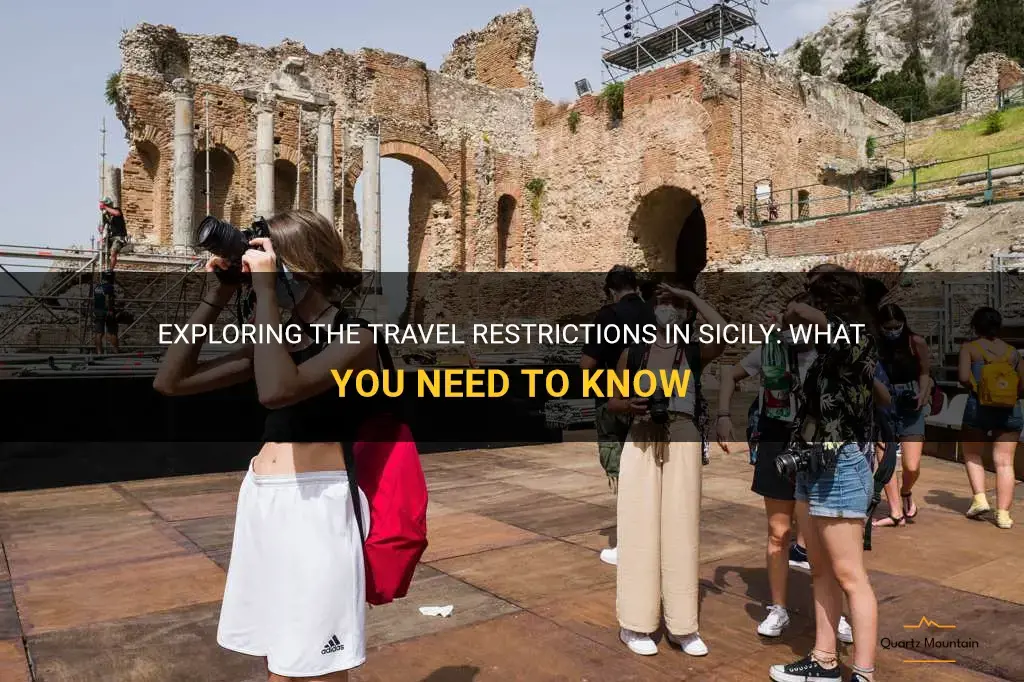
Imagine strolling through the charming, winding streets of Sicily, indulging in exquisite Italian cuisine, and soaking up the warmth of the Mediterranean sun. But wait! Before you pack your bags and jet off to this enchanting island, it's important to understand the current travel restrictions in place. Don't worry, we'll guide you through the necessary information, ensuring a smooth and unforgettable journey to Sicily.
What You'll Learn
What are the current travel restrictions in sicily due to the covid-19 pandemic, are there any specific requirements or documents needed for travelers entering sicily, are there any quarantine measures in place for travelers arriving in sicily, are there any specific restrictions on intercity or international travel within sicily, are there any exceptions or exemptions to the travel restrictions in sicily.

As the COVID-19 pandemic continues to evolve, travel restrictions are being implemented to control the spread of the virus. Sicily, a popular destination in Italy, has also put in place certain travel restrictions to ensure the safety of its residents and visitors. Here is an overview of the current travel restrictions in Sicily due to the COVID-19 pandemic.
Entry Requirements:
- COVID-19 Testing: All travelers entering Sicily, regardless of nationality, must present a negative COVID-19 test result taken within 48 hours before arrival. This applies to both vaccinated and unvaccinated individuals.
- Vaccination Proof: Travelers who have been fully vaccinated against COVID-19 must provide proof of vaccination. This can be in the form of a digital EU COVID-19 certificate, a vaccination certificate issued by an authorized healthcare provider, or an equivalent document from the traveler's country of residence.
- Quarantine: As of now, fully vaccinated travelers are not required to quarantine upon arrival in Sicily. However, unvaccinated individuals may be subject to quarantine measures based on the prevailing regulations at the time of travel.
Restrictions within Sicily:
- Curfew: A curfew is currently in place in Sicily from midnight to 5 am, during which time movement is restricted, except for essential reasons such as work, medical emergencies, and returning home after attending a religious ceremony.
- Face Masks: It is mandatory to wear face masks in all public spaces, including outdoor areas where social distancing cannot be maintained. This includes streets, squares, parks, and any other crowded spaces.
- Social Distancing: Travelers in Sicily are expected to maintain social distancing of at least one meter from others who are not part of their household or group.
- Public Transportation: Public transportation services are operating in Sicily, but there may be capacity restrictions to provide adequate spacing between passengers. It is advisable to check the specific guidelines of the transportation provider before planning any journeys.
- Gatherings: Gatherings and events, both public and private, may have limitations on the number of participants. It is essential to adhere to the guidelines set by local authorities and avoid any gatherings that exceed the permitted limits.
It is important to note that these travel restrictions are subject to change based on the evolving situation of the COVID-19 pandemic and the guidance of health authorities. Travelers are advised to stay updated with the latest information and guidelines provided by the Italian government and local authorities in Sicily before making any travel plans. Additionally, it is crucial to follow all health and safety measures, including practicing good hygiene, wearing masks, and getting vaccinated to protect oneself and others while traveling.
EUCOM Implements Travel Restrictions in Response to COVID-19 Pandemic
You may want to see also
If you are planning a trip to Sicily, it is important to be aware of any specific requirements or documents that may be needed for entry into the region. Whether you are traveling for business or leisure, it is essential to ensure that you have all the necessary paperwork in order to avoid any complications or delays upon arrival.
Valid Passport:
The first and most important document you will need is a valid passport. Make sure that your passport is not expired and has at least six months of validity remaining from the date of your arrival in Sicily. It is also a good idea to make a photocopy of your passport and keep it separate from the original, in case it gets lost or stolen during your travels.
Depending on your country of origin, you may need to obtain a visa before traveling to Sicily. It is crucial to check the visa requirements and apply well in advance to ensure that you have it in hand before your departure. The visa application process may vary depending on your nationality, so make sure to research the specific requirements for your country.
COVID-19 Restrictions:
Due to the ongoing COVID-19 pandemic, there may be additional requirements or restrictions in place for travelers entering Sicily. These requirements can vary and may include proof of a negative COVID-19 test result, a vaccination certificate, or completion of a health declaration form. It is essential to stay updated with the latest travel advisories and guidelines issued by the local authorities and the World Health Organization (WHO).
Travel Insurance:
While travel insurance is not a mandatory requirement for entry into Sicily, it is highly recommended. Travel insurance provides coverage for medical emergencies, trip cancellations, lost baggage, and other unforeseen events. It is crucial to choose a travel insurance policy that provides adequate coverage for your specific needs and verify that it includes coverage for any COVID-19 related expenses.
Additional Documents:
In addition to the above-mentioned documents, it is always a good idea to carry other supporting documents such as proof of accommodation reservations, return flight tickets, and travel itineraries. These documents help establish your purpose of travel and demonstrate that you have made proper arrangements for your stay in Sicily.
It is important to note that the requirements for entering Sicily may change periodically, especially during times of heightened security or health emergencies. Therefore, it is recommended to stay updated with the latest travel advisories and guidelines issued by the embassy or consulate of your country of residence and the Sicilian government.
Finally, it is also advisable to consult with a travel agent or immigration lawyer to ensure that you have all the necessary documents and have completed all the required formalities before your trip to Sicily. This will help ensure a smooth and hassle-free travel experience, allowing you to fully enjoy your time in this stunning region of Italy.
Germany Implements New Travel Restrictions Amid COVID-19 Surge
As the COVID-19 pandemic continues to impact travel worldwide, many countries and regions have implemented various quarantine measures to help control the spread of the virus. Sicily, a popular destination in Italy, is no exception. Travelers arriving in Sicily must adhere to specific quarantine measures to protect public health and safety.
One of the primary quarantine measures in place for travelers arriving in Sicily is the requirement for a negative COVID-19 test result. Prior to departure, travelers must have a molecular or antigen test taken within 48 hours of their arrival in Sicily. The test result must show that the traveler is not infected with the virus. This requirement aims to prevent individuals with active infections from entering the region and potentially spreading the virus further.
Upon arrival in Sicily, travelers may be subject to further screening and testing. This additional screening helps identify any potential COVID-19 cases that may have been missed by the pre-departure testing. Depending on the results, further quarantine measures may be required.
If a traveler's test result is negative, they are not required to quarantine upon arrival in Sicily. However, it is still essential for all individuals to follow general preventive measures, such as wearing masks, practicing social distancing, and maintaining good hand hygiene, to minimize the risk of contracting or spreading the virus.
In some cases, travelers may be selected randomly for a rapid antigen test upon arrival. This test, which provides quick results, helps identify any potential immediate infections. Travelers selected for this test must cooperate and follow the instructions given by the testing personnel.
If a traveler's test result is positive, they will be required to quarantine for a specific period. The duration of the quarantine may vary depending on the severity of the symptoms and the guidance from local health authorities. During the quarantine period, individuals must isolate themselves from others to prevent further transmission.
It is essential to note that quarantine measures in Sicily may change over time as the situation evolves and new information becomes available. Therefore, it is crucial for travelers to stay updated on the latest regulations and requirements before planning their trip.
In conclusion, there are quarantine measures in place for travelers arriving in Sicily. These measures include pre-departure testing, potential screening upon arrival, and quarantine for those with positive test results. Travelers should be prepared to comply with these measures and follow the guidelines provided by local health authorities to ensure the safety and well-being of themselves and others. By taking these precautions, we can all contribute to stopping the spread of COVID-19 and protect the health of the community.
Exploring Travel Restrictions for Individuals Facing Bankruptcy
As the COVID-19 pandemic continues to impact travel worldwide, it is essential to stay informed about any specific restrictions that may be in place for intercity or international travel within Sicily. These restrictions are put in place to ensure the safety and well-being of both residents and visitors. Here are a few important points to consider if you are planning to travel within or to Sicily:
Intercity Travel Restrictions:
Intercity travel within Sicily is generally not restricted; however, it is essential to follow any guidelines and regulations set forth by the local authorities. This may include wearing a mask in public spaces, maintaining social distancing, and avoiding large gatherings. It is advisable to check with local authorities or travel agencies for any specific restrictions that may be in place during the time of your visit.
International Travel Restrictions:
International travel to Sicily is subject to the regulations set by the Italian government. As of now, travelers entering Italy from certain countries may be required to undergo testing for COVID-19 and quarantine upon arrival. Additionally, travelers may be asked to provide proof of a negative COVID-19 test result taken within a specified timeframe before their departure. It is recommended to check the latest travel advisories and guidelines from both the Italian government and your home country before planning your trip.
Air Travel:
If you are planning to travel to Sicily by air, it is important to check with your airline for any specific requirements they may have in place. Many airlines require passengers to wear masks throughout their journey and may have additional measures such as temperature checks or health declaration forms. It is also advisable to check the status of any connecting flights or layovers to ensure smooth travel.
Public Transportation:
Public transportation within Sicily, such as trains and buses, is generally operational but may have reduced frequency or capacity. It is important to follow any guidelines set by the transportation authorities, including wearing masks, maintaining social distancing, and using hand sanitizer. It is advisable to check the latest schedules and any specific requirements before using public transportation.
Tourist Attractions and Accommodations:
Tourist attractions, hotels, and accommodations within Sicily are gradually reopening with safety measures in place. This may include limited capacity, advanced reservations, and enhanced cleaning protocols. It is recommended to check the official websites or contact the attractions and accommodations directly to inquire about any restrictions or guidelines they may have.
In summary, while intercity travel within Sicily is generally unrestricted, it is essential to stay informed about any specific guidelines or regulations that may be in place. International travelers should check the latest advisories and guidelines from both the Italian government and their home country. Adhering to these regulations will help ensure a safe and enjoyable travel experience within Sicily.
Understanding Quebec's Welfare Travel Restrictions: A Comprehensive Overview
As the COVID-19 pandemic continues to impact travel around the world, various regions and countries have implemented travel restrictions to control the spread of the virus. Sicily, one of the largest islands in the Mediterranean Sea and an autonomous region of Italy, is no exception. Travel restrictions have been put in place in Sicily, limiting entry and imposing quarantine requirements on travelers coming from certain countries or regions. However, there may be exceptions or exemptions to these travel restrictions in certain circumstances.
It is important to note that travel restrictions and exemptions can change frequently based on the evolving situation of the pandemic. Therefore, it is crucial to always refer to the latest information provided by official sources, such as government websites or travel advisories.
In general, travelers coming from high-risk areas or countries are subject to the travel restrictions imposed in Sicily. These restrictions may include mandatory quarantine upon arrival or the requirement of a negative COVID-19 test. The specific rules may vary depending on the risk level of the country or region of origin.
While many travelers are affected by the travel restrictions, there are a few exceptions or exemptions that may apply. These exceptions are typically based on essential travel or specific circumstances. Some common exceptions or exemptions to travel restrictions in Sicily may include:
- EU Citizens and Residents: European Union citizens and residents, regardless of their country of origin, are usually exempt from certain travel restrictions. However, additional requirements such as testing or quarantine may still apply.
- Essential Workers: Individuals who work in essential sectors such as healthcare, transport, or critical services might be exempted from some travel restrictions. Proper documentation or proof of their employment may be required.
- Diplomatic Travel: Diplomats and government officials traveling for official purposes are often exempt from travel restrictions. They are usually subject to separate protocols and procedures.
- Medical Treatment: Travelers seeking medical treatment or those accompanying someone for medical treatment may be exempt from certain restrictions. Proof of medical appointments or medical documentation may be necessary.
- Emergency Situations: In case of emergencies, such as family emergencies or humanitarian reasons, travelers may be exempt from travel restrictions. It is crucial to provide proof or documentation supporting the emergency situation.
While these exemptions may exist, they are subject to the discretion and decision of border authorities and officials. Travelers should contact the relevant authorities or consulates for detailed information and guidance regarding their specific situation.
It is important to note that even if exemptions apply, it is essential to follow all health and safety measures, including the use of masks, practicing social distancing, and adhering to local regulations and guidelines. The COVID-19 situation is constantly evolving, and it is vital to stay informed and updated on any changes or developments that may affect travel to Sicily or any other destination.
The Latest Travel Advisory: Restricted States for Your Next Trip
Frequently asked questions.
Yes, there are currently travel restrictions in place for Sicily due to the COVID-19 pandemic. The Italian government has implemented various measures to control the spread of the virus, and this includes restrictions on travel within the country and from other countries.
As of now, individuals traveling to Sicily from abroad are required to present a negative COVID-19 test result taken within 48 hours before their arrival. Travelers may also be subject to quarantine or additional testing upon arrival, depending on their country of origin. It is essential to check with your airline or local authorities for the most up-to-date information on travel restrictions and requirements.
Yes, you can travel within Sicily once you arrive, but there may still be some restrictions in place within the region. It is crucial to follow any local guidelines or restrictions regarding movement and ensure you are aware of any limitations or regulations on attractions, accommodations, and public transportation. It is also advisable to monitor the situation and stay updated on any changes to travel restrictions during your stay in Sicily.

- Kamilla Henke Author

- Pop Panupong Author Reviewer Traveller
It is awesome. Thank you for your feedback!
We are sorry. Plesae let us know what went wrong?
We will update our content. Thank you for your feedback!
Leave a comment
United states photos, related posts.

Halloween in Boston: A Spooky Guide to Fun Activities
- Jun 27, 2023

The Ultimate Packing Guide for an Amazing Trip to Mammoth
- Jan 15, 2024
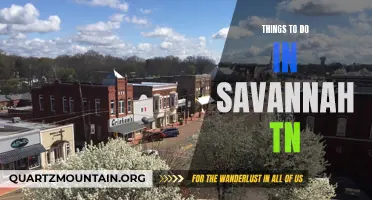
12 Must-See Attractions in Savannah, TN
- May 07, 2023
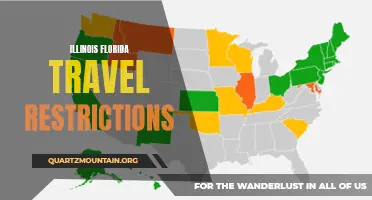
Understanding Travel Restrictions Between Illinois and Florida
- Sep 12, 2023

Essential Items to Pack for Your Bora Bora Vacation
- Dec 08, 2023

Essential Items to Pack for a Trip to Norway in April
- Jan 18, 2024

Search Smartraveller

Latest update
Exercise normal safety precautions in Italy.
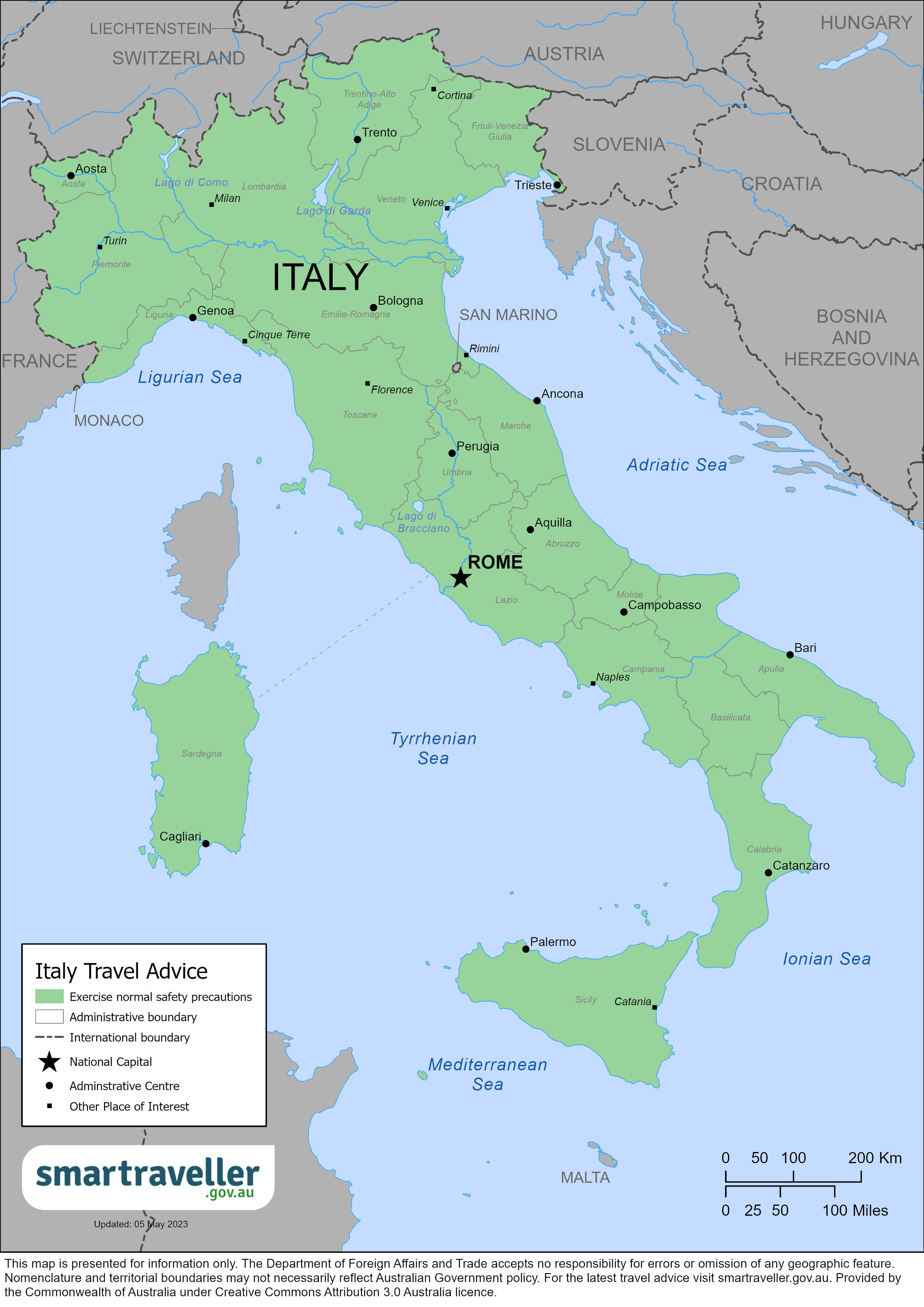
Italy (PDF 898.97 KB)
Europe (PDF 2.62 MB)
Local emergency contacts
Fire and rescue services.
Call 112 or 115.
Medical emergencies
Call 112 or 118.
Call 112 or 113.
European Emergency number
Advice levels.
- Petty crime is common. Be aware of pickpockets and bag snatchers at tourist spots and on transport, particularly at central train stations. Thieves often work in groups on trains. Take care of your belongings.
- Bombings against political targets happen. Avoid protests and crowds. Monitor local news.
- Always be alert to terrorism. Terrorists have targeted European cities, including transport hubs and places visited by travellers. Take official warnings seriously.
- Italy experiences earthquakes and volcanic activity. Large earthquakes cause landslides and avalanches. Forest fires are common from June to September. Monitor the media and follow the advice of local authorities.
Full travel advice: Safety
- If you need urgent medical assistance, call 112. English-speaking operators are available.
- Medical facilities are good in major cities and limited in rural areas.
- Australia has a Reciprocal Health Care Agreement with Italy. You can get treated in public medical facilities if you show your Medicare card and Australian passport. You still need travel insurance.
Full travel advice: Health
- You may be fined for littering, sitting, eating or drinking near churches and public buildings or in public spaces. Obey signs about conduct.
- Organised pub crawls are banned in some cities, including Rome.
- It's illegal to take photos of official buildings and military areas. Check with local authorities first.
- Don't buy fake brands and products from illegal street vendors. It's against the law.
Full travel advice: Local laws
- Several cities in Italy impose a 'tourist tax' per person for each night of stay. You pay this directly to your accommodation provider. You may also need to pay an access fee to visit Venice on a day trip from 25 April onwards. For more information, see advice from the Venice authorities - Venice Access Fee .
- Temporary border checks have been introduced at Italy's borders with Slovenia. You should allow extra time for crossing the land border between Italy and Slovenia.
- Italy is part of the Schengen area along with many other European countries, meaning you can enter Italy without a visa in some cases.
- Entry and exit conditions can change at short notice. You should contact the nearest embassy or consulate of Italy for the latest details.
- You may need to pay an access fee if you're visiting Venice.
Full travel advice: Travel
Local contacts
- The Consular Services Charter details what we can and can't do to help you overseas.
- For consular help, contact the Australian Embassy in Rome or the Consulate-General in Milan.
- To stay up to date with local information, follow the embassy's social media accounts.
Full travel advice: Local contacts
Full advice
Petty crime.
Petty crime is common, particularly in the summer and autumn tourist seasons. It includes bag snatching, pick-pocketing, passport theft and theft from cars.
Thieves are most active:
- in larger cities
- in and around major tourist spots
- on public transport
- at major airports
- at railway stations and bus terminals
- at beaches (including cars parked near beaches)
- at hotel reception areas
To reduce the risk of theft:
- take care of your belongings
- remain alert in tourist spots
- avoid walking in quiet and poorly lit streets, especially at night
Monitor local sources for advice about new safety or security risks.
Theft on trains
Theft is common on trains, including to and from Fiumicino airport near Rome and on overnight journeys.
Thieves often work in groups to distract victims and rob them while they're not looking.
On trains, they do this by:
- asking for directions while a train is stopped at a station
- dropping attractive items on the floor of the train
- blocking the view of overhead luggage racks
- throwing rubbish or sauce at the victim
Often, a member of the group will pretend to come to help the victim while others steal their valuables.
Check the Italian Public Security System site Polizia Di Stato for advice on how to avoid theft on trains.
Fraud and fake money
Credit card and ATM fraud happens, often involving 'skimming' machines. Monitor your bank statements.
To protect yourself from fraud:
- use ATMs in secure places, such as banks, shops and shopping centres
- keep your ATM and credit cards in sight
Police have warned that counterfeit European currency is in circulation. Check any notes you receive.
Spiking, robbery and assault
Tourists have been robbed and assaulted after consuming spiked food or drinks. This has happened in cities and towns, including Rome, Milan, Florence and Naples.
Some victims have been sexually assaulted or needed hospitalisation.
In Rome, many incidents have taken place:
- around Termini station
- in tourist areas, such as the Colosseum
- in bars and restaurants in the city centre
In Milan, such attacks happen in bars, nightclubs and other late-night venues.
In Florence and Naples, these attacks happen mainly near train stations and in bars and cafes in the city centres.
To protect yourself from drink spiking:
- never accept drinks from strangers
- don't leave food or drinks unattended
- stick with people you trust in bars and nightclubs
More information:
- Partying safely
Theft from cars
Vehicle break-in and theft is common. Many Australians have had belongings, including passports and other valuables, stolen from their parked cars.
Thieves steal from cars at traffic lights, rest stops, service stations and on the roadside.
Lock your car doors and keep luggage and valuables out of sight.
There are reports of thieves slashing tyres or staging roadside emergencies. They aim to persuade drivers to pull over and get out of their cars. While the driver is distracted, the thieves steal personal belongings.
Popular targets for thieves are unattended campervans or mobile homes either:
- parked at camping sites
- in the streets near historic sites
To reduce your risk of theft from your vehicle:
- don't leave valuables in your vehicle
- when you leave your vehicle, lock all doors
- try to use a secure parking facility, especially overnight
Cyber security
You may be at risk of cyber-based threats during overseas travel to any country. Digital identity theft is a growing concern. Your devices and personal data can be compromised, especially if you're connecting to Wi-Fi, using or connecting to shared or public computers, or Bluetooth.
Commenting on local or political events on social media can also be risky in destinations where there are social or political tensions, including commenting on laws that may seem unreasonable by Australian standards.
More information:
- Cyber security when travelling overseas
Civil unrest and political tension
Public protests and events that draw large groups of people can turn violent and spark violent unrest, demonstrations and riots.
To protect yourself from violence and unrest:
- avoid crowds and protests if you can
- monitor local media for possible unrest
- follow the advice of local authorities
- Demonstrations and civil unrest
Strikes are common.
They can cause building closures, particularly in tourist areas. They can also disrupt public transport, including air, shipping, train, bus, tram and taxi services.
Strikes may involve roadblocks and petrol station closures and can cause transport delays and cancellations.
Trenitalia (Italian) gives details on train disruptions. Call 89 20 21 in Italy or +39 0668745475 from outside Italy.
To avoid transport delays or missing flights:
- confirm flights or travel with your travel provider
- allow plenty of time for travel to airports and train stations
Political-based violence
Some violence occurs due to domestic social or political issues.
Bombings have occurred. Bombers have targeted:
- Italian police
- the offices of well-known politicians
- government institutions
- public and commercial buildings
While there have been no recent terrorist attacks in Italy, they can still happen.
In recent years, terrorists have staged attacks in several European cities. Targets have included public transport, transport hubs, and places frequented by foreigners.
European security services have also disrupted some planned attacks in recent years.
The Italian Government has reported that Italy is a potential target for international terrorist attacks.
Security measures are in place in and around major tourist attractions, including:
- the Vatican
- on cruise ships
- at airports, seaports and railway stations
To protect yourself from terrorism:
- be alert to possible threats, especially in public places
- take care around areas terrorists tend to target
- monitor the media for new threats
- take official warnings seriously
Report suspicious activity or items to the police.
If there's an attack, leave the area as soon as it's safe. Avoid the affected area in case of secondary attacks.
Terrorism is a threat worldwide.
Climate and natural disasters
Italy experiences natural disasters and severe weather .
In the event of a natural disaster:
- monitor the media
- keep in touch with friends and family
- check the Global Disaster Alert and Coordination System for updates
Forest fires
Forest fires often occur during summer, usually from June to September. They tend to happen in heavily forested regions. Wildfires can reach major towns during extreme conditions.
Forest fires can be unpredictable and dangerous. They can affect air quality in a way that harms your health.
Monitor the media for updates and follow the advice of local authorities. Visit the Italian Civil Protection Authority website for more information.
Storms and flooding
Heavy winter rains often cause widespread flooding and mudslides.
The areas most often affected are:
- the Veneto, Piedmont and Liguria regions in the north
- the Calabria and Sicily regions in the south
Flooding and mudslides can result in loss of life, destruction of property and evacuation of inhabitants.
Earthquakes
Italy is in an active seismic region and has several earthquakes each year.
Large earthquakes can cause landslides and avalanches. This can result in injuries, death and damage to infrastructure, homes and property.
When travelling in Italy, find out your hotel's earthquake procedure.
If there's been seismic activity in the area you're in or going to, check with your airline or travel provider about disruptions.
- earthquaketrack.com
- Civil Protection authority
- European Avalanche Warning Service
Italy has active volcanoes . These include:
- Mount Etna in Sicily
- Mount Stromboli and Mount Vulcano in the Aeolian Islands chain north of Sicily
Volcanic activity can cause travel disruptions, including temporary airport closures.
Fatalities have occurred from volcanic eruptions.
Travel insurance
Get comprehensive travel insurance before you leave.
Your policy needs to cover all overseas medical costs, including medical evacuation. The Australian Government won't pay for these costs.
If you can't afford travel insurance, you can't afford to travel. This applies to everyone, no matter how healthy and fit you are.
If you're not insured, you may have to pay many thousands of dollars up-front for medical care.
- what activities and care your policy covers
- that your insurance covers you for the whole time you'll be away
Physical and mental health
Consider your physical and mental health before you travel, especially if you have an existing medical condition.
See your doctor or travel clinic to:
- have a basic health check-up
- ask if your travel plans may affect your health
- plan any vaccinations you need
Do this at least eight weeks before you leave.
If you have immediate concerns for your welfare or the welfare of another Australian call the 24-hour Consular Emergency Centre on +61 2 6261 3305 or contact your nearest Australian Embassy, High Commission or Consulate to discuss counselling hotlines and services available in your location.
- General health advice
- Healthy holiday tips (Healthdirect Australia)
Medications
Not all medications available over the counter or by prescription in Australia are available in other countries. Some may even be considered illegal or a controlled substance, even if prescribed by an Australian doctor.
If you plan to bring medication, check if it's legal in Italy. Take enough legal medication for your trip.
Carry a copy of your prescription or a letter from your doctor stating:
- what the medication is
- your required dosage
- that it's for personal use
Health risks
Italy has experienced outbreaks of measles (World Health Organization). Make sure your vaccinations are up to date before you travel.
- Measles immunisation service
Insect-borne diseases
West Nile virus (WNV) (World Health Organization) cases have been reported. There's no vaccine for it.
To reduce your risk of insect-borne disease:
- make sure your accommodation is insect-proof
- use insect repellent
- wear long, loose, light-coloured clothing
Other health risks:
- COVID-19
Medical care
Medical facilities.
Medical facilities in major cities are of good standard. In regional areas, facilities may be limited.
Reciprocal Health Care Agreement
There's a Reciprocal Health Care Agreement between Australia and Italy.
Under this agreement, you can get care in Italian public medical facilities if:
- you have a sudden acute illness or accident
- your illness or accident happens in your first six months in Italy
To access care under this agreement, you must provide your Medicare card and Australian passport.
The Reciprocal Health Care Agreement doesn't replace the need for private travel health insurance.
It also doesn't cover treatment for ongoing health conditions you already had when you arrived.
Private medical care
Private doctors, specialists and diagnostic services will ask you to pay up-front.
Private hospitals generally require a large deposit before they will start treatment.
You're subject to local laws and penalties, including those that appear harsh by Australian standards. Research local laws before travelling, especially for an extended stay.
If you're arrested or jailed, the Australian Government will do what it can to help you under our Consular Services Charter . But we can't get you out of trouble or out of jail.
Penalties for drug offences are severe and can include long jail sentences.
- Carrying or using drugs
Conduct at tourist spots
Pay attention to signs about conduct around tourist areas in major cities, including Rome and Florence.
Officials may fine you for littering, sitting, eating or drinking on steps and courtyards around churches and public buildings or in public spaces in these cities.
Alcohol laws
Some cities, including Rome, have banned:
- organised pub crawls
- drinking on the street
- drinking in public places
Police have arrested Australians for disturbing the peace under these laws.
It's illegal to:
- block the pedestrian flow in public spaces
- drive without headlights on main roads outside urban areas or on highways - see Local travel
- buy fake brands and products from illegal street vendors
If you want to take a photo of an official building or military area, check with local authorities first.
The owner will ask you for a photo ID if you use an internet cafe. The law requires them to sight and keep an electronic record of their clients' photo ID.
Australian laws
Some Australian criminal laws still apply when you're overseas. If you break these laws, you may face prosecution in Australia.
Staying within the law and respecting customs
Dual nationality
Dual nationality is recognised in Italy.
Dual nationals
Visas and border measures
Every country or territory decides who can enter or leave through its borders. For specific information about the evidence you'll need to enter a foreign destination, check with the nearest embassy, consulate or immigration department of the destination you're entering.
Italy is part of the Schengen area along with many other European countries. This means you can enter Italy without a visa in some cases.
In other situations, get a visa before you travel.
Entry and exit conditions can change at short notice. Contact the nearest embassy or consulate of Italy for details about visas, currency, customs and quarantine rules.
Temporary border checks have been introduced at Italy's borders with Slovenia. Allow extra time when crossing the land border between Italy and Slovenia, and be ready to show your passport or residency card if you're asked to do so by the border police. Checks may also involve vehicle inspections.
Entry and transit rules may change at short notice. Read the travel advice for each destination (including transit) and check with the embassy or consulate of that country. Contact your airline or travel provider for the latest update on entry or transit rules before travelling.
Some countries won't let you enter unless your passport is valid for six months after you plan to leave that country. This can apply even if you're just transiting or stopping over.
Some foreign governments and airlines apply the rule inconsistently. Travellers can receive conflicting advice from different sources.
You can end up stranded if your passport is not valid for more than six months.
The Australian Government does not set these rules. Check your passport's expiry date before you travel. If you're not sure it'll be valid for long enough, consider getting a new passport .
Lost or stolen passport
Your passport is a valuable document. It's attractive to people who may try to use your identity to commit crimes.
Some people may try to trick you into giving them your passport. Always keep it in a safe place.
If your passport is lost or stolen, tell the Australian Government as soon as possible:
- In Australia, contact the Australian Passport Information Service .
- If you're overseas, contact the nearest Australian embassy or consulate .
Passport with 'X' gender identifier
Although Australian passports comply with international standards for sex and gender, we can't guarantee that a passport showing an 'X' in the sex field will be accepted for entry or transit by another country. Contact the nearest embassy, high commission or consulate of your destination before you arrive at the border to confirm if authorities will accept passports with 'X' gender markers.
- LGBTQIA+ travellers
The official currency of Italy is the euro (EUR).
You must declare amounts over 10,000 euro or equivalent if you're travelling between Italy and any non-European Union (EU) country, including all forms of currency, not just cash.
You don't need to declare cash if you're travelling to or from another EU country.
You'll be fined if you don't declare currency or give incorrect information on entry or exit.
ATMs are widely available across the country. Hotels, restaurants and shops accept international credit cards.
Local travel
Tourist tax.
Several cities in Italy impose a 'tourist tax' per person for each night of stay. You pay this directly to your accommodation provider, and it's often requested as a cash payment.
You may also need to pay an access fee to visit Venice on a day trip from 25 April onwards.
- Venice access fee
Driving permit
If you're not a resident, you'll need both:
- an Australian driver's licence
- an International Drivers Permit (IDP) or an official translation of the Australian licence
You must get your IDP before leaving Australia.
You must get an official translator (traduttore giurato) to translate your licence in Italy. Find a list of official translators in the Italian Yellow Pages .
If you take up legal residence (residenza) and stay more than 1 year, you must apply for an Italian licence. Italy doesn't allow you to convert your Australian licence, meaning you'll have to take written and driving exams in Italian. You can do the exam in German or French in some cases.
Contact an Italian embassy or consulate to find out about obtaining an Italian driver's licence.
Road travel
Driving can be dangerous. Driving conditions are disorganised compared to Australia.
By law, you must use headlights on main roads outside urban areas and highways, including during the day.
On-the-spot fines apply for some minor traffic offences.
Many municipalities have outsourced traffic fine collection to European Municipal Outsourcing (EMO).
- Driving or riding
Traffic restricted zones
Limits on car access to the city centres exist to help reduce traffic. They are traffic-restricted zones (ZTL). Be aware that:
- ZTLs and their hours of operation vary from city to city
- fines apply if cars don't carry a ZTL pass in a ZTL zone
- hire cars usually don't have a ZTL pass
If you're staying in the centre of an Italian city, ask your hotel or host about traffic restrictions. You can also check the website of the relevant municipality (comune) before you arrive.
Driving in summer and winter
You must use snow tyres or chains in some mountainous regions or areas where snow is common.
Road signs will indicate if they are mandatory.
Authorities may fine you if you don't have the right snow gear for your car.
In summer, only residents can take their cars to the islands of Capri, Ischia and Procida.
Travel by foot
Italy has regular pedestrian fatalities. Drivers often fail to give way to pedestrians, even though they have to under Italian law.
Take care when crossing roads, even at pedestrian crossings.
Motorcycles
Check whether your insurance covers you when using a motorbike, quad bike, or similar vehicle.
Always wear a helmet.
Only travel in licensed taxis with signage, roof lights and meters.
Unauthorised taxis don't carry meters and overcharge.
Public transport
There are frequent strikes that cause delays and cancellations to public transport services. See Safety
Pre-paid tickets are available from tobacconists or coffee shops that display the public transport company's logo/name. They are also sometimes available for purchase through a smartphone app.
You'll find ticket machines at every metro and major train station.
In some cities, you may purchase a ticket using contactless card payment immediately upon boarding a bus.
When catching public transport, validate your ticket:
- before boarding a train or a metro
- on board a bus or tram as soon as you get on
If you don't, you could get an on-the-spot fine.
- Transport and getting around safely
DFAT doesn't provide information on the safety of individual commercial airlines or flight paths.
Check Italy's air safety profile with the Aviation Safety Network.
Emergencies
Depending on what you need, contact your:
- family and friends
- travel agent
- insurance provider
Always get a police report when you report a crime.
Your insurer should have a 24-hour emergency number.
Consular contacts
Read the Consular Services Charter for what the Australian Government can and can't do to help you overseas.
For consular help, contact:
Australian Embassy Rome
Via Antonio Bosio 5 00161 Rome, Italy
Phone: +39 06 85 2721 Email: [email protected] Website: italy.embassy.gov.au Facebook: Australian Embassy, Italy X: @AusAmbRome
Australian Consulate-General Milan
3rd Floor Via Borgogna 2 20122 Milan, Italy
Phone: +39 02 7767 4200 Email: [email protected] Website: www.austrade.gov.au/en/contact-us/international-offices/italy
Check the Embassy website for details about opening hours and any temporary closures.
24-hour Consular Emergency Centre
In a consular emergency, if you can't contact an embassy, call the 24-hour Consular Emergency Centre on:
- +61 2 6261 3305 from overseas
- 1300 555 135 in Australia

Travelling to Italy?
Sign up to get the latest travel advice updates..
Be the first to know official government advice when travelling.
Cookies on GOV.UK
We use some essential cookies to make this website work.
We’d like to set additional cookies to understand how you use GOV.UK, remember your settings and improve government services.
We also use cookies set by other sites to help us deliver content from their services.
You have accepted additional cookies. You can change your cookie settings at any time.
You have rejected additional cookies. You can change your cookie settings at any time.
Register to vote Register by 18 June to vote in the General Election on 4 July.
- Passports, travel and living abroad
- Travel abroad
- Foreign travel advice
Warnings and insurance
This travel advice page also covers the Vatican City.
The Foreign, Commonwealth & Development Office ( FCDO ) provides advice about risks of travel to help British nationals make informed decisions. Find out more about FCDO travel advice .
Before you travel
No travel can be guaranteed safe. Read all of the advice in this guide and and any specific travel advice that applies to you:
- women travellers
- disabled travellers
- LGBT+ travellers
Follow FCDO travel on, Twitter , Facebook and Instagram . You can also sign up to get email notifications when this advice is updated.
Travel insurance
If you choose to travel, research your destinations and get appropriate travel insurance . Insurance should cover your itinerary, planned activities, and expenses in an emergency.
Related content
Is this page useful.
- Yes this page is useful
- No this page is not useful
Help us improve GOV.UK
Don’t include personal or financial information like your National Insurance number or credit card details.
To help us improve GOV.UK, we’d like to know more about your visit today. Please fill in this survey (opens in a new tab) .

Italy travel requirements 2024: What travelers need to know
We aim to keep this post updated about Italy travel in 2024 with official Italy travel restrictions, requirements, and health and safety guidance. Our goal is to help you make informed decisions so you can travel confidently, safely, and responsibly in this new post-pandemic world of ours.
Italy has a special place in our hearts, and we finally returned in Fall 2022.
As restrictions vary based on the traveler’s citizenship, we will focus primarily on rules affecting U.S. citizens.
Last update: January 28, 2024. Originally published: July 2020.
* Get our free Post-Pandemic Travel Checklist *
Photo credit: Annalisa, Rome January 2024: “Tourism in Italy right now is flourishing, and although it is low season, there is a considerable amount of travelers both in art cities such as Rome, Florence, and Venice, and in small villages. In tourist spots such as museums and archaeological areas there are no restrictions of any kind, except in cases of overbooking such as for the Colosseum in Rome, so I recommend booking tickets at least two months in advance. The business of restaurants, hotels, and vacation homes is normal and busy. Access to health care takes place as usual, with regular and free access to checkups and treatment through hospital emergency rooms for Italian residents and nonresidents. As for Covid tests, although they are not required by any tourist facility, they can be done in all Italian pharmacies for a cost of €10-15.” -Annalisa of Rome Travelogues , Resident of Italy
At the end of the post, we share on-the-ground perspectives from local residents and travelers to Italy so you’ll get a true sense of what to expect.
Table of Contents
Can US citizens travel to Italy? Can I travel to Italy right now?
Italy is open to all travelers, including US citizens who are traveling for tourism.
As of June 2022 , all travelers, including US citizens are no longer required to show a vaccination, recovery, or test certificate upon arrival to Italy. All travelers can enter Italy without quarantine.
Most Italy travel restrictions have been lifted as of May 1 for activities inside the country. See regional restrictions here and regional zone classifications here .
Visitors from over 60 visa-exempt countries , including the U.S., will soon be required to have a European Travel Information and Authorisation System (ETIAS) travel authorization to enter Italy and other European countries . The start date has been delayed from 2024 to 2025.
See details about ETIAS here
Quarantine rules in Italy: What happens if I get Covid?
Travelers are not required to quarantine upon arrival in Italy.
For those who test positive for Covid while in Italy, self-isolation for five days or until testing negative, followed by masking up to 10 days, was the latest requirement. More recently, locals report that quarantine is no longer being enforced.
Italy Green Pass Requirements to Enter Restaurants, Attractions and Large Events
You might be wondering: Do I need a vaccine certificate or Covid test to enter restaurants and attractions in Italy?
Italy’s green pass (basic or super green pass) is no longer required to access restaurants, businesses, public transport, or participate in certain activities.
However, the Super Green Pass is still temporarily required for anyone age 12 and older to access hospitals or care homes.
Can Americans travel to Italy in June 2024? Can US citizens travel to Italy this Summer?
Travel to Italy in June is open . Read on for details and check back for updates.
What is it like to fly to Italy FCO or CIA Rome International Airport right now? In Rome, body temperature checks through thermo scanners may be taken at the entrance of the airports. The airports sanitize their spaces daily.
For travelers entering Italy from other countries, check with your airline about current mask requirements on board.
Do Americans have to quarantine when traveling to Italy? Quarantine is not required upon arrival.
See details above.
Does Italy check COVID-19 symptoms of incoming travelers? Body temperature may be scanned in the airports for inbound and outbound travelers.
Does Italy require a negative Covid 19 test for American travelers? A negative Covid test is no longer required to enter Italy.
Does Italy require a proof of Coronavirus vaccine for American travelers? Proof of Coronavirus vaccine is no longer required to enter Italy.
Do I still need to provide a negative Covid test or quarantine if I have been vaccinated? Neither proof of vaccination, negative test, nor quarantine are required to travel to Italy.
Is a booster shot required for travel to Italy? A booster shot is no longer required to enter Italy.
However, a booster shot is needed for the US vaccination card to be considered a valid Green Pass to enter healthcare settings while in Italy. See Green Pass Requirements above.
What Covid testing options are available for travelers in Italy? PCR and antigen tests are available for U.S. citizens and visitors in Italy. Antigen tests cost approximately 20-30 euros while PCR tests can cost around 70.
Individuals in Italy can get a Covid test from the following:
- Government-approved testing labs
- Testing facilities with English-speaking doctors in Italy
- On-site testing facilities at international airports in Italy, such as Milan, Rome Fiumicino, Cagliari, Florence, Malpensa, Bari, Venice, Pisa, and others.
- Private testing labs and pharmacies in Italy
What healthcare options are available to travelers in Italy who get the virus? Tourists and visitors may access Italian health care and emergency services by paying out of pocket or with privately purchased travelers’ insurance. Tourists can also contact the Italian Covid hotline at 1500 (free toll number).
For travel insurance that covers Covid, check out Nomad Insurance by Safety Wing >
What service businesses and restaurants are open in Italy? Bars, restaurants and all other establishments are open. Both indoor and outdoor dining are allowed.
Are face masks required in Italy? As of October 2022, wearing of masks in Italy is no longer mandatory except in healthcare settings.
Are buses and trains running in Italy? Public transportation is available throughout Italy at normal capacity. Masks are no longer required on buses, trains, etc.
Will Italy impose new Covid restrictions? What’s next is difficult to predict. Historically, most countries impose COVID-19 restrictions when strains on the health care system might become unsustainable.
How has the Coronavirus impacted Italy?
Italy was the first country in Europe affected by COVID-19 and was hit hard by the outbreak, requiring strict lock downs. Another large spike in cases occurred at the end of October 2020. A nationwide state of emergency continued through 2022.
Italy’s economy, which includes a large tourism sector, has faced its deepest recession in history. More than 200,000 tourism-related jobs were discontinued in Italy by the end of 2021– accounting for a massive shortage of workers in the country.
In May 2021, Italy formally opened its borders to international travelers from select countries to revive tourism. In June, Italy eased its restrictions for international travelers, then tightened somewhat due to the Delta variant and Omicron variant.
Italy’s state of emergency ended on March 31, 2022.
Italy obtains its vaccines via an EU procurement program. On December 27, 2020, Italy vaccinated the first residents against COVID-19. Currently, three quarters of Italians are fully vaccinated.
For the current situation in Italy – including how bad is covid in Italy today, total COVID-19 positive cases; daily number of cases in Italy; and COVID-19 recovery rates in Italy, please see the statistics here .
What should you pack for safely traveling in Italy?
😷 Face Masks – Face coverings are recommended in public spaces and required in healthcare settings. Find N95 masks at Bona Fide > or designer options at Vida >
💊 Medicine – Bring enough prescription and over-the-counter medication for your entire trip to avoid trips to the clinic.
💳 Vaccine Card Holder – Protect that paper CDC card when traveling abroad (if your country doesn’t offer a digital version). Get a simple plastic protector > or Vegan leather clippable > or Leather passport + card combo holder >
👃 Covid self-test – The most studied rapid antigen self-test with FDA emergency authorization. NOT valid to enter countries. Use for your own peace of mind. Order from CVS > or Walmart >
💧 Sealed water bottle – Make sure your reusable water bottle has a lid that’s not exposed to the air. We use one of each of the following: Shop insulated water bottles with protective lid > Shop water bottles with purification filter and protective lid >
✈️ Travel insurance that covers Covid – We’ve started using Nomad Insurance by Safety Wing for affordable evacuation, international medical, and trip coverage.
What do Italian locals and recent travelers say about visiting Italy now?
What is it like to visit Italy right now? It’s our goal to provide regular updates here from real people on the ground, to help potential visitors know what to expect.
The following are subjective opinions only. Official travel guidance can be found above.
October 2023 – Louisa Loring of EatingAroundItaly , resident of Italy: “Expect to come to Italy and travel as freely as before the COVID pandemic. Currently, there are no laws or recommendations for masking, social distancing or public gatherings. Today, all historic monuments are open as usual without restrictions.
There is no requirement for those who show symptoms. The Italian public healthcare system has removed its state of emergency and it’s easy to access the emergency room.. Private healthcare facilities are free to test patients if they choose too.
Since COVID, there has been an enormous increase in pre-bookings for museums in Italy. Although not all museums require that you pre-book, most people do and it can save you a lot of time waiting in line. Most museums have an easy and hassle free online booking system with paperless tickets.”
September 2023 – Linda of insieme-piemonte.com , resident of Italy: “Italy has, especially in summer, many crowded places. However, beautiful Piedmont, in the northwest of the country, remains a hidden gem: cheap, hospitable and visited by Italians at most in high season.
At the moment, Covid is no longer an issue. There are no restrictions or protective measures. During the pandemic, however, very strict rules prevailed throughout the country, including house arrest for several weeks.”
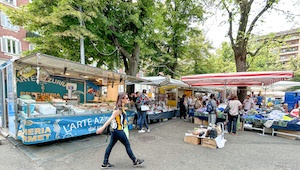
June 2023 – Natalie Deduck of Best of Turin , visitor: “My husband and I come to Turin to stay a month and later travel to other destinations in Italy.
The main tourist destinations such as Rome, Amalfi Coast, Florence, and Milan are receiving a tremendous influx of tourists this Spring and Summer. We are glad that we choose Turin for our longer stay. It is an incredible destination but not as famous as the other places, so here we can enjoy all the best of Italy without hassling with crowds.
Since I landed in Italy, I didn’t see any advice or signals about Covid measures or how to behave in public spaces. No one wears masks, and businesses are open as usual, including bars, restaurants, clubs, museums, and open-air markets.
Everything is pretty much back to normal. My husband and I lived in Turin in 2019 and 2020 during the pandemic. We experienced Italy in its worst moment, and it’s so good and heartwarming to see life back to what it was before the pandemic.”
January 2023 – Zoe of Together In Switzerland, EU visitor: “For our visit to Como, Italy for 2023, the location was pretty busy and lively. All shops and restaurants are open and seemed like a good mix of locals and tourists.
It’s not mandatory, but many do choose to wear a mask such as on the local bus or when in the main shopping area. There were absolutely no checks during our whole visit in Como, however you do see that local stores do still have a those plastic protection areas at the cashier tills and hand sanitizers is available at entrances. We personally didn’t see many people using these and no minimum space was needed. The only crowded area we encountered was for a busy local restaurant that everyone wanted to eat at.”
October 18 2022 -Michelle, Intentional Travelers: “Italy’s tourism feels back in full force and daily life has resumed as normal. Some people wear masks in grocery stores, trains, or other public areas but not many. On the train back to Rome airport, we saw staff sanitizing handrails in all the train cars. Lines at FCO airport seemed typical, and we passed through check-in, security and customs relatively quickly (25 minutes) on a weekday morning. We didn’t have to show any Covid documents, only passports.”
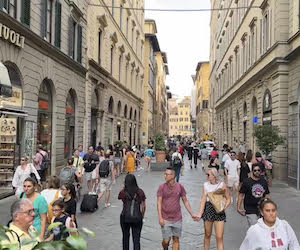
September 2022 – Michelle, Intentional Travelers: “We flew into Florence, Italy and took trains through Tuscany in September. To enter Italy, we only needed our passports. Air Dolomiti airlines required masks on the flight.
The Florence airport tram into town had signs that masks were required but maybe 50% of people were masked. Around Florence, it is as busy as ever and highly recommended to make reservations for big attractions in advance. Masks were still required on the regional trains in Italy, enforced by staff and audio announcements. Otherwise, tourism does seem back to normal.”
June 3, 2022 – S.M, American digital nomad – “I flew today to Rome from Croatia. They didn’t ask for anything covid related. No test or vax cards. But we had to wear N95 mask on the plane, that’s it.”
May 2022 – Lyndsay at thepurposelylost.com : “I’ve been living in Italy and exploring the country for six months now, and the past few days were the busiest I’ve seen the cities! As the weather gets warmer, we’re expecting an uptick in tourism, which is definitely what I’ve encountered so far. Tourists are eager to experience la dolce vita again!
Although you don’t need to wear a mask walking around outside, masks are still required on public transportation like busses, metros, and trains, and highly encouraged for all inside spaces like restaurants and shops. You’ll even find a mix of people wearing masks at public outdoor events.”
March 24, 2022 – Heather American/Italian dual citizen: “I flew into Rome and then proceeded to take several trains and a bus to get to a tiny village in Abruzzo where I will be living for the next five months. Masks are required inside all buildings, and most buildings have signs indicating you need to show a Super Green Pass for entrance. Trains and buses did check for my Super Green Pass and my CDC card showing my booster was accepted readily.
Italians are still taking things pretty serious, regarding masks, etc.”
March 2, 2022 – Sarah Wilson of Life Part 2 and Beyond , British visitor: “I’m in Florence for 10 days learning Italian. I was surprised how many tourists were here over the weekend. Queues were long to many of the major sites. They do check your Green Pass every time you enter a tourist attraction, and restaurant. Some shops also insist on seeing your Green Pass but not all. Masks are being worn inside but not needed outdoors.
There are plenty of pharmacies, many offer COVID testing or the rapid antigen tests. All the pharmacists in a city like Florence speak great English. To reduce waiting in line, I recommend booking attraction tickets online in advance.”
Candice of Mom in Italy , Permanent Resident: “It’s a nice time to visit because you can visit places like the center of Florence and its museums without any crowds.
We’ve also been visiting smaller villages like Pienza, Montepulciano, and San Gimignano, but they’re a little too empty. Almost all shops and restaurants are closed, due to the lack of local visitors. For anyone thinking of coming to Italy right now, I’d stick to the bigger cities, where you’re guaranteed to find things open and still full of Italian ‘vita.’
Throughout the entire pandemic, I’ve been impressed by the cooperation of Italians. People here wear masks when/where required and for the most part, respect the rules. Visitors need to follow the rules too – for example, if you don’t have the Green Pass here, you can’t sit down in an indoor restaurant. Owners don’t distinguish between locals and tourists – everyone has to have their Green Pass scanned or checked.
It’s easy to get tested in Italy – there are private clinics and you can also get tested in pharmacies. You can also get English translations easily. It’s not a great time to come to Italy if you aren’t vaccinated (or have proof of recovery from COVID within the last 6 months). Pretty much anything you’d want to do as a tourist right now requires the Green Pass.
We haven’t found any long lines or crowds, although I expect there will be an influx of visitors in the spring because Italy’s precautions help make it a less risky destination and people are ready to come back to Italia!”
January 2022 – Claudia of Strictly Rome , Italian resident: “All attractions and places of interest for tourists are currently open in Italy. Visits to restaurants typically start with the staff coming to the table to check your “green pass” (the Italian vaccination card). Much like locals, tourists are required to show proof of vaccination or of having recovered from Covid to access attractions, restaurants, hotels and transport – including trains and local / city buses. Everyone in Italy follows the rules, wearing masks wherever required and showing their vaccination card to access public places, restaurants, attractions, transportation and the like. Antigen tests are available at any pharmacy, best if upon booking and depending on the city and region in Italy there may be a line to get tested. Access to health care remains free for everyone on Italian territory, including visitors. You will be significantly better off making restaurant reservations as with Covid restrictions and social distancing availability for tables in popular tourist destinations may be limited.”
December 2021 – Or of My Path in the World , Israeli traveler: “I flew to Turin for a one week leisure trip in December 2021. I felt very safe in Turin as everything was well organized and it seemed like the locals were determined to live “normally” again. Everyone follows the current restrictions, and some people even wear masks outdoors though it’s not mandatory. You can’t enter a museum or a restaurant without your Green Pass being scanned (unless you’re sitting outside), and some attractions require a reservation in advance because you need to pick a specific timeslot for your visit. There are quite a few places for covid tests, and a PCR test for your flight back home will cost you about 70 Euros.”
November 30, 2021 – Morgan Fielder, Crave the Planet , E.U. expat: “It’s so great and easy to get reservations at awesome restaurants with fewer tourists. The airports in Italy have gotten more efficient and travel has been extremely easy since August if you are vaccinated and keeping your mask on appropriately. Yes, people follow the rules. Access is good to hospitals and if there’s any hint of problems, then businesses and events have gone to only letting in vaccinated or recovered people. Contract tracing is done via app when you go inside a venue or restaurant.”
September 20, 2021 – Sarah Wilson , British expat in Malta: “I was in northern Italy at the beginning of September for two weeks and now I’m in Sicily until the end of the month. The locals are very welcoming. It’s been a tough time for many businesses in Italy, so they are very happy to receive tourists. I literally had Rome to myself, so if you enjoy travelling without the crowds, now is the time to visit. To enter any restaurant, museum or tourist site, you do have to show your vaccine certificate. Some places like the restaurants in Lake Como also asked for your name and phone number. Masks are worn on all public transport and indoors and majority comply. Sicily has recently turned yellow which means masks are supposed to be worn indoors and outdoors – very few wear them outdoors – it’s too hot.”

August 2021 – Abigail, American traveler : “I went to Italy for a weekend. I felt safe and all of the stores were open. There was a green pass that people used to dine indoors, however since I’m a US Citizen I did not have one. Instead I showed my vaccination card, and it was asked for at every establishment. They did not ask for the Covid pass for public transport for Venice or Milan during my stay. For sit down restaurants, they wouldn’t let you in the door if you could not show vaccination. I did see a lot of seats for outdoor dining everywhere I went though.”
August 2021 – Caroline A., South African/Italian visitor: “My husband, 7 year old son, 4 year old daughter and I are in Rome for three months for an adventure as we have dual citizenship. Tourists are very much welcome in Rome at the moment although museums are requiring the green pass to enter. Since we are not vaccinated, we have been getting tested for entering museums, which lasts 48 hours. Testing is widely accessible. Most attractions are open for visits with covid protocols in place. There is a festive mood in the air as many people take their vacation over this time. It is wonderful not to have to wear a mask outside.”
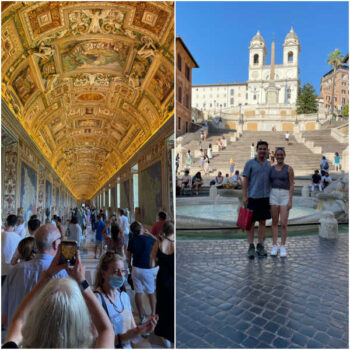
July 2021 – Kathryn, American Traveler: “I flew from Spain to Naples, Italy and stayed 2 days in Positano, 2 days in Sorrento, and 4 days in Rome. The locals were happy to have patrons in their cafes and restaurants. We had several people tell us how happy they are to see return of tourism. All public transportation was running as it would pre-pandemic (masks always required). We took planes, trains, taxis, boats and buses with no restrictions. Some restaurants required you to write down name, phone number, country of origin for contact tracing. Otherwise, no restrictions for outdoor dining and tables were quite close to each other as you would typically experience in Europe. Indoor dining often had more space between tables to allow for social distancing. In Rome, there were quite a few walk-up COVID testing tents throughout the city to use if needed. Rome sights were much less crowded than what I’ve experienced past summers. All major tourist sites were open. They offered both advance tickets and walk-up (usually wouldn’t be possible due to large numbers of tourists in the summer, but with less tourists this year it was possible to purchase day-of tickets). They had temperature checks at most major sites and required masks if indoors.”
June 2021 – Alexander and Cynthia, Travel your Memories , Dutch visitors: “We flew to Rome and visited for 4 days. After Rome we travelled to Florence for 2 days. Because you can do many activities outside, Italy is prefect to travel to at the moment. The population pays very close attention to the guidelines of COVID. All sights have been adjusted accordingly. Only a maximum number of people are allowed in the shops (depending on the size). If you get cold symptoms, you can go to a test street. For major sights it is important to book your ticket in advance because you have to fix a time slot.”
May 2021 – Sarah, Benvenuti Arts, American: “I have a visa as I’m here to teach at a University, and traveling into Italy felt joyful! The crew on the flight were so happy to see us all, and there were only about 30 passengers on the plane. The customs officials were very nice and the people doing COVID-testing in the airport were very friendly. While the rules, as read, seemed more strict than the US, I’m noticing people’s interpretation of those rules is just as scattered as in my country. I happened to arrive right when they reopened after the Easter lockdown, and people seem to be thrilled to be outside. We wear masks in all public areas, and there is no indoor dining, so in general it feels safe. But I am finding myself a bit overwhelmed by crowded areas, like places where students hang out. That’ll take some time to get used to again! I would say, if someone is traveling soon, be respectful and be overprepared. Rules were changing weekly in the lead up to my visit, so I have so much documentation printed that I haven’t needed. Everything takes a bit more preparation than you might be used to in Italy, too. Some restaurants require reservations. Museums are open, but with timed, pre-reserved tickets. There is no indoor dining. There’s a curfew. I am usually loose with my planning when I travel, but am doing more of it just because it’s required. But the food is amazing, the people are lovely, and the city is beautiful, so even with some adaptations, it’s amazing to be here!”
April 2021 – Chicca, Cooking in Tuscany , Italian resident: “We have been living a lockdown life since October – I have to say we’ve got so use to it. But just these days our prime minister has announced to relax some of the strict coronavirus measures starting April 26. The vaccination plans are rolling out quite consistently to have the majority of the population vaccinated by this summer. I read here and there that maybe borders will be opening first to Europeans and then to Americans. We don’t know when but, yes, I start dreaming of having visitors again.”
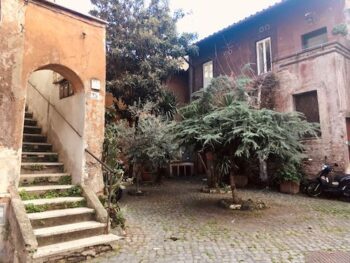
January 2021 – Clotilde, A Princess Travelling with Twins , Italian living abroad: “I flew to Rome, with my husband and our twins over the Christmas period for 10 days to visit family. People working in the tourist sector are really welcoming and try their best to respect, and make customer respect, the rules and regulations. They have been suffering a lot from the lack of tourists and all the imposed restrictions, so they are happy to see tourists coming back but other people are more cautious. News of the new variants of the virus have particularly made people more alert. The biggest issue when travelling to Italy right now is the rules change really quickly, the country can ban specific countries without warning as happened over Christmas with people coming from the UK. On top of that, each Italian region is defined by a colour depending on the level of the infection rate. This reflects also in services opening times that change unexpectedly and often forget to update their websites or search engines. For example you could be stranded at the airport wondering what to do as the rental car office where you booked your vehicle has closed and the curfew time is approaching, as happened to us! “
September 2020. Rebecca Ann Hughes, journalist – permanent resident of Venice: “Tourist numbers in Italy have been low all summer. For those who come to visit, they are seeing popular tourist destinations as never before, but many businesses are struggling. Locals whose work is fed by tourism are eager to welcome back visitors but many of them, along with those who do not work in the tourism sector, are pushing for a change in tourism. Particularly in Venice, they want visitors who travel “slow”, who are respectful, and who interact with the community. This includes following COVID regulations imposed by local councils and the government. Recently, a tourist on a vaporetto (waterbus) in Venice refused to wear a mask, angering locals and causing a fight to break out. Visitors should be well prepared to follow the regulations in Italy, even if they differ from their home country.
Most tourist attractions, public transport, restaurants, bars and other amenities are open and functioning as normal, albeit with social distancing rules and the obligation to wear a mask. It is possible that some tourist attractions will require advanced booking and may have longer queues if the venue is taking temperatures upon entry. Visitors may often have their temperature taken when entering a restaurant. When entering a building or getting on public transport, use hand sanitiser if it is provided. Testing booths have been set up in many airports and visitors can download a contact tracing app for Italy.”
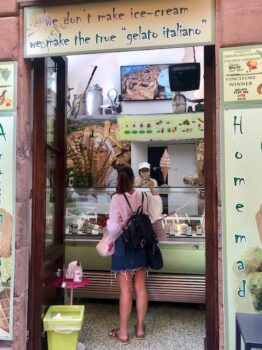
Planning a trip to Italy?
Check out our other Italy travel resources: – Self Guided Walking Tour of Florence – Lucca Day Trip Guide & Walking Tour – A Guide to Tuscany’s Etruscan Coast – Cooking in Tuscany Classes – Hiking Cinque Terre Itinerary – Packing List for Europe in Fall/Winter – 7 Hidden Gem Towns on Tuscany’s Coast – Best Beaches in Tuscany Italy – Tuscany Castles to Rent or Visit – Why Visit Italy in September
If you have questions or updates about travel to Italy during the Coronavirus crisis or post-pandemic, please let us know in the comments below.
~ Pin this post for later or share with friends ~
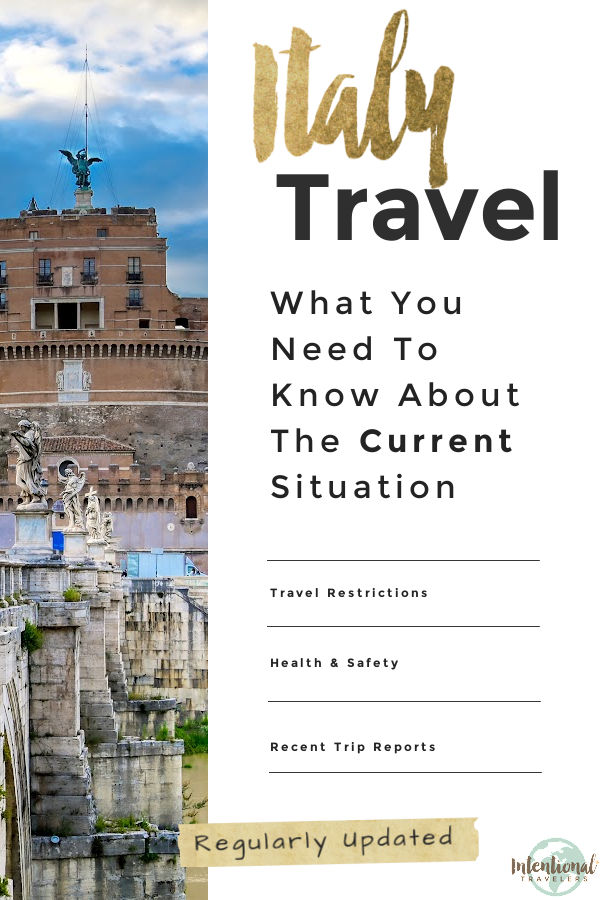
Disclaimer: Please note, travel restrictions change frequently. Readers must take responsibility for verifying information through official sources like the State Department and CDC, in respect to their specific situations. No responsibility can be accepted by Intentional Travelers for action or inaction as a result of information provided through IntentionalTravelers.com. Any information provided here is issued as general information only.
Similar Posts
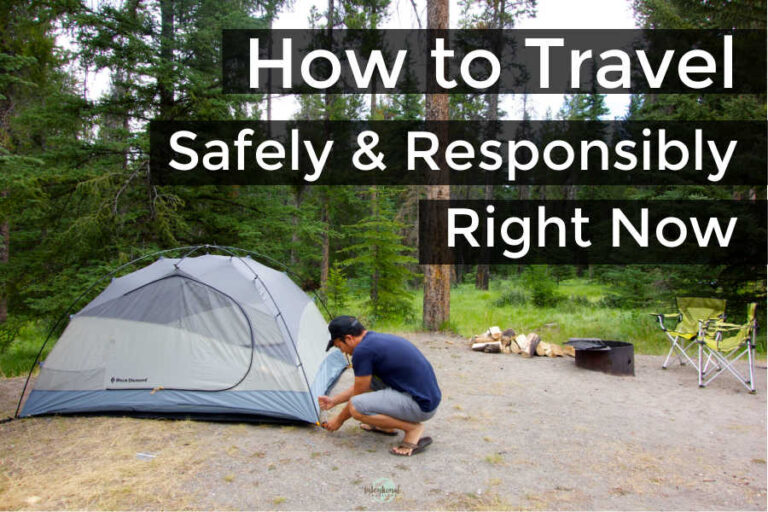
How to travel safely and responsibly in 2022 and beyond
Wondering how to travel safely during COVID-19? Many of us are longing to travel again, but only if we can do so safely and responsibly. We’ve put a lot of thought into the safest ways to take a vacation right now. And we plan to continually update this post with safe travel ideas and tips,…
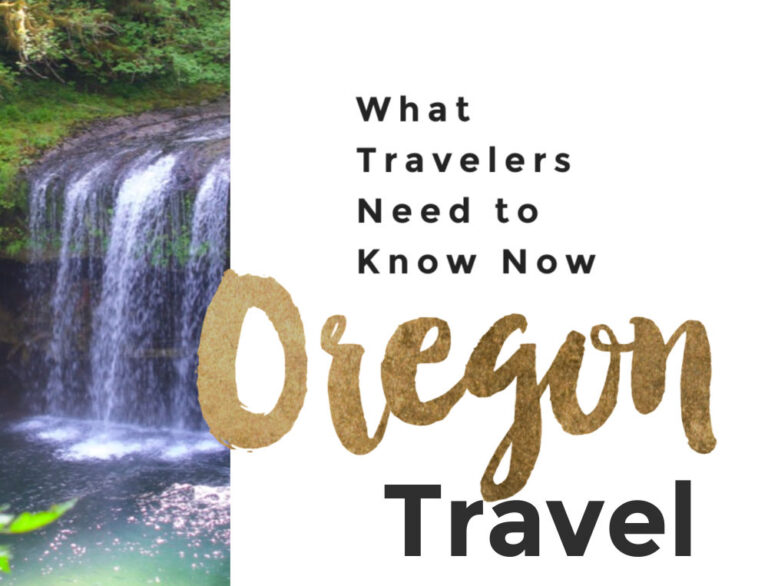
Oregon travel requirements 2024: What travelers need to know
We aim to keep this post updated about Oregon travel in 2024 with official Oregon travel restrictions, requirements, and health and safety guidance. Our goal is to help you make informed decisions so you can travel confidently, safely, and responsibly in this new post-pandemic world of ours. We are Oregonians so this destination is very…
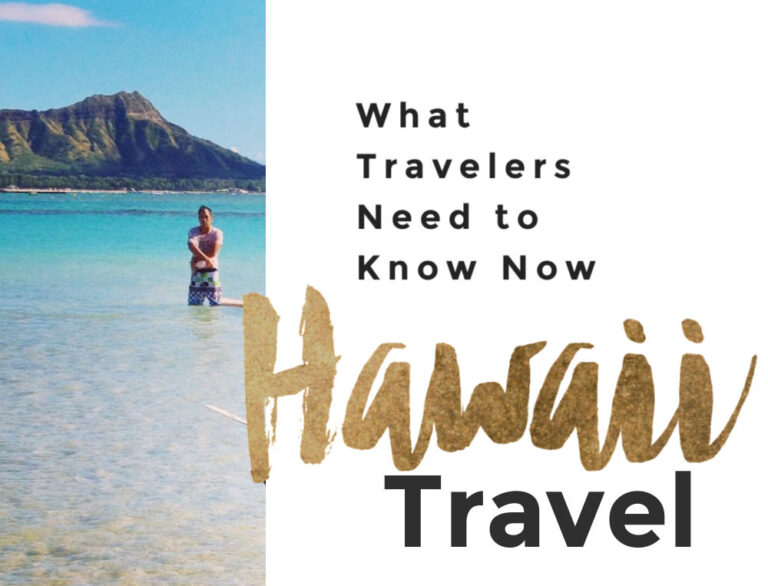
Hawaii travel requirements 2024: What travelers need to know
We aim to keep this post updated about Hawaii travel in 2024 with official Hawaii travel restrictions, requirements, and health and safety guidance. Our goal is to help you make informed decisions so you can travel confidently, safely, and responsibly in this new post-pandemic world of ours. At the end of the post, we share…
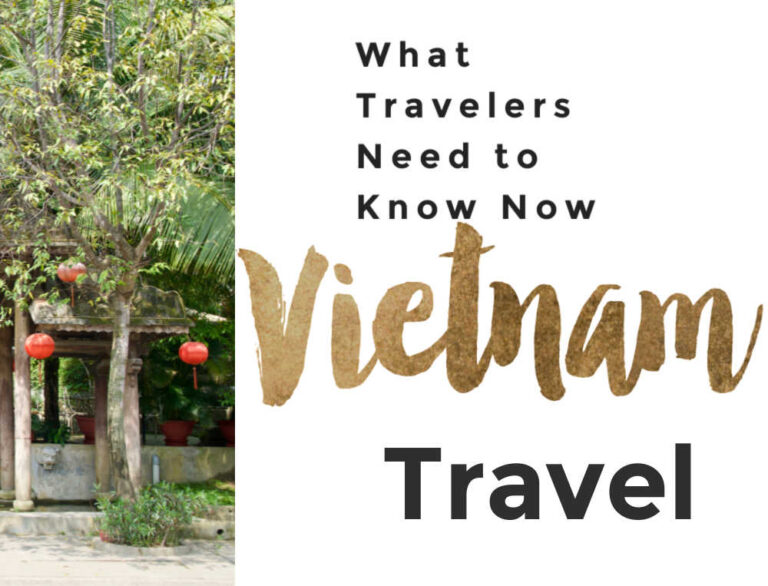
Vietnam travel requirements 2024: What travelers need to know
We aim to keep this post updated about Vietnam travel in 2024 with official Vietnam travel restrictions, requirements, and health and safety guidance. Our goal is to help you make informed decisions so you can travel confidently, safely, and responsibly in this new post-pandemic world of ours. Vietnam is a destination close to our hearts….
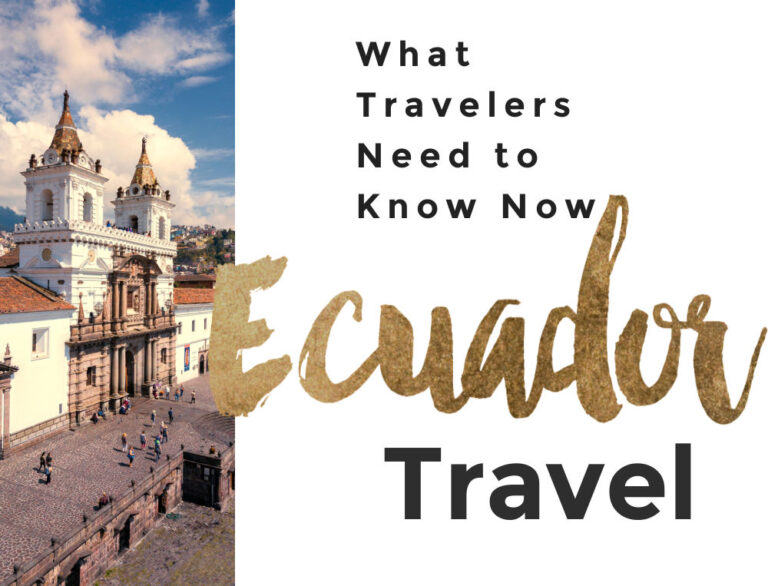
Ecuador travel requirements 2024: What travelers need to know
We aim to keep this post updated about Ecuador travel in 2024 with official Ecuador travel restrictions, requirements, and health and safety guidance. Our goal is to help you make informed decisions so you can travel confidently, safely, and responsibly in this new post-pandemic world of ours. We stayed in Cuenca, Ecuador in 2022 and…

Rome Food Tour – A Progressive Meal Through The Jewish Quarter With Bitemojo
We’re excited to tell you about a new and exciting way to enjoy a food tour in Rome. With the help of your smartphone, you can experience a progressive meal through secret corners of Rome, at your own pace. You get the benefits of a curated experience with local insights, without the cost or time…
32 Comments
Very useful information, thank you, I will be staying in Sicily for 10 days this July!
Hi! Great info! Is it safe traveling to Italy now from the US because of Ukrania- Russia conflict? Thanks!
Thanks, Wilda. We have a good friend in Tuscany who tells us there is no concern about safety in Italy currently, however, prices and availability of some products/delivery is being significantly affected. We recently sent out a Europe update to newsletter subscribers with the following: “If you have plans to travel to Europe, you may be wondering if it’s still safe. Right now airspace over Russia, Ukraine, Belarus, Poland, Slovakia, Hungary, Romania and Moldova are on the EASA risk list [CNN]. But most of Western Europe is hundreds of miles from the conflict, and experts are saying there’s no need to cancel trips [AFAR].” We are planning to travel to Italy ourselves in September-October. Of course, as with Covid, each of us have to make our own assessment based on the level of risk we’re willing to accept when we travel.
Is there a current ban on US citizens (vaccinated or not) traveling to Italy?
Why are US citizens not allowed to travel to Italy at this time as you stated below. I copied and pasted from your article…. Can Americans travel to Italy in January 2022? Can US citizens travel to Italy this Winter? Travel to Italy in January is now allowed for US citizens visiting for any reason, including tourism. Read on for details and check back for updates.
Hi Jamie. I think perhaps you have misread “is NOW” as “is not”? I’ll reword it to prevent future confusion. As you’ll find throughout the rest of our post, Italy IS open to Americans under certain protocols. Thanks for visiting.
Hi Michelle, thank you for making this information easy to digest. I’m unclear on the “green pass” and “super green pass”.
– Green pass: proof of vaccination – so our white vaccination cards work – correct? And no proof of booster is required?
– Super Green Pass: unclear here.
Also, is the “health declaration form” and the “dPLF” form the same? If not, are both needed?
I plan to visit Italy starting late Feb – Mar ‘22 and am now wondering if I should push this to June. With it all changing so fast, maybe I’m being overly-cautious?
Kate, I’m glad you’ve found our post helpful. Whether pushing the trip back to June will make much difference is hard to say. I’ve shared a bit about my philosophy on canceling/rescheduling trips here .
Some of the green pass rules are quite new and it is admittedly confusing. Also it may change again by March! Firstly, yes, your white CDC vaccination card will work as your pass, as long as the latest vaccination date qualifies.
There is now a time limit on vaccination for the Green Passes (though not for entry into the country). At the moment, this means that if your last Covid shot was more than 9 months ago, you would need a Covid test within 48 hours before checking into accommodations or taking public transit. Starting February 1st, a booster shot will be needed for persons who have been fully vaccinated for more than 6 months. As I read it, if your last Covid shot is more than 9 months old, then you would not be allowed to do the activities under the Super Green Pass like indoor dining, museums, or spas without a booster. Again, there is not a lot of detail available about how this works practically yet.
Sorry for the confusion about the forms – the self-certification health form I think might be an old term so I’ll update that in our post. The dPLF digital Passenger Locator Form is what is now required before travel.
Hi there and thank you for your lovely blog. I am traveling to Italy in February, and my second vaccine dose would be older than 6 months, and not able to get a third dose before arrival. Does than mean that I won’t have a green pass and need to undergo a pcr to enter some places?
Auba, thank you for your question. We were surprised by this restriction. It’s all quite new so how this works out practically may change, but I read it as you do. To confirm, I also found this: “All arrivals to Italy with vaccinations considered as expired by Italian standards (see line above) are required to do Rapid COVID-19 tests (available in local pharmacies and test centres) to obtain a Green Pass, which will be valid for 48 hours. The test provider will print your test results and will email you a unique code. You will then need to access the Government website (in Italian) and enter your details. Select the option ‘Utente senza tessera sanitaria’ (‘User without a health card’). You will be prompted to enter the type and number of the ID you showed when you got your test, as well as the code on your test certificate. Click ‘Ricupera certificazione’ (‘Get certificate’) to download your digital test result. You will need to continue with this process for the duration of your stay to enable travel within Italy and to access hospitality and leisure venues including bars, restaurants, museums, exhibitions, sporting events, fairs, civil or religious ceremonies and large events.”
Nice post! I recently applied for an Italy Visa but was sceptical about the travel restrictions imposed by Italian authorities. So, I started searching for some answers and that is how I came across your informative article. It talks about all the important details that a first-time Italian traveller like me should know. Do share such informative blogs about other countries and any possible restrictions that they are imposing. It might come in handy for a lot of tourists who want to get out of their homes after a long season of the pandemic.
Thanks for a great info. Did they ask the covid pass in the public transport? I read that in intercity trains require at least but would like to know the reality. And if Unvaccinated customers can enter an establishment to buy food, but they are not allowed to eat indoors, are there many restaurants with outdoor areas that can be used without the passport? Thanks a lot
Thanks for your questions. The green pass is required in Italy for domestic planes, ferries, inter-regional trains and long-distance buses. For public transit within a city like buses and metros, there are capacity controls and masks required but not the green pass. Taxi drivers do not check for the green pass. Yes, many restaurants in Italy have outdoor seating. We’ll do our best to gather more testimonials about what this looks like on the ground to update our post in the future.
Trying very hard to find out exactly what happens and what options are available to you should you happen to test COVID positive before your flight back to USA. Especially now that fully vaccinated folks are testing positive. Please advise as soon as possible. Thank you!!
Hi and thanks for visiting our blog. According to the CDC website , “People should self-isolate and delay their travel if symptoms develop or a pre-departure test result is positive until they have recovered from COVID-19. Airlines must refuse to board anyone who does not present a negative test result for COVID-19 or documentation of recovery.” So options are pretty limited at the moment if you test positive before returning to the U.S., and I haven’t heard whether that will be reevaluated any time soon.
Hi Michelle! I am a US citizen and I planned for an Italian trip Sept 3-15. Today is the first day i see about the quarantine requirement lift being ended on August 30. Does this mean August 30 they may decide to implement the quarantine period again? Do you think I will be able to do my trip or will it depend on how the Italian government reacts to this upcoming month? Thank you!
Kim, thanks for visiting our blog. The requirements may not necessarily be lifted but rather *reevaluated* at the end of August. It’s not possible to predict what the decision will be at this time. I’m sure Italy wants to keep tourism open and has new protocols like the Green Pass in place to do so more safely, but each country has to weigh that against health and hospitalization risks. For vaccinated travelers, being able to travel is more likely this Fall but nothing’s guaranteed as things continue to change quickly with this delta variant. I know the uncertainty is difficult, which I wrote about in our recent post here: https://intentionaltravelers.com/should-i-reschedule-my-trip/
Hi Michelle! Thank you so much for the reply, we knew there would be a risk to canceling the trip and we are very understanding and flexible. I just hope that we know in advance enough to not give our hopes up. We are vaccinated so hopefully if they restrict anything it’s unvaccinated folks. I’ll keep an eye out for updates!
We are having a lay over at Heathrow Airport. My interpretation of the Covid rules say we will have to quarantine in Venice for 5 days. Is there a “safe zone” in Heathrow that will allow us to enter Venice when we arrive. We are both vaccinated and have digital copies of our CDC vaccine card.
Thanks for visiting our blog, David. It is my understanding that a layover in the UK would mean you’d need to quarantine for five days in Italy, even if you’re only transiting through the airport unfortunately. I have seen reports of recent travelers rerouting flights to avoid the UK for this reason. It appears the requirement is to be in place through August 30, so if you travel after that, it’s possible the rule could change but there are no guarantees.
Hi. I am traveling to Italy in 3 weeks. Where can i get a negative covid test for my re entry to the US. Pharmacy?? Thanks.
Ciao Gianna. Please see the section in our post labeled “What Covid testing options are available for travelers returning to the U.S.?” for these details.
Great blog We’re travelling to Northern Italy in September and supposed to go to a outdoor concert in Marostica. Do you know if there is any plans to cancel outdoor gatherings? Thanks
Hello and thanks for visiting our blog. It’s still too early to know what restrictions might be in place in which regions come September, but we will be sure to update this post as the situation changes. If the concert takes place as scheduled, you’ll likely need a “green certificate” to attend.
How as an American travelers do I obtain a Green Pass?
Thanks for your question. We were actually just in process of updating this post with new information! More details may be forthcoming but it appears that Americans will be able to show a hard copy of their vaccination card, official proof of recovery, or a negative test result taken within 48 hours in place of the digital pass. We’ll be sure to update our information here as more details become available.
Is colosseum ticket free on the first Sunday of every month after pandemic?
That is a good question. We have covered the free first Sunday opportunity previously on our blog, however, the colosseum now follows a different schedule. Entrance is free on select dates throughout the year, however, I have not been able to find a list of those dates for 2021. I would expect that might be published in a bit further in the future.
News all say US travelers can present CDC vaccination card to skip testing. Not true? June 30 2021
Hi Jiang. Thank you for visiting our blog. That information is correct. A CDC vaccination card can be used by US travelers to obtain a “Green Pass”. US travelers with a “Green Pass” are no longer required to undergo testing or quarantine in Italy.
Excellent info!
Thank you for visiting the blog. Safe travels.
Leave a Reply Cancel reply
Your email address will not be published. Required fields are marked *
This site uses Akismet to reduce spam. Learn how your comment data is processed .
You are using an outdated browser. Upgrade your browser today or install Google Chrome Frame to better experience this site.
Italy, including Holy See and Vatican City Traveler View
Travel health notices, vaccines and medicines, non-vaccine-preventable diseases, stay healthy and safe.
- Packing List
After Your Trip
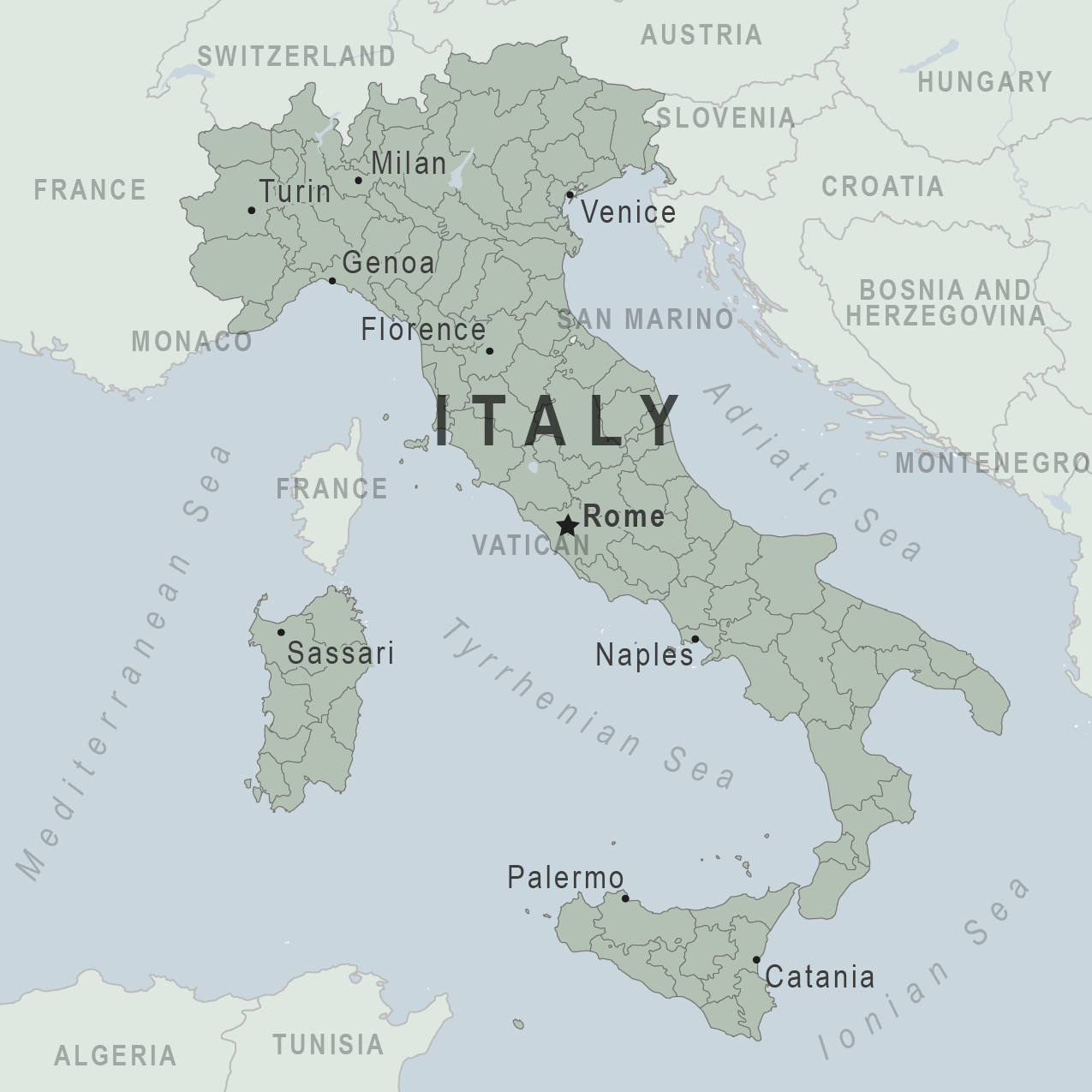
There are no notices currently in effect for Italy, including Holy See and Vatican City.
⇧ Top
Check the vaccines and medicines list and visit your doctor at least a month before your trip to get vaccines or medicines you may need. If you or your doctor need help finding a location that provides certain vaccines or medicines, visit the Find a Clinic page.
Routine vaccines
Recommendations.
Make sure you are up-to-date on all routine vaccines before every trip. Some of these vaccines include
- Chickenpox (Varicella)
- Diphtheria-Tetanus-Pertussis
- Flu (influenza)
- Measles-Mumps-Rubella (MMR)
Immunization schedules
All eligible travelers should be up to date with their COVID-19 vaccines. Please see Your COVID-19 Vaccination for more information.
COVID-19 vaccine
Hepatitis A
Consider hepatitis A vaccination for most travelers. It is recommended for travelers who will be doing higher risk activities, such as visiting smaller cities, villages, or rural areas where a traveler might get infected through food or water. It is recommended for travelers who plan on eating street food.
Hepatitis A - CDC Yellow Book
Dosing info - Hep A
Hepatitis B
Recommended for unvaccinated travelers younger than 60 years old traveling to Italy. Unvaccinated travelers 60 years and older may get vaccinated before traveling to Italy.
Hepatitis B - CDC Yellow Book
Dosing info - Hep B
Cases of measles are on the rise worldwide. Travelers are at risk of measles if they have not been fully vaccinated at least two weeks prior to departure, or have not had measles in the past, and travel internationally to areas where measles is spreading.
All international travelers should be fully vaccinated against measles with the measles-mumps-rubella (MMR) vaccine, including an early dose for infants 6–11 months, according to CDC’s measles vaccination recommendations for international travel .
Measles (Rubeola) - CDC Yellow Book
Dogs infected with rabies are not commonly found in Italy.
If rabies exposures occur while in Italy, rabies vaccines are typically available throughout most of the country.
Rabies pre-exposure vaccination considerations include whether travelers 1) will be performing occupational or recreational activities that increase risk for exposure to potentially rabid animals and 2) might have difficulty getting prompt access to safe post-exposure prophylaxis.
Please consult with a healthcare provider to determine whether you should receive pre-exposure vaccination before travel.
For more information, see country rabies status assessments .
Rabies - CDC Yellow Book
Tick-borne Encephalitis
For travelers moving or traveling to TBE-endemic areas
TBE vaccine is recommended for persons who will have extensive exposure to ticks based on their planned outdoor activities and itinerary.
TBE vaccine may be considered for persons who might engage in outdoor activities in areas ticks are likely to be found.
Tick-borne Encephalitis - CDC Yellow Book
Avoid contaminated water
Leptospirosis
How most people get sick (most common modes of transmission)
- Touching urine or other body fluids from an animal infected with leptospirosis
- Swimming or wading in urine-contaminated fresh water, or contact with urine-contaminated mud
- Drinking water or eating food contaminated with animal urine
- Avoid contaminated water and soil
Clinical Guidance
Avoid bug bites.
Leishmaniasis
- Sand fly bite
- Avoid Bug Bites
Airborne & droplet
- Breathing in air or accidentally eating food contaminated with the urine, droppings, or saliva of infected rodents
- Bite from an infected rodent
- Less commonly, being around someone sick with hantavirus (only occurs with Andes virus)
- Avoid rodents and areas where they live
- Avoid sick people
Tuberculosis (TB)
- Breathe in TB bacteria that is in the air from an infected and contagious person coughing, speaking, or singing.
Learn actions you can take to stay healthy and safe on your trip. Vaccines cannot protect you from many diseases in Italy, so your behaviors are important.
Eat and drink safely
Food and water standards around the world vary based on the destination. Standards may also differ within a country and risk may change depending on activity type (e.g., hiking versus business trip). You can learn more about safe food and drink choices when traveling by accessing the resources below.
- Choose Safe Food and Drinks When Traveling
- Water Treatment Options When Hiking, Camping or Traveling
- Global Water, Sanitation and Hygiene | Healthy Water
- Avoid Contaminated Water During Travel
You can also visit the Department of State Country Information Pages for additional information about food and water safety.
Prevent bug bites
Although Italy is an industrialized country, bug bites here can still spread diseases. Just as you would in the United States, try to avoid bug bites while spending time outside or in wooded areas.
What can I do to prevent bug bites?
- Cover exposed skin by wearing long-sleeved shirts, long pants, and hats.
- Use an appropriate insect repellent (see below).
- Consider using permethrin-treated clothing and gear if spending a lot of time outside. Do not use permethrin directly on skin.
What type of insect repellent should I use?
- FOR PROTECTION AGAINST TICKS AND MOSQUITOES: Use a repellent that contains 20% or more DEET for protection that lasts up to several hours.
- Picaridin (also known as KBR 3023, Bayrepel, and icaridin)
- Oil of lemon eucalyptus (OLE) or para-menthane-diol (PMD)
- 2-undecanone
- Always use insect repellent as directed.
What should I do if I am bitten by bugs?
- Avoid scratching bug bites, and apply hydrocortisone cream or calamine lotion to reduce the itching.
- Check your entire body for ticks after outdoor activity. Be sure to remove ticks properly.
What can I do to avoid bed bugs?
Although bed bugs do not carry disease, they are an annoyance. See our information page about avoiding bug bites for some easy tips to avoid them. For more information on bed bugs, see Bed Bugs .
For more detailed information on avoiding bug bites, see Avoid Bug Bites .
Stay safe outdoors
If your travel plans in Italy include outdoor activities, take these steps to stay safe and healthy during your trip:
- Stay alert to changing weather conditions and adjust your plans if conditions become unsafe.
- Prepare for activities by wearing the right clothes and packing protective items, such as bug spray, sunscreen, and a basic first aid kit.
- Consider learning basic first aid and CPR before travel. Bring a travel health kit with items appropriate for your activities.
- If you are outside for many hours in the heat, eat salty snacks and drink water to stay hydrated and replace salt lost through sweating.
- Protect yourself from UV radiation : use sunscreen with an SPF of at least 15, wear protective clothing, and seek shade during the hottest time of day (10 a.m.–4 p.m.).
- Be especially careful during summer months and at high elevation. Because sunlight reflects off snow, sand, and water, sun exposure may be increased during activities like skiing, swimming, and sailing.
- Very cold temperatures can be dangerous. Dress in layers and cover heads, hands, and feet properly if you are visiting a cold location.
Stay safe around water
- Swim only in designated swimming areas. Obey lifeguards and warning flags on beaches.
- Do not dive into shallow water.
- Avoid swallowing water when swimming. Untreated water can carry germs that make you sick.
- Practice safe boating—follow all boating safety laws, do not drink alcohol if you are driving a boat, and always wear a life jacket.
Keep away from animals
Most animals avoid people, but they may attack if they feel threatened, are protecting their young or territory, or if they are injured or ill. Animal bites and scratches can lead to serious diseases such as rabies.
Follow these tips to protect yourself:
- Do not touch or feed any animals you do not know.
- Do not allow animals to lick open wounds, and do not get animal saliva in your eyes or mouth.
- Avoid rodents and their urine and feces.
- Traveling pets should be supervised closely and not allowed to come in contact with local animals.
- If you wake in a room with a bat, seek medical care immediately. Bat bites may be hard to see.
All animals can pose a threat, but be extra careful around dogs, bats, monkeys, sea animals such as jellyfish, and snakes. If you are bitten or scratched by an animal, immediately:
- Wash the wound with soap and clean water.
- Go to a doctor right away.
- Tell your doctor about your injury when you get back to the United States.
Reduce your exposure to germs
Follow these tips to avoid getting sick or spreading illness to others while traveling:
- Wash your hands often, especially before eating.
- If soap and water aren’t available, clean hands with hand sanitizer (containing at least 60% alcohol).
- Don’t touch your eyes, nose, or mouth. If you need to touch your face, make sure your hands are clean.
- Cover your mouth and nose with a tissue or your sleeve (not your hands) when coughing or sneezing.
- Try to avoid contact with people who are sick.
- If you are sick, stay home or in your hotel room, unless you need medical care.
Avoid sharing body fluids
Diseases can be spread through body fluids, such as saliva, blood, vomit, and semen.
Protect yourself:
- Use latex condoms correctly.
- Do not inject drugs.
- Limit alcohol consumption. People take more risks when intoxicated.
- Do not share needles or any devices that can break the skin. That includes needles for tattoos, piercings, and acupuncture.
- If you receive medical or dental care, make sure the equipment is disinfected or sanitized.
Know how to get medical care while traveling
Plan for how you will get health care during your trip, should the need arise:
- Carry a list of local doctors and hospitals at your destination.
- Review your health insurance plan to determine what medical services it would cover during your trip. Consider purchasing travel health and medical evacuation insurance for things your regular insurance will not cover.
- Carry a card that identifies, in the local language, your blood type, chronic conditions or serious allergies, and the generic names of any medicines you take.
- Bring copies of your prescriptions for medicine and for eye glasses and contact lenses.
- Some prescription drugs may be illegal in other countries. Call Italy’s embassy to verify that all of your prescription(s) are legal to bring with you.
- Bring all the medicines (including over-the-counter medicines) you think you might need during your trip, including extra in case of travel delays. Ask your doctor to help you get prescriptions filled early if you need to.
Many foreign hospitals and clinics are accredited by the Joint Commission International. A list of accredited facilities is available at their website ( www.jointcommissioninternational.org ).
Select safe transportation
Motor vehicle crashes are the #1 killer of healthy US citizens in foreign countries.
Be smart when you are traveling on foot.
- Use sidewalks and marked crosswalks.
- Pay attention to the traffic around you, especially in crowded areas.
- Remember, people on foot do not always have the right of way in other countries.
Riding/Driving
Choose a safe vehicle.
- Choose official taxis or public transportation, such as trains and buses.
- Make sure there are seatbelts.
- Avoid overcrowded, overloaded, top-heavy buses and minivans.
- Avoid riding on motorcycles or motorbikes, especially motorbike taxis. (Many crashes are caused by inexperienced motorbike drivers.)
- Choose newer vehicles—they may have more safety features, such as airbags, and be more reliable.
- Choose larger vehicles, which may provide more protection in crashes.
Think about the driver.
- Do not drive after drinking alcohol or ride with someone who has been drinking.
- Consider hiring a licensed, trained driver familiar with the area.
- Arrange payment before departing.
Follow basic safety tips.
- Wear a seatbelt at all times.
- Sit in the back seat of cars and taxis.
- When on motorbikes or bicycles, always wear a helmet. (Bring a helmet from home, if needed.)
- Do not use a cell phone or text while driving (illegal in many countries).
- Travel during daylight hours only, especially in rural areas.
- If you choose to drive a vehicle in Italy, learn the local traffic laws and have the proper paperwork.
- Get any driving permits and insurance you may need. Get an International Driving Permit (IDP). Carry the IDP and a US-issued driver's license at all times.
- Check with your auto insurance policy's international coverage, and get more coverage if needed. Make sure you have liability insurance.
- Avoid using local, unscheduled aircraft.
- If possible, fly on larger planes (more than 30 seats); larger airplanes are more likely to have regular safety inspections.
- Try to schedule flights during daylight hours and in good weather.
Helpful Resources
Road Safety Overseas (Information from the US Department of State): Includes tips on driving in other countries, International Driving Permits, auto insurance, and other resources.
The Association for International Road Travel has country-specific Road Travel Reports available for most countries for a minimal fee.
For information traffic safety and road conditions in Italy, see Travel and Transportation on US Department of State's country-specific information for Italy .
Maintain personal security
Use the same common sense traveling overseas that you would at home, and always stay alert and aware of your surroundings.
Before you leave
- Research your destination(s), including local laws, customs, and culture.
- Monitor travel advisories and alerts and read travel tips from the US Department of State.
- Enroll in the Smart Traveler Enrollment Program (STEP) .
- Leave a copy of your itinerary, contact information, credit cards, and passport with someone at home.
- Pack as light as possible, and leave at home any item you could not replace.
While at your destination(s)
- Carry contact information for the nearest US embassy or consulate .
- Carry a photocopy of your passport and entry stamp; leave the actual passport securely in your hotel.
- Follow all local laws and social customs.
- Do not wear expensive clothing or jewelry.
- Always keep hotel doors locked, and store valuables in secure areas.
- If possible, choose hotel rooms between the 2nd and 6th floors.
Healthy Travel Packing List
Use the Healthy Travel Packing List for Italy for a list of health-related items to consider packing for your trip. Talk to your doctor about which items are most important for you.
Why does CDC recommend packing these health-related items?
It’s best to be prepared to prevent and treat common illnesses and injuries. Some supplies and medicines may be difficult to find at your destination, may have different names, or may have different ingredients than what you normally use.
If you are not feeling well after your trip, you may need to see a doctor. If you need help finding a travel medicine specialist, see Find a Clinic . Be sure to tell your doctor about your travel, including where you went and what you did on your trip. Also tell your doctor if you were bitten or scratched by an animal while traveling.
For more information on what to do if you are sick after your trip, see Getting Sick after Travel .
Map Disclaimer - The boundaries and names shown and the designations used on maps do not imply the expression of any opinion whatsoever on the part of the Centers for Disease Control and Prevention concerning the legal status of any country, territory, city or area or of its authorities, or concerning the delimitation of its frontiers or boundaries. Approximate border lines for which there may not yet be full agreement are generally marked.
Other Destinations
If you need help finding travel information:
Message & data rates may apply. CDC Privacy Policy
File Formats Help:
- Adobe PDF file
- Microsoft PowerPoint file
- Microsoft Word file
- Microsoft Excel file
- Audio/Video file
- Apple Quicktime file
- RealPlayer file
- Zip Archive file
Exit Notification / Disclaimer Policy
- The Centers for Disease Control and Prevention (CDC) cannot attest to the accuracy of a non-federal website.
- Linking to a non-federal website does not constitute an endorsement by CDC or any of its employees of the sponsors or the information and products presented on the website.
- You will be subject to the destination website's privacy policy when you follow the link.
- CDC is not responsible for Section 508 compliance (accessibility) on other federal or private website.
- Skip to main content
- Skip to "About this site"
Language selection
Search travel.gc.ca.
Help us to improve our website. Take our survey !
COVID-19: travel health notice for all travellers
Italy travel advice
Latest updates: Editorial change
Last updated: June 4, 2024 08:03 ET
On this page
Safety and security, entry and exit requirements, laws and culture, natural disasters and climate, italy - exercise a high degree of caution.
Exercise a high degree of caution in Italy due to the threat of terrorism.
Back to top
Petty crime
Petty crime such as pickpocketing and purse snatching occurs, and tourists are frequently targeted.
Organized groups of thieves often use distraction techniques and are particularly active:
- at tourist sites and attractions
- in hotels, restaurants and bars
- on public transportation
- at airports and railway stations
While you’re in Italy:
- ensure that your belongings, including your passport, are secure at all times
- don’t keep your passport and other types of ID at the same place and carry a photocopy rather than the original when you’re out
- avoid showing signs of affluence
- avoid carrying large sums of cash or unnecessary valuables
- pay attention to your surroundings, particularly in crowded and tourist areas
- be wary of unsolicited offers or advice from strangers
On the road
The theft of items from vehicles is common, and thieves often target rental cars. They may use distraction techniques or simulate accidents. Thefts can occur at gas stations, highway service areas, and parking lots.
Be especially vigilant when stopped at traffic lights. Thieves on scooters or on foot often snatch bags from passenger seats.
- Keep your windows and doors locked at all times
- Keep your belongings out of reach
- Use secure parking facilities, especially overnight
- Never leave belongings unattended in a vehicle, even in the trunk
On public transportation
Thefts on public transportation and passenger trains are common, particularly on those servicing major tourist sites, main cities and airports. Thieves will often steal your belongings while you’re asleep or distracted and may hassle or crowd you.
Keep your valuables secure and out of sight.
Home break-ins
Home burglaries occur mainly in main cities and coastal areas and sometimes affect holiday rental accommodation.
Whether staying in private or commercial accommodation, make sure you lock windows and doors at night and when you are away.
Spiked food and drinks
Never leave food or drinks unattended or in the care of strangers. Be wary of accepting snacks, beverages, gum or cigarettes from new acquaintances. These items may contain drugs that could put you at risk of sexual assault and robbery.
Victims of crime
If you are a victim of a theft, go to the nearest police station (Carabinieri or Polizia di Stato) to report it. Keep a copy of your report, as you may need it to make a claim to your insurance provider.
It’s possible to file a preliminary complaint online, in Italian, for certain types of minor crimes, such as theft of belongings. This could help speed up the process at the police station.
If you are a victim of sexual assault:
- seek medical assistance, whether or not you appear to have been physically harmed
- contact the local police immediately and ensure they file a report
- inform consular officials at the nearest Canadian embassy or consulate
Useful links
- Online preliminary complaint - Arma dei Carabinieri (in Italian)
- Closest police station - Polizia di Stato, Italy’s national police (in Italian)
- Advice for women travellers
Credit card and ATM fraud
Credit card and ATM fraud occurs.
When using debit or credit cards:
- pay careful attention when others are handling your cards
- use ATMs located in public areas or inside a bank or business
- avoid using card readers with an irregular or unusual feature
- cover the keypad with one hand when entering your PIN
- check for any unauthorized transactions on your account statements
Cybercrime occurs. Criminals may compromise public Wi-Fi networks to steal credit card or personal information.
- Avoid using public Wi-Fi networks
- Avoid making purchases on unencrypted websites
- Be cautious when posting information on social media
- Be particularly vigilant when contacting or meeting individuals known over the internet
Overseas fraud
There is a threat of terrorism in Europe. Terrorists have carried out attacks in several European cities and further attacks elsewhere in Europe are likely. Attacks in Italy cannot be ruled out.
Targets could include:
- government buildings, including schools
- places of worship
- airports and other transportation hubs and networks
- public areas such as tourist attractions, restaurants, bars, coffee shops, shopping centres, markets, hotels and other sites frequented by foreigners
Always be aware of your surroundings when in public places. Be particularly vigilant if attending sporting events and during religious holidays and other public celebrations, as terrorists have used such occasions to mount attacks.
The Government of Italy maintains a public alert system on terrorism. Alert level changes are communicated mainly through local media. Enhanced security measures are also deployed in various strategic locations and transport hubs.
Expect an increased presence of police and military forces during holidays and in public places, including tourist locations and major landmarks.
Demonstrations and strikes
Demonstrations and strikes occur regularly, particularly in larger cities and often with little notice.
Even peaceful demonstrations can turn violent at any time. They can also lead to significant disruptions to traffic and public transportation.
- Avoid areas where demonstrations and large gatherings are taking place
- Follow the instructions of local authorities
- Monitor local media for information on ongoing demonstrations
- In case of a transportation strike, contact your provider or tour operator to make alternate arrangements
- Information on planned strike action - Ministry of Infrastructure and Transport (in Italian)
- More about mass gatherings (large-scale events)
Swimming and water activities
Coastal waters can be dangerous. Always take into account warning flags at beaches.
In the fall and winter months, be cautious when walking on the shore, as waves can be unpredictable, breaking further than expected and causing strong undertows.
- Avoid visiting beaches or coastal areas during periods of severe weather warnings
- Look out for signs warning of cliff erosion and falling rocks
- Don’t dive into unknown water, as hidden rocks or shallow depths can cause serious injury or death
- Exercise caution and follow the advice of local authorities
Water safety abroad
Mountain activities
If you intend to go hiking, mountaineering or skiing:
- never do so alone
- consider hiring an experienced guide from a reputable company
- buy travel insurance that includes helicopter rescue and medical evacuation
- ensure that your physical condition is good enough to meet the challenges of your activity
- ensure that you’re properly equipped
- stay informed about weather and other conditions that may pose a hazard
- inform a family member or friend of your itinerary
- know the symptoms of acute altitude sickness, which can be fatal
- obtain detailed information on trekking routes or ski slopes before setting out
- do not venture off marked trails or slopes
Information on avalanche risk - Meteomont, Arma dei Carabinieri
Stray dogs are common in certain areas.
Don’t approach or feed them as they could be aggressive.
Road safety
Road conditions and road safety vary throughout the country.
City streets can be narrow and congested. Signage, traffic lights and road markings may not be visible, especially in the southern areas of the country.
In mountainous areas, roads are often winding and narrow. Weather conditions can make driving conditions dangerous. Avalanches or landslides can occur and block access routes to small isolated towns. In northern Italy, particularly in winter, fog can substantially reduce visibility.
Drivers do not always respect traffic laws. They may drive at excessive speeds and be reckless.
- Be cautious when using pedestrian crossings or where there are no sidewalks; drivers may not see you, especially where street lights are limited
- Pay close attention to motorcycles and electric scooters
- Monitor local news and weather forecast
- Refrain from driving during or immediately after severe storms
- Follow the advice and warnings issued by local authorities
Public transportation
The quality and availability of public transportation vary across the country.
In urban areas, buses can be over capacity during rush hours, impacting your transit time. Metro stations are sometimes closed for maintenance. Strike actions may also affect train service.
The inter-city train system is extensive, well-connected and reliable.
In Italy, drivers start the meter at the point of departure rather than at pick-up. Ride-sharing services are available but may operate differently.
Use only officially licensed taxis from a stand or requested by phone or app.
We do not make assessments on the compliance of foreign domestic airlines with international safety standards.
Information about foreign domestic airlines
Every country or territory decides who can enter or exit through its borders. The Government of Canada cannot intervene on your behalf if you do not meet your destination’s entry or exit requirements.
We have obtained the information on this page from the Italian authorities. It can, however, change at any time.
Verify this information with the Foreign Representatives in Canada .
- Schengen area
Italy is a Schengen area country. Canadian citizens do not need a visa for travel to countries within the Schengen area. However, visa-free travel only applies to stays of up to 90 days in any 180-day period. Stays are cumulative and include visits to any Schengen area country.
If you plan to stay in the Schengen area for a longer period of time, you will need a visa. You must contact the high commission or embassy of the country or countries you are travelling to and obtain the appropriate visa(s) prior to travel.
- Foreign Representatives in Canada
Entry requirements vary depending on the type of passport you use for travel.
Before you travel, check with your transportation company about passport requirements. Its rules on passport validity may be more stringent than the country’s entry rules.
Regular Canadian passport
Your passport must be valid for at least 3 months beyond the date you expect to leave the Schengen area.
Passport for official travel
Different entry rules may apply.
Official travel
Passport with “X” gender identifier
While the Government of Canada issues passports with an “X” gender identifier, it cannot guarantee your entry or transit through other countries. You might face entry restrictions in countries that do not recognize the “X” gender identifier. Before you leave, check with the closest foreign representative for your destination.
Other travel documents
Different entry rules may apply when travelling with a temporary passport or an emergency travel document. Before you leave, check with the closest foreign representative for your destination.
- Foreign Representatives in Canada
- Canadian passports
Tourist visa: not required for stays up to 90 days in any 180-day period Business visa: not required for stays up 90 days Work visa: required Student visa: required
Information for foreign nationals - Polizia di Stato, Italy’s national police
Other entry requirements
Customs officials may ask you to show them a return or onward ticket and proof of sufficient funds to cover your stay.
Declaration of presence
If you plan to spend fewer than 90 days in Italy for visits, business, tourism or study, you don’t need to apply for a residence permit. However, you must report your presence in the country. Commercial accommodations will generally file the declaration on your behalf, but you are responsible for making sure it's done. Request a copy of this record.
If you’re staying in a non-commercial accommodation and:
- arriving from a Schengen country, you must file a declaration of presence with the local police office within 8 days of arrival
- arriving from a non-Schengen country, make sure border officials stamp your passport upon arrival, as this is the equivalent to a declaration of presence
Failure to comply with this regulation could result in expulsion.
Entering Italy - Polizia di Stato, Italy’s national police
- Children and travel
Learn more about travelling with children .
Yellow fever
Learn about potential entry requirements related to yellow fever (vaccines section).
Relevant Travel Health Notices
- Global Measles Notice - 13 March, 2024
- COVID-19 and International Travel - 13 March, 2024
This section contains information on possible health risks and restrictions regularly found or ongoing in the destination. Follow this advice to lower your risk of becoming ill while travelling. Not all risks are listed below.
Consult a health care professional or visit a travel health clinic preferably 6 weeks before you travel to get personalized health advice and recommendations.
Routine vaccines
Be sure that your routine vaccinations , as per your province or territory , are up-to-date before travelling, regardless of your destination.
Some of these vaccinations include measles-mumps-rubella (MMR), diphtheria, tetanus, pertussis, polio, varicella (chickenpox), influenza and others.
Pre-travel vaccines and medications
You may be at risk for preventable diseases while travelling in this destination. Talk to a travel health professional about which medications or vaccines may be right for you, based on your destination and itinerary.
Yellow fever is a disease caused by a flavivirus from the bite of an infected mosquito.
Travellers get vaccinated either because it is required to enter a country or because it is recommended for their protection.
- There is no risk of yellow fever in this country.
Country Entry Requirement*
- Proof of vaccination is not required to enter this country.
Recommendation
- Vaccination is not recommended.
* It is important to note that country entry requirements may not reflect your risk of yellow fever at your destination. It is recommended that you contact the nearest diplomatic or consular office of the destination(s) you will be visiting to verify any additional entry requirements.
About Yellow Fever
Yellow Fever Vaccination Centres in Canada
Tick-borne encephalitis (TBE) is a risk in some areas of this destination. It is a viral disease that affects the central nervous system (brain and spinal cord). It is spread to humans by the bite of infected ticks or occasionally when unpasteurized milk products are consumed.
Travellers to areas where TBE is found may be at higher risk during April to November, and the risk is highest for people who hike or camp in forested areas.
Protect yourself from tick bites . The vaccine is not available in Canada. It may be available in the destination you are travelling to.
In this destination, rabies may be present in some wildlife species, including bats. Rabies is a deadly disease that spreads to humans primarily through bites or scratches from an infected animal.
If you are bitten or scratched by an animal while travelling, immediately wash the wound with soap and clean water and see a health care professional.
Before travel, discuss rabies vaccination with a health care professional. It may be recommended for travellers who will be working directly with wildlife.
Measles is a highly contagious viral disease. It can spread quickly from person to person by direct contact and through droplets in the air.
Anyone who is not protected against measles is at risk of being infected with it when travelling internationally.
Regardless of where you are going, talk to a health care professional before travelling to make sure you are fully protected against measles.
Hepatitis B is a risk in every destination. It is a viral liver disease that is easily transmitted from one person to another through exposure to blood and body fluids containing the hepatitis B virus. Travellers who may be exposed to blood or other bodily fluids (e.g., through sexual contact, medical treatment, sharing needles, tattooing, acupuncture or occupational exposure) are at higher risk of getting hepatitis B.
Hepatitis B vaccination is recommended for all travellers. Prevent hepatitis B infection by practicing safe sex, only using new and sterile drug equipment, and only getting tattoos and piercings in settings that follow public health regulations and standards.
Coronavirus disease (COVID-19) is an infectious viral disease. It can spread from person to person by direct contact and through droplets in the air.
It is recommended that all eligible travellers complete a COVID-19 vaccine series along with any additional recommended doses in Canada before travelling. Evidence shows that vaccines are very effective at preventing severe illness, hospitalization and death from COVID-19. While vaccination provides better protection against serious illness, you may still be at risk of infection from the virus that causes COVID-19. Anyone who has not completed a vaccine series is at increased risk of being infected with the virus that causes COVID-19 and is at greater risk for severe disease when travelling internationally.
Before travelling, verify your destination’s COVID-19 vaccination entry/exit requirements. Regardless of where you are going, talk to a health care professional before travelling to make sure you are adequately protected against COVID-19.
The best way to protect yourself from seasonal influenza (flu) is to get vaccinated every year. Get the flu shot at least 2 weeks before travelling.
The flu occurs worldwide.
- In the Northern Hemisphere, the flu season usually runs from November to April.
- In the Southern Hemisphere, the flu season usually runs between April and October.
- In the tropics, there is flu activity year round.
The flu vaccine available in one hemisphere may only offer partial protection against the flu in the other hemisphere.
The flu virus spreads from person to person when they cough or sneeze or by touching objects and surfaces that have been contaminated with the virus. Clean your hands often and wear a mask if you have a fever or respiratory symptoms.
Safe food and water precautions
Many illnesses can be caused by eating food or drinking beverages contaminated by bacteria, parasites, toxins, or viruses, or by swimming or bathing in contaminated water.
- Learn more about food and water precautions to take to avoid getting sick by visiting our eat and drink safely abroad page. Remember: Boil it, cook it, peel it, or leave it!
- Avoid getting water into your eyes, mouth or nose when swimming or participating in activities in freshwater (streams, canals, lakes), particularly after flooding or heavy rain. Water may look clean but could still be polluted or contaminated.
- Avoid inhaling or swallowing water while bathing, showering, or swimming in pools or hot tubs.
Insect bite prevention
Many diseases are spread by the bites of infected insects such as mosquitoes, ticks, fleas or flies. When travelling to areas where infected insects may be present:
- Use insect repellent (bug spray) on exposed skin
- Cover up with light-coloured, loose clothes made of tightly woven materials such as nylon or polyester
- Minimize exposure to insects
- Use mosquito netting when sleeping outdoors or in buildings that are not fully enclosed
To learn more about how you can reduce your risk of infection and disease caused by bites, both at home and abroad, visit our insect bite prevention page.
Find out what types of insects are present where you’re travelling, when they’re most active, and the symptoms of the diseases they spread.
- In this country, risk of dengue is sporadic. It is a viral disease spread to humans by mosquito bites.
- Dengue can cause flu-like symptoms. In some cases, it can lead to severe dengue, which can be fatal.
- The level of risk of dengue changes seasonally, and varies from year to year. The level of risk also varies between regions in a country and can depend on the elevation in the region.
- Mosquitoes carrying dengue typically bite during the daytime, particularly around sunrise and sunset.
- Protect yourself from mosquito bites . There is no vaccine or medication that protects against dengue fever.
Animal precautions
Some infections, such as rabies and influenza, can be shared between humans and animals. Certain types of activities may increase your chance of contact with animals, such as travelling in rural or forested areas, camping, hiking, and visiting wet markets (places where live animals are slaughtered and sold) or caves.
Travellers are cautioned to avoid contact with animals, including dogs, livestock (pigs, cows), monkeys, snakes, rodents, birds, and bats, and to avoid eating undercooked wild game.
Closely supervise children, as they are more likely to come in contact with animals.
Person-to-person infections
Stay home if you’re sick and practise proper cough and sneeze etiquette , which includes coughing or sneezing into a tissue or the bend of your arm, not your hand. Reduce your risk of colds, the flu and other illnesses by:
- washing your hands often
- avoiding or limiting the amount of time spent in closed spaces, crowded places, or at large-scale events (concerts, sporting events, rallies)
- avoiding close physical contact with people who may be showing symptoms of illness
Sexually transmitted infections (STIs) , HIV , and mpox are spread through blood and bodily fluids; use condoms, practise safe sex, and limit your number of sexual partners. Check with your local public health authority pre-travel to determine your eligibility for mpox vaccine.
Medical services and facilities
Good health care is available throughout the country. However, hospital services may be limited in rural areas and medical staff may not be able to communicate in English or French.
Medical treatment and emergency room visits are free of charge but only for life-threatening emergencies, as determined by the treating physician. Hospitals charge upfront for any convalescence or follow-up care.
There are also numerous private clinics and hospitals that cater to foreign travellers.
Make sure you get travel insurance that includes coverage for medical evacuation and hospital stays.
Travel health and safety
Keep in Mind...
The decision to travel is the sole responsibility of the traveller. The traveller is also responsible for his or her own personal safety.
Be prepared. Do not expect medical services to be the same as in Canada. Pack a travel health kit , especially if you will be travelling away from major city centres.
You must abide by local laws.
Learn about what you should do and how we can help if you are arrested or detained abroad .
Transfer to a Canadian prison
Canada and Italy are signatories to the Convention on the Transfer of Sentenced Persons. This enables a Canadian imprisoned in Italy to request a transfer to a Canadian prison to complete a sentence. The transfer requires the agreement of both Canadian and Italy authorities.
This process can take a long time, and there is no guarantee that the transfer will be approved by either or both sides.
Penalties for possession, use or trafficking of illegal drugs are severe. Convicted offenders can expect jail sentences or heavy fines.
Drugs, alcohol and travel
Public behaviour
Certain municipalities, particularly those with a high number of visitors, such as Rome, Florence and Venice, have adopted strict public conduct rules. Certain behaviours are illegal and may include:
- sitting, eating or drinking on a monument or an archaeological landmark
- bathing in fountains or canals
- walking in an urban setting in swimwear or without a shirt/T-shirt
- feeding the pigeons
- putting locks on bridges or monuments
- dropping litter or using single-use plastic
Comply with public notices about conduct, which are usually found in and around tourist areas in major cities. You may be fined if you fail to do so.
Counterfeit merchandise
Buying counterfeit merchandise, such as sunglasses or purses, is illegal. You may receive heavy fines if you’re caught buying counterfeit merchandise.
Natural objects and flora
Removing pebbles, shells, or sand from the beaches in Sardinia and other coastal regions is prohibited.
In mountainous areas, it’s illegal to cut certain types of endangered flowers.
Avoid removing natural objects and flora from their natural setting. You could be fined if you do.
Photography
Photography of military installations and critical infrastructure is regulated.
Request permission from local authorities before taking photographs of such installations.
Recreational and commercial flying of drones is regulated.
You must register your drone to use it across the European Union. If you don’t comply, you may be fined and your drone confiscated.
- Civil drones - European Union Aviation Safety Agency
- Use of drones - Italian Civil Aviation Authority (in Italian)
Identification
Authorities may request to see your ID at any time.
- Carry valid identification or a photocopy of it at all times
- Keep a photocopy of your passport in case it’s lost or seized
Hotels and other commercial accommodation providers must provide the Italian authorities with personal details on their guests. As such, you’ll have to present a passport upon check-in.
Wait at the reception until the hotel staff has taken the required from your passport.
Dual citizenship
Dual citizenship is legally recognized in Italy.
If you are a Canadian citizen, but also a citizen of Italy, our ability to offer you consular services may be limited while you're there. You may also be subject to different entry/exit requirements .
Travellers with dual citizenship
International Child Abduction
The Hague Convention on the Civil Aspects of International Child Abduction is an international treaty. It can help parents with the return of children who have been removed to or retained in certain countries in violation of custody rights. The convention applies between Canada and Italy.
If your child was wrongfully taken to, or is being held in Italy, and if the applicable conditions are met, you may apply for the return of your child to the Italian court.
If you are in this situation:
- act as quickly as you can
- contact the Central Authority for your province or territory of residence for information on starting an application under The Hague Convention
- consult a lawyer in Canada and in Italy to explore all the legal options for the return of your child
- report the situation to the nearest Canadian government office abroad or to the Vulnerable Children's Consular Unit at Global Affairs Canada by calling the Emergency Watch and Response Centre
If your child was removed from a country other than Canada, consult a lawyer to determine if The Hague Convention applies.
Be aware that Canadian consular officials cannot interfere in private legal matters or in another country's judicial affairs.
- List of Canadian Central Authorities for the Hague Convention
- International Child Abductions: A guide for affected parents
- The Hague Convention – Hague Conference on Private International Law
- Canadian embassies and consulates by destination
- Request emergency assistance
You may drive for up to one year with a valid Canadian driver’s licence and an international driving permit or a certified translation of your Canadian licence.
You must also have an international car insurance plan.
If driving a foreign car, an adhesive sticker indicating country of origin must be displayed on the back of the car. It’s illegal to drive a vehicle registered abroad for more than 60 days. If you plan to stay in Italy for more than 60 days, you must obtain Italian plates.
Vehicles must be equipped with safety equipment, including a warning triangle and reflective jacket.
Local authorities may request immediate cash payment for minor traffic violations.
Limited traffic zones and low-emission zones
Historic centres of many Italian cities have restricted traffic zones marked as ZTL, which stands for “Zona Traffico Limitato”, or low-emission zones, to reduce air pollution.
You need a special permit to access limited traffic zones. This permit is usually issued to residents. To be granted access to a low-emission zone, your car must meet certain environmental standards. Authorities may use cameras to record the licence plate of vehicles that violate these restrictions.
If you enter these zones without a permit, you could be fined. If your vehicle is rented, the rental agency could receive the fine and provide your contact details to the local authorities.
Some municipalities use the services of a private company to collect the fines abroad. You could receive traffic tickets by mail several months after returning to Canada.
- Pay close attention to street signage
- Obtain instructions from your hotel on how to access it by vehicle if it’s located in a ZTL
Seasonal and regional regulations
Rules on the mandatory use of snow tires or snow chains differ regionally. Pay attention to road signage in mountainous regions or other parts of the country prone to snow.
Certain islands restrict or prohibit the entry and use of vehicles belonging to non-residents during the high tourism season and holiday season. These include:
- the Aeolian Islands (Alicudi, Filicudi, Lipari, Panarea, Salina, Stromboli, Vulcano)
- the Aegadian Islands (Favignana)
- the Campanian Archipelago (Capri, Ischia, Procida)
- the Pelagie Islands (Linosa)
- the Tuscan Archipelago (Giannutri, Giglio)
Other islands could enforce similar regulations. Confirm before travelling.
On route 163 of the Amalfi Coast, between Positano and Vietri sul Mare, it’s prohibited to use campervans or large recreational vehicles.
- Driving in Italy - European Commission
- International Driving Permit
You must purchase bus, metro and tram tickets in advance at kiosks in stations or at tobacco shops and validate them at machines located on board or in the station.
If you don’t validate your ticket, you may receive a fine requiring immediate payment.
The currency of Italy is the euro (EUR).
Payment in cash is restricted to transactions under €1000.
If you are carrying €10,000 or more, or the equivalent in other currencies, you must make a declaration to customs when you enter or leave the European Union. It includes sums in:
- banknotes and coins
- bearer negotiable instruments such as cheques, travellers’ cheques, promissory notes and money orders
- bonds, shares
- gold coins with a gold content of at least 90 %
- gold bars, nuggets or clumps with a gold content of at least 99.5 %
- any other convertible asset
This does not apply if you are travelling within the European Union or in transit to a non-EU country.
EU cash controls - European Commission
Forest and maquis fires often occur during the summer months, particularly in Sicily, Calabria and Sardinia.
The air quality in areas near active fires may deteriorate due to heavy smoke.
In case of a major fire:
- stay away from the affected area, particularly if you suffer from respiratory ailments
- follow the instructions of local emergency services personnel, including evacuation orders
- monitor local media for up-to-date information on the situation
Storms and flooding
In fall and winter, strong rainfall and winds may cause landslides and flash flooding, resulting in significant damage in coastal regions and certain cities such as:
- Campania (Amalfi Coast)
- Liguria (Cinque Terre)
The Italian Civil Protection Department publishes weather alerts on its website.
- Monitor local news and weather reports regularly
- Follow the instructions of local authorities, including evacuation orders
Latest alerts - Italian Civil Protection Department
Venice is subject to tidal flooding (acqua alta), particularly during fall and spring. During episodes of severe flooding, some streets and squares become impassable, and certain businesses and landmarks may temporarily suspend their activities. Local authorities typically install raised pedestrian platforms to facilitate crossing in strategic locations.
The city of Venice warns citizens and tourists of episodes of high tide through a system of acoustic alerts.
In case of high tide:
- follow the instructions of local authorities
- contact your hotel, travel agent or tour operator to determine if the situation will disrupt your travel arrangements
- Tidal forecast - City of Venice (in Italian)
- Interpreting tidal forecast - City of Venice
- @ICPSMVenezia - Tide Forecasting and Reporting Centre (in Italian)
In mountainous areas, avalanches present a risk. They can make roads impassable and cause power disruptions. These conditions can affect access to isolated areas, including tourist resorts, and limit the ability of emergency services to respond.
If you plan on skiing or mountaineering:
- stay informed of weather and safety conditions
Seismic activity
Italy is located in an active seismic zone. Even minor earthquakes can cause significant damage. Volcano eruptions occur.
Mount Etna is Europe’s most active volcano. Periods of high activity can bring significant ash fall, earthquakes and emission of harmful gases.
The Stromboli and Vulcano islands are active volcanoes. Eruptions, ash fall and lava flow occur regularly.
Mount Vesuvius and the Phlegraean Fields in the Naples area are active volcanoes. They are both located near densely populated areas and are continually monitored by the local authorities.
There are several other dormant volcanoes throughout the country.
If you’re travelling near an active volcano or are practising volcano tourism:
- closely monitor volcanic activity levels through local media and official sources
- ensure that you’re well informed about conditions that may pose a hazard
- follow the advice of local authorities
- Earthquakes - What to Do?
- Information on active volcanoes - Italian national institute of Geophysics and Volcanology (in Italian)
- Information on seismic activity in Italy - Italian Civil Protection Department
Local services
Dial 112 for emergency assistance.
Consular assistance
Albania, Malta, San Marino
For emergency consular assistance, call the Embassy of Canada in Rome and follow the instructions. At any time, you may also contact the Emergency Watch and Response Centre in Ottawa.
The decision to travel is your choice and you are responsible for your personal safety abroad. We take the safety and security of Canadians abroad very seriously and provide credible and timely information in our Travel Advice to enable you to make well-informed decisions regarding your travel abroad.
The content on this page is provided for information only. While we make every effort to give you correct information, it is provided on an "as is" basis without warranty of any kind, expressed or implied. The Government of Canada does not assume responsibility and will not be liable for any damages in connection to the information provided.
If you need consular assistance while abroad, we will make every effort to help you. However, there may be constraints that will limit the ability of the Government of Canada to provide services.
Learn more about consular services .
Risk Levels
take normal security precautions.
Take similar precautions to those you would take in Canada.
Exercise a high degree of caution
There are certain safety and security concerns or the situation could change quickly. Be very cautious at all times, monitor local media and follow the instructions of local authorities.
IMPORTANT: The two levels below are official Government of Canada Travel Advisories and are issued when the safety and security of Canadians travelling or living in the country or region may be at risk.
Avoid non-essential travel
Your safety and security could be at risk. You should think about your need to travel to this country, territory or region based on family or business requirements, knowledge of or familiarity with the region, and other factors. If you are already there, think about whether you really need to be there. If you do not need to be there, you should think about leaving.
Avoid all travel
You should not travel to this country, territory or region. Your personal safety and security are at great risk. If you are already there, you should think about leaving if it is safe to do so.
- 2024 TRAVEL UPDATE
- Work with us
- Beyond Bologna
- Regions of Italy
- Travel books
- Best group tours
- Itineraries
- Accommodation guide
- Italian phrases for travel
- Rocket Italian review: 2024 update
- Ultimate Italy Travel Planner
- City Planners
- Essential Guides
- Italy themed gift ideas
- Trip planning services
Can you travel to Italy – latest travel information [June 2024]
This article may contain compensated links. See our full disclosure here
Many people are asking can you travel to Italy in 2024. In this article we outline the conditions for travel to Italy, protocols required on arrival and what to expect when you get there. We will continue to update this page as the situation changes. We do not speculate on the prospects for changes in legislation or on any health related matter.
Last updated: June 2024
Please note that as information can change quickly particularly with respect to different country advisories please check your own government travel advisories and call the Italian embassy in your country for specific information relating to your unique circumstances. We have provided links to these sources below.
You should also check your airline requirements as, depending on the route taken, any stop-overs and specific airline procedures, different protocols may apply.
What are the rules for travel to Italy for tourists?
This page is to assist travelers who have planned leisure or tourist trips to Italy. Different rules and regulations may apply if your travel relates to other purposes such as business, family reasons etc. While every effort is made to keep this page up to date, please check advice from your airline and local authorities for the latest information that applies to your situation.
Article contents
Entry requirements to Italy in 2024
To enter Italy, visitors must:
- Have a minimum of 3 months validity on your passport
- Have a current and valid visa if required (no visa or visa waiver is currently required for citizens of the United States, United Kingdom, Australia, or European Union)
- There is no requirement to show proof of covid-19 vaccination
Documents required on entry to Italy
All passengers (except children under 6 years old) will need to show proof of:
- Your valid passport
- Visa if required
Do I need to take a covid-19 test to enter Italy?
Covid testing is no longer required to enter Italy
Do I need a visa to enter Italy?
Citizens of most countries including the USA, Canada, Australia, New Zealand, and the UK can travel to Italy and wider Schengen area for up to 90 days within a 180-day period without a visa. You can check the visa requirements for your country on this Italian government website .
EU Entry/Exit System (EES)
In late 2024 the European Union (of which Italy is a member) will introduce new standardized set of biometric tests including fingerprints and facial photographs, in addition to passport details currently collected on entry into Italy. This process applies to third-country nationals (non-EU or Schengen Zone citizens) such as visitors from the United States, Canada, Australia, United Kingdom on entering and exiting the European Union.
On arrival into Italy from outside the EU, it is expected that you will present your passport and complete the necessary biometric tests and other questions relating to your stay in Italy at a kiosk in the airport terminal. This process is expected to take around 2 minutes to complete and is not expected to impact processing time at the airport.
There has been no official date announced for the EES however it is expected to be implemented in late October 2024

ETIAS Travel Authorization
The European Union including Italy has announced they will introduce a new travel authorization process called ETIAS for visitors from the United States, Australia, Canada, New Zealand and 60 other countries starting in 2025. There is no confirmed start date for this new process which has already been delayed many years.
Once active, visitors to Europe will need to visit an online site to complete their application and pay a small fee of around €7 per person. The process is expected to take minutes with application approvals also expected to take minutes. There is more information on the official European Union ETIAS website .
The European Union has not confirmed when this process will come into place. We will update this page as more information becomes available.
Venice Tourist Tax
In 2024 the city of Venice is introducing a new tourist tax aimed at day trippers to the city. The €5 per person, per day fee applies on certain days of the year and visitors must be able to show proof of payment OR exemption if asked by authorities or risk a fine. Exemptions apply for those staying overnight in Venice, children under 14 and people with a disability.
Here is the official site for paying the tax or applying for your exemption. You can read more about the Venice tourist tax on this page of our website
Traveling to Italy in 2024?
Consider purchasing travel insurance to cover you for medical emergencies > check out Safety Wing or review policy options and compare quotes
FAQ about travel to Italy in 2024
Is italy allowing international visitors to enter the country.
Yes, the latest advice for international travel from the Italian government was given in June 2022. To check what the situation is for your country of residence and nationality, please go to this Italian government website that aims to clarify the situation for you. This page from the Italian Health Ministry usually has the most up to date general health information and you can find a good summary of information for tourists at the Italian Tourist Board .
Do I need to quarantine on arrival in Italy?
There is no need to quarantine on arrival due to covid-19 however this may not be the case for other infectious diseases. Please see this Italian government website for more info
What is the latest guidance on travel to Italy from my country?
Currently the following advisories are in place. While every effort is made to keep this information current it is best to check with your country travel advisory in the “read more” links below.
- United States – Level 2 – Exercise increased caution – read more
- United Kingdom – Exercise caution – travel info .
- Australia – The Department of Foreign Affairs advises Australians to exercise a normal degree of caution in Italy – read more
- Canada – Take normal precautions in Italy – read more
- New Zealand – Do not travel overseas at this time – read more
Citizens of countries not on this list should refer to their country foreign affairs department.
Can I buy travel insurance to cover my trip?
Travel insurance is strongly recommended for all international travel however many travel insurance companies will not cover your trip for cancelations or health problems related to covid19. Check all policy inclusions carefully before purchasing insurance. Note – many companies will not sell or honor policies at all where a travel ban exists for your country of residence.
Need travel insurance? Review policy options and compare quotes now
There are many reasons to take out travel insurance for Italy – you can read about them in this article .
No matter what decision you make, ensure you understand the risks associated with not having insurance and read the terms and conditions carefully should you decide to purchase a policy .
What is the situation in Italy now?
Is there a state of emergency.
No. The Italian parliament ended the covid state of emergency on March 31st, 2022. From that date, covid restrictions were gradually eased across the country.
Are many people still ill with Covid-19? Are cases increasing?
Cases are stable in Italy. Some restrictions remain in place including mask wearing in some indoor venues such as cinemas and hospitals and on public transportation. To check the latest figures and updates by region visit the Italian Ministry of Health (use Google translate to see English language).
What restrictions and social distancing rules apply?
FFP2 or KN95 masks are required to be worn in hospitals and care homes.
Restrictions by region in Italy
Some regions implement rules differently in Italy. Please check the following pages for regional requirements. Specifically Sicily and Sardinia often add extra requirements.
For specific rules relevant to the areas you are visiting, please visit the following pages.
Abruzzo – Basilicata – Calabria – Campania (Amalfi Coast, Capri, Naples) – Emilia-Romagna (Bologna) – Friuli Venezia Giulia – Lazio (Rome) – Liguria (Cinque Terre) – Lombardy (Milan, Lake Como) – Marche – Molise – Piedmont – Puglia – Sardinia – Sicily – South Tyrol (Dolomites) – Tuscany (Florence, Pisa, Lucca, Siena) – Trentino – Umbria – Valle d’Aosta – Veneto (Venice)
Are the main attractions open?
Museums and galleries are open as usual. Check the main websites regularly for latest updates. You must book your tickets online in advance and attend at your scheduled time.
Do I need to wear a mask in Italy?
You are required to use FFP2 or KN95 face masks in hospitals and care homes. Fines of €400 – €1,000 apply for non compliance. Masks are not mandatory on public transport from 1st October 2022.
Can I travel by train?
Yes you can travel by train. You are no longer required to wear a mask.
Can I eat out at restaurants?
Yes restaurants and bars are open for both indoor and outdoor dining without restriction.
What happens if I fall ill with covid when in Italy?
If you have symptoms you should contact the regional health authority where you are staying immediately. They will arrange a test and determine next steps which will likely mean isolating for at least 5 days and potentially up to 14 days at your own expense if you test positive.
You must be symptom free for 2 days before you able to take a test to show that you are negative and can be released from isolation. Make sure you have adequate health insurance to cover you if such a situation occurs and be aware that your insurance company may not honor claims if you are in Italy when a do not travel order there exists.
Departing Italy – Info for visitors needing to test on departure
Some countries require residents to show proof of negative test prior to boarding your flight home from Italy. Here you’ll find important information on testing and what to do if you test positive before your flight departure.
Testing required on departure from Italy
Here are some useful links for finding a place to get a covid-19 test in Italy
- Book your rapid test in Rome online here
- This is a useful site for finding testing sites in Italy
- Many of our readers from the United States use the BINAX proctored home tests
What happens if I test positive prior to boarding my flight home from Italy?
Should you test positive prior to departure you maynot be able to join your flight. You will need to contact the regional health authority where you are are immediately. They will arrange a further test and determine next steps which will likely mean isolating for at least 5 days and potentially up to 14 days at your own expense at a private property or government quarantine hotel.
You must be symptom free for 2 days before you able to take a test to show that you are negative and can be released from isolation.For this reason travel insurance that covers this scenario is strongly recommended.
FAQ about planned vacations
Sadly many people had trips to Italy canceled in 2020 and 2021. If you have travel plans in 2024 here are the answers to some frequently asked questions about reorganizing travel. While we do our best to keep this as accurate as possible, please refer to your own country consumer law and advice for the latest information.
Unfortunately we cannot assist with individual requests for assistance rebooking or canceling trips.
Will I need to prove I have received a Covid vaccine to enter Italy?
Currently this is not a requirement
Is my flight / cruise / tour still departing?
Flights, tours and cruises may be canceled in 2022. Check with your travel agent or if you booked directly with relevant airlines and cruise companies for the latest information.
What should I do if my flights have been canceled?
If your airline cancels your flights you should be entitled to a full refund under most consumer jurisdictions. Once your flight cancelation is confirmed, the airline should advise when you will receive your refund. Make sure to also cancel accommodation, activity and tour bookings. You can also try to move your travel insurance coverage to new dates.
Refunds apply when the airline cancels your flight. If you choose not to fly then you will be subject to the change and cancelation rules of your fare and any special measures put in place by your airline to respond to the covid-19 situation.
Am I entitled to a refund on my flights / hotels and accommodation / tours?
This depends on the terms and conditions that you booked under and the consumer laws of your country and / or the country where the business is based. While many businesses are trying to refund customers who purchased non-refundable services, others are unable to or have chosen to offer vouchers for future use instead.
The Italian government issued this decree allowing travel companies to offer vouchers for future use instead of refunds. Many companies are applying this ruling to their businesses including the Colosseum and Vatican Museums.
If you are not happy with the compensation offered by the service provider you can file a dispute with your credit card company if you used one to book your travel.
- AirBNB extenuating circumstances policy – click here
- Booking.com covid19 center – click here
What happens if I am offered a voucher and I would prefer a refund?
First, try and negotiate with the company. There are often very serious and legitimate reasons why people will not be able to travel in the future. You should state these clearly and most companies provide an exception in extenuating circumstances. If this does not produce an acceptable outcome, pursue a dispute with your credit card company as the next step.
Steps to take to reorganize or cancel your trip
- Review all your bookings and understand the terms and conditions under which you booked
- Contact the providers to understand their position on refunds and / or rebooking
- Decide what you want to do with respect to rebooking. You may be offered dates in a different time of year than you originally planned to travel. If you want to know what it is like in Italy at different times throughout the year check this article
- Contact your insurance provider to understand if you can recover any funds owing for services you do not wish to rebook
- You may choose to pursue fund recovery with your credit card for services you are not happy with the recourse offered
Recommended official websites for up to date information
- United States
- United Kingdom
- New Zealand
- European Union ‘ Reopen EU ‘ – useful site with latest information on reopening in Italy – includes travel and health information plus details of differences by region
- IATA Travel Center – the International Air Travel Association’s site for up to date travel information used by airlines
- Italian Ministry of Health – tracks cases and issues related to coronavirus in Italy
- Italian Tourism Board – latest information for tourists on visiting Italy at this time (site in English)
Please share if you found this article useful
8 things to know before going to Sicily

Mar 1, 2024 • 5 min read

Sicily has a ton of personality and a few unique quirks – here's what you need to know © Jimena Roquero / Stocksy
Sicily is an island of mythic proportions, highly regarded for its natural beauty and the deep well of history it embodies in its ancient archaeological sites and luxe palazzos. A proud triangle, the island has three coastlines and two island chains and is home to the most active volcano in Europe, the indomitable Mount Etna .
In pursuit of claiming my Italian citizenship, I spent five summery months living in the Sicilian heartland, exploring the coast and ruins and immersing myself in the daily life of small-town Sicily. Preceded by its mafia history (both the fictional and the real), it is often misunderstood by visitors coming to the island with Godfather-inspired expectations, but there is a lot more to discover in Sicily beyond the stereotypes.
Here’s what you need to know before visiting.
1. Fly in and out of two different airports
The most efficient way to plan a tour through Sicily is to fly into Palermo and leave from Catania , or vice versa. Palermo and Catania are the island’s two largest cities and are located at opposite ends of the island. Each has its own airport with direct flights to the mainland and other European cities. There is also a small airport in Trapani, on the west coast – ideal if you want to visit the Egadi Islands – but here you’ll only find flights to and from mainland Italian airports.
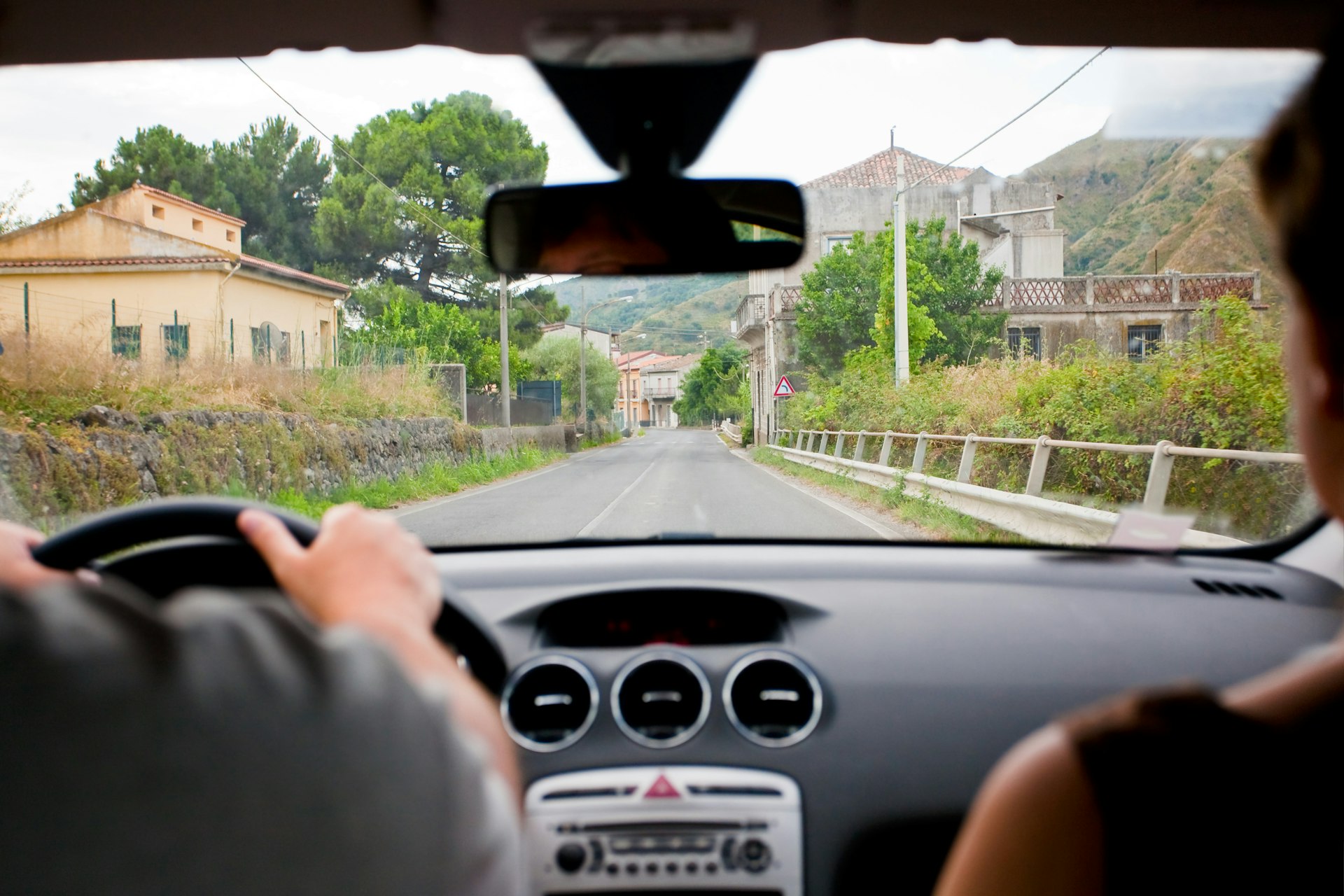
2. Public transport in Sicily is not for the weak
Traveling by train through Sicily is convenient if you stick to the coasts and plan to travel out of main hubs like Palermo, Messina or Catania. However, the schedules are not always reliable, so you should plan plenty of buffer time into your itinerary if you choose to do Sicily without a car. Many of Sicily’s major destinations, like beachy San Vito Lo Capo and the historical hilltop town of Erice , are inaccessible by train, but you can get there by bus. Forgoing a car rental in Sicily is doable, but your trip will be much easier with a set of wheels.
3. Plan to move around
Sicily’s major attractions are dispersed throughout the island, so you will feel limited if you choose one city as your base for the whole trip. There are so many wonderful towns and islands, beautiful hotels, charming bed-and-breakfasts and a vast array of sights – from the ruins of Agrigento to the volcanoes of the Aeolian Islands , and all the historical villages and sunny vineyards in between.
4. Understand the real history of the mafia
Sure, you can buy plenty of Godfather merchandise when you get to Sicily, but you will have a deeper appreciation of the reality of the island’s mafia history if you take the time to understand it as a tragic story, not one to be idealized.
In Palermo, there is a free museum at the No Mafia Memorial , which details the history of organized crime in Sicily and tells the story of Falcone and Borsellino, two heroic judges who were assassinated during the mafia wars of the 1990s. In Corleone – not actually where the movie was filmed – you can also visit CIDMA , a documentation and education center that dives deeper into the saga of the Maxi Trial, a three-year criminal trial that convicted over 300 people involved in organized crime.

5. Italy’s dining dogmas still apply, but one popular breakfast will surprise you
If this isn’t your first time in Italy, you probably already know where Italians stand when it comes to pineapple on pizza, cappuccinos after lunch and chicken in pasta – they will not hear of it. Sicily follows these same rules, but one tradition is likely to delight your inner child: ice cream for breakfast. Italian breakfasts are always sweet, but Sicilians take it to the next level by enjoying either gelato or granita, a type of shaved ice, sandwiched between a fluffy brioche bun first thing in the morning.
6. Sicily’s multicultural history makes it a unique destination
Separated from the mainland by the Strait of Messina, this region of southern Italy has its own cultural identity thanks to its long history of being conquered and influenced by rulers from all over the world. Each culture, from the Greeks and Romans to the Arabs and Crown of Aragon, left its mark in some way. These influences can be found in food – like Sicily's love of couscous – and urban planning and architecture. Whether you’re walking in a city with ancient Greek foundations like Ortigia or delighting in the Baroque streets of Noto , you’ll feel the difference in style but an overall ambiance that is still distinctly Sicilian.
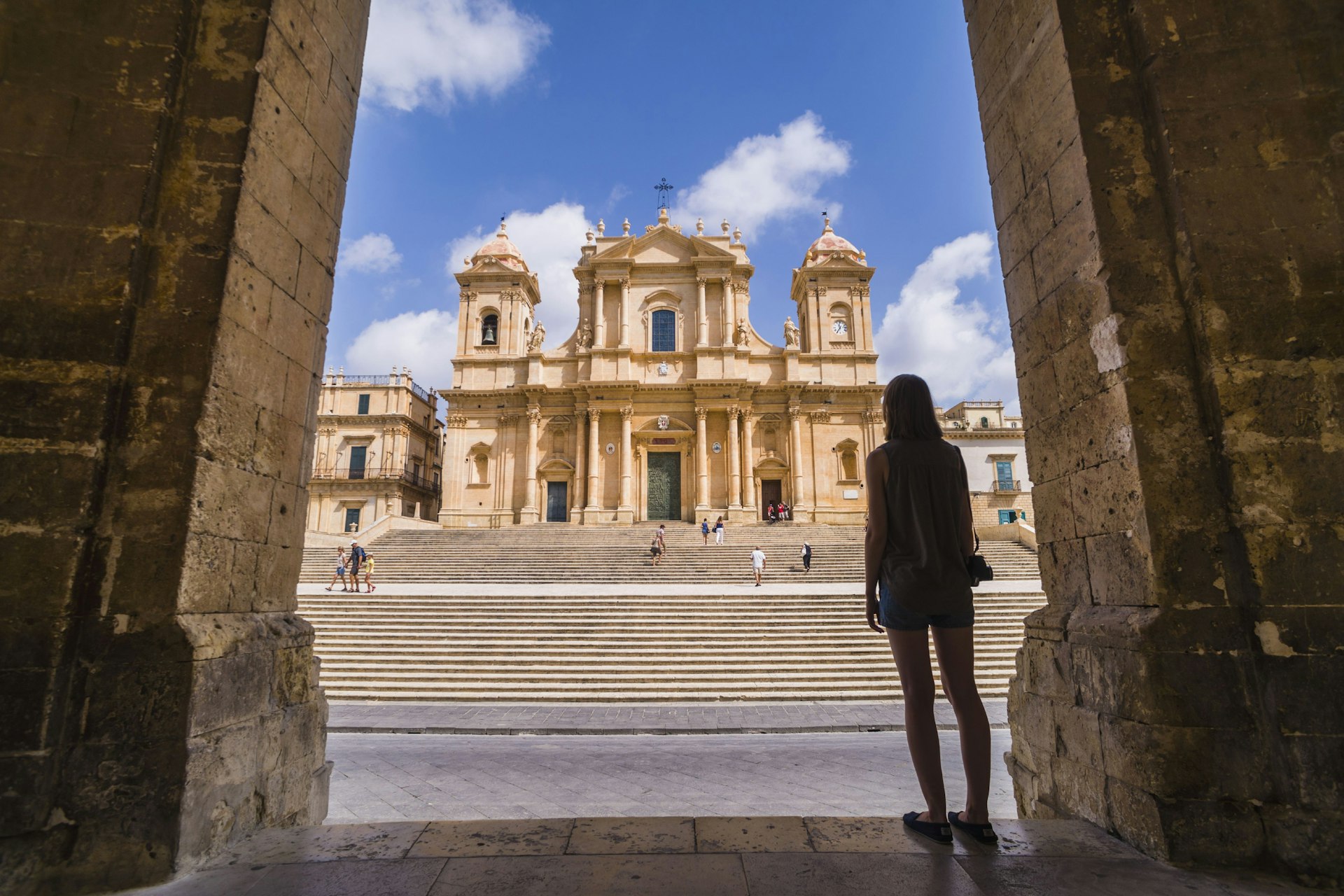
7. You can drink the tap water
Like the rest of Italy, you’ll find many public fountains with free water that is safe to drink unless otherwise marked as “non-potable.” Unless you're advised otherwise, tap water in Sicily is good to drink, but you will find many locals prefer the taste of bottled water. Like elsewhere in Italy and Europe, if you ask for water at a restaurant, they will bring you a bottle and charge you for it. However, if you order an espresso at a cafe bar, it usually comes with a small cup of water on the side to cleanse your palette before you sip.
8. Sicily is the frontier of Europe’s migrant crisis
Ever the crossroads of the Mediterranean, Sicily is one of the main arrival points for refugees seeking asylum in Europe. This is a particularly large issue for the distant Italian island of Lampedusa , which is closer to the coast of Africa than it is to Sicily. The high number of arrivals has at times overwhelmed select areas of Sicily, but in my experience, the effect on the tourism industry has been minimal. Still, it’s wise to educate yourself about these current events before you arrive.
Explore related stories

Tips & Advice
May 24, 2024 • 4 min read
Local travel writers share their favorite lesser-known places to visit in Italy.

Apr 15, 2024 • 10 min read

Mar 21, 2024 • 6 min read

Mar 17, 2024 • 5 min read
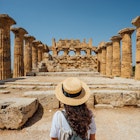
Mar 11, 2024 • 8 min read

Mar 10, 2024 • 6 min read
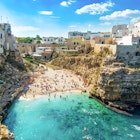
Feb 6, 2024 • 6 min read

Jan 5, 2024 • 20 min read

Dec 19, 2023 • 6 min read
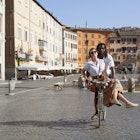
Nov 19, 2023 • 11 min read
- English (EN)
- Español (ES)
- Português (BR)
Is Catania Safe? Crime Rates & Safety Report
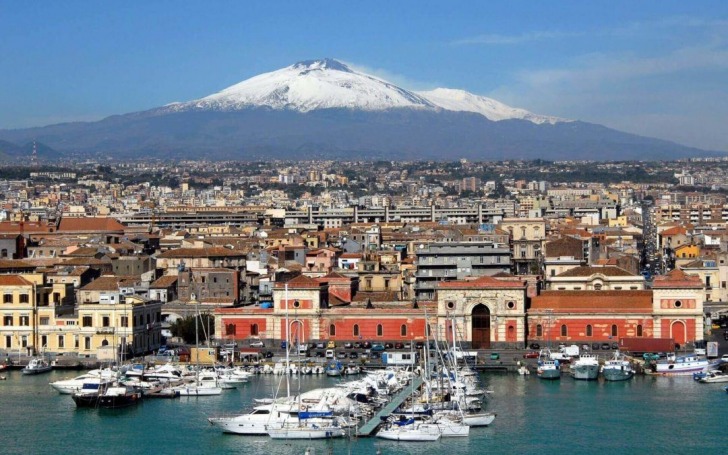
Italy : Safety by City
- Vatican City
Catania is a city located on the eastern coast of Sicily at the foot of Mount Etna, the biggest volcano in Europe.
It is the second-largest city in Sicily with the metropolitan area reaching one million inhabitants, a major transport hub, an economic center and a university city where you will enjoy a busy downtown and an active nightlife.
Travelers come here to see particular baroque architecture and urban design.
The downtown area is a World Heritage Site.
Tourists are exciting landmarks that are easily accessible from this city: large fish market and bustling food and clothes, Mount Etna, The Elephant Fountain, and La Plaja, sandy beaches south of the town along the bay.
- Warnings & Dangers in Catania
OVERALL RISK: MEDIUM
Skating is safe enough for tourists. However, you should especially monitor your belongings, bags, and wallets. Valuable items and jewelry will certainly attract thieves. If you are a road user - turn your head 360 degrees - the traffic here is a little crazy.
TRANSPORT & TAXIS RISK: LOW
Public transport is reasonably comfortable and safe, but you need to keep an eye on your pockets, especially on crowded buses. If you need a taxi, you can usually find one in taxi ranks at train and bus stations or by telephone for one. If you book a taxi by phone, you will be charged for the trip the driver makes to reach you.
PICKPOCKETS RISK: HIGH
Don't wear expensive jewelry. Be sure your bags (purse and camera) are slung across your body and do not carry with you a lot of cash. Be alert and aware of pickpockets, and motorcycle-riding snatch thieves targeting handbags, wallets, and mobile phones. Generally avoid walking at night and take a taxi, like around the train station.
NATURAL DISASTERS RISK: MEDIUM
Catania lies in the middle of the eastern Sicily coast, one of the most seismic and tsunami-prone areas of the Mediterranean Sea. Therefore, the region is prone to earthquakes and floods. Read weather information before visiting this region.
MUGGING RISK: HIGH
Armed attacks and robberies are frequent in Catania. Avoid being on the streets of the city late at night and do not walk in poorly lit streets. It is also better to travel in groups and not attract the attention of robbers with expensive things and values.
TERRORISM RISK: MEDIUM
Terrorist attacks in Italy can’t be ruled out. Since terrorist attacks often occur in Europe, especially in large or tourist cities, there is also the possibility of terrorist attacks in Catania.
SCAMS RISK: MEDIUM
In skating, fraud with overpriced prices for everything for tourists is common. Also, make sure that you have agreed on a price for the service/excursion/purchase in advance - otherwise, you may be deceived. Take only licensed taxis and require the inclusion of a taximeter.
WOMEN TRAVELERS RISK: MEDIUM
Women traveling alone can safely be in Catania. Follow common sense, do not wander the streets late at night, do not attract too much attention, putting on immodest clothes, do not wear a lot of jewelry on yourself, and you will be safe.
- So... How Safe Is Catania Really?
Catania is quite a tourist city.
However, it should be borne in mind that the crime index is high and growing every year.
The main problems are related to car theft, picketing, robbery, and corruption.
Mainly you need to keep track of your bags and wallets.
There are many cases when thieves ride scooters and grab bags from the hands of tourists.
If you need to carry a bag with you, consider bringing one that has a long strap you can cross over your body.
Cross-body purses are harder to get away from you.
You can also make yourself less likely to be targeted by keeping any valuables at home.
You must also be careful at pedestrian crossings and on the road as a whole.
Drivers here are not very neat; they rarely let pedestrians pass at the crossing.
And if you will be driving, then you will encounter crazy traffic: in Catania, they rarely follow the rules of the road and locals behave very aggressively on the road.
Some residential areas can be unsafe at night; travelers should avoid the area around Castello Ursino.
Stay in the main tourist areas around piazza Duomo and via Etnea.
- How Does Catania Compare?
- Useful Information
Italy is a member of the Schengen Area. The visa policy allows nationals of certain countries to enter the Schengen Area via air, land, or sea without a visa for stays of up to 90 days within a 180-day period. Nationals of certain other countries are required to have a visa either upon arrival or in transit. A valid passport is a must.
The Euro is the official currency for Italy. A sign is €; code: EUR. The euro is divided into 100 euro cents. Italy uses the “lira” as its currency before adopting the euro in 1999.
The best times to visit Catania for ideal weather are April to mid-June or September to the end of November. The temperatures feel very nice much of the year but hot in the summer and cold in the winter, with a meager chance of rain or snow throughout the year.
Catania–Fontanarossa Airport also known as Vincenzo Bellini Airport, is an international airport 5 km southwest of Catania, the second-largest city on the Italian island of Sicily. It is the busiest airport in Sicily and the fifth busiest in Italy.
Travel Insurance
The travel insurance policy is a must when visiting a foreign country. Make sure you got it before starting your journey, the customs officer may ask for it.
Catania Weather Averages (Temperatures)
- Average High/Low Temperature
Italy - Safety by City
- Where to Next?
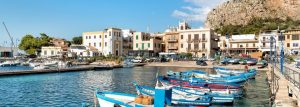
1 Review on Catania
Ratings are very helpful, thank you. But scales seem very flawed. For example, Catania which has mostly medium to high risks in all categories has a higher safety score than Florence which has mostly low to medium risks.
Share Your Experience Cancel reply
Your Review
Title of your review
Article Contents
- Catania : Safety by City
- Overall Risk
- Transport & Taxis Risk
- Pickpockets Risk
- Natural Disasters Risk
- Mugging Risk
- Terrorism Risk
- Women Travelers Risk
- Weather Averages (Temperatures)
- User Reviews
- Share Your Experience
Popular Destinations

Safety Index
Recent reviews & comments.
- Henry West on New Rochelle
- Dan Erick on New Rochelle
- James Reed on Sioux Falls
- Eduard Corpuz on Sioux Falls
- Benjamin Cooper on Lorain
Popular US States
- Pennsylvania
Security Alert May 17, 2024
Worldwide caution, update may 10, 2024, information for u.s. citizens in the middle east.
- Travel Advisories |
- Contact Us |
- MyTravelGov |
Find U.S. Embassies & Consulates
Travel.state.gov, congressional liaison, special issuance agency, u.s. passports, international travel, intercountry adoption, international parental child abduction, records and authentications, popular links, travel advisories, mytravelgov, stay connected, legal resources, legal information, info for u.s. law enforcement, replace or certify documents.
Share this page:
Learn about your destination
Take 90 seconds for safer travel.
Travel Advisory Levels
Enroll in step.

Subscribe to get up-to-date safety and security information and help us reach you in an emergency abroad.
Recommended Web Browsers: Microsoft Edge or Google Chrome.
External Link
You are about to leave travel.state.gov for an external website that is not maintained by the U.S. Department of State.
Links to external websites are provided as a convenience and should not be construed as an endorsement by the U.S. Department of State of the views or products contained therein. If you wish to remain on travel.state.gov, click the "cancel" message.
You are about to visit:
Get Daily Travel Tips & Deals!
By proceeding, you agree to our Privacy Policy and Terms of Use .
Tips on Sicilia Warnings or Dangers – Stay Safe!
Virtual Tourist
Travel Smarter! Sign up for our free newsletter.
Sicilia Warnings and Dangers
The beautiful Mediterranean isle of Sicily, or Sicilia, may seem like paradise on Earth to visitors. However, there are a number of dangers that can potentially ruin a vacation if a traveler is not careful and does not prepare appropriately.
While it may seem mundane, the traffic throughout much of Sicily is so erratic and unorganized that it can be dangerous for someone driving there without any experience. Unless you want to travel over the island, take taxis to get from one spot to the other. If you do decide to rent a car, be certain to drive defensively and give other motorists a wide berth. Finally, be aware of sidewalks (or lack thereof) when you’re walking about — some areas do not have sidewalks and drivers will not stop or slow for pedestrians.
Summer Temperatures
While the southern part of Italy is beautiful year-round, the temperature can quickly approach dangerous levels at the height of summer. Do as the locals do a plan for a siesta from around noon to four (most shops will be closed anyway) and bring lots of water if you’re outside during midday to prevent dehydration and heat stroke.
Pickpockets
In general, the risk of pickpockets is slightly lower in Sicily than it is in other big Italian cities like Rome, Naples, and Florence. However, big crowds attract thieves. If you want to visit a major tourist site, use a traveler’s wallet to keep your money and goods away from prying hands. Don’t wear flashy jewelry, watches, or clothing to attract the wrong kind of attention.
Editor’s Note : The information contained on this page was compiled using real traveler reviews about warnings and dangers in Sicilia.
We hand-pick everything we recommend and select items through testing and reviews. Some products are sent to us free of charge with no incentive to offer a favorable review. We offer our unbiased opinions and do not accept compensation to review products. All items are in stock and prices are accurate at the time of publication. If you buy something through our links, we may earn a commission.
Top Fares From

Don't see a fare you like? View all flight deals from your city.
Today's top travel deals.
Brought to you by ShermansTravel
Oslo to Bergen: 6-Night Norway Fjords...

Luxe, 7-Night Caribbean & Mexico Cruise...
Regent Seven Seas Cruises

Ohio: Daily Car Rentals from Cincinnati

Trending on SmarterTravel
- Places To Stay
- Travel Inspiration
- Experiences
- Food & Drink
- DIGITAL PRODUCTS
SICILY INSIDER
An insider's guide to sicily.
No products in the cart.
Dolphin Watching & Conservation – Dolphins in the Gulf of Catania
Full-Day Etna Jeep Tour from Taormina Including Lunch
Taormina sunset aperitif on-board, mount etna day trip from taormina, aeolian islands day trip from taormina: stromboli and panarea, half-day pizza making class in taormina, taormina food and wine walking tour (small group), the 9 prettiest paradise beaches in sicily, the 7 most instagrammable places in palermo, 6 most touristy places in sicily and where to go instead, best places to get your sicilian food fix in palermo, the best farm stays in sicily, 7 big ideas for the best vacation in sicily, join on social media, for even more exclusive content.
Local Experiences
Travel Photoshoot In Palermo
Streaty – palermo street food walking tour, etna, wine and alcantara tour – small groups from taormina, one day boat tour in the egadi favignana and levanzo, the best locations where to stay in sicily, top 9 must-do activities in syracuse, the best places to stay on the aeolian islands, private monreale, cefalù & castelbuono tour, from palermo area, cooking class with seaview & taormina’s market with chef mimmo, quad tour excursion from the castle to the sea, private 6-hour tour of three etna wineries with food and wine tasting, sicily on a budget: how to experience luxury without breaking the bank, our new digital guide ‘an insider’s guide to northwest sicily’ is here, where to stay and what to do in sicily with kids, mazara del vallo: 6 reasons why you should visit this hidden gem, the 8 best things to do in catania, 9 best date ideas in palermo, 6 amazing things to do in sicily when it rains, an insider’s pocket guide to sicily: islands edition, an insider’s guide to sicily: beaches edition, the best beaches in sicily that are suitable for kids: the “bandiere verdi 2022” awards, 7 underrated places to visit in sicily.

The Best Hotels In Cefalù
The best boutique hotels in sicily, the best hotels in taormina, the best hotels in palermo, 20 things that scream “i’m not italian” in italy, chiara ferragni’s luxurious first evening at villa igiea of palermo, 16 pictures that show how different palermo was .
Food & Drink
Palermo Food Blog: Sicilian Arancine
Taormina and isola bella day tour including a boat tour, etna countryside food and wine lovers tour (small group), elevate your travel photos with our new lightroom presets ‘the colors of sicily’, faq – before you buy our presets, on march 8 women can visit museums for free, an important travel magazine chose sicily as the 11th best island in europe, strong explosion of the stromboli volcano: fear among the inhabitants, the 11 sicilian beaches awarded for the quality of the sea, fresh stories, browse our editor's hand picked articles, an insider’s pocket guide to sicily: spring edition.
An insider's guide to Sicily, the best kept secret of the Mediterranean. We share travel information, tips and advice about Sicily. Travel, dream and explore with us!
© 2024 Sicily Insider. All Rights Reserved.

30 Super Useful Sicily Travel Tips for First-Time Visitors
Visiting Sicily for the first time? You will love it! To make your trip absolutely amazing, here are my 30+ super handy Sicily travel tips you need to know before embarking on the Sicilian adventure.
I traveled around Sicily twice so far (and I am pretty sure I will be coming back). During my two road trips (one and two weeks respectively), I got familiar with local culture, the best ways to get around, what to see, and also how to plan a great Sicily road trip .
Whether you are going for a day, a week, or a month, let me guide you through some practical traveling in Sicily tips, as well as share some inspiration on why you should visit Sicily.
In this Sicily guide, you will find the most important topics and questions answered about Sicily travel: when is the best time to go to Sicily , how to get to Sicily and the best way to travel around Sicily (public transport or driving), how many days in Sicily and which part of Sicily (east or west) to choose for nature, history and architecture, as well as insights into culture, food, and Sicilian lifestyle .
- Related reads: 21 practical tips for driving in Sicily stress-free .
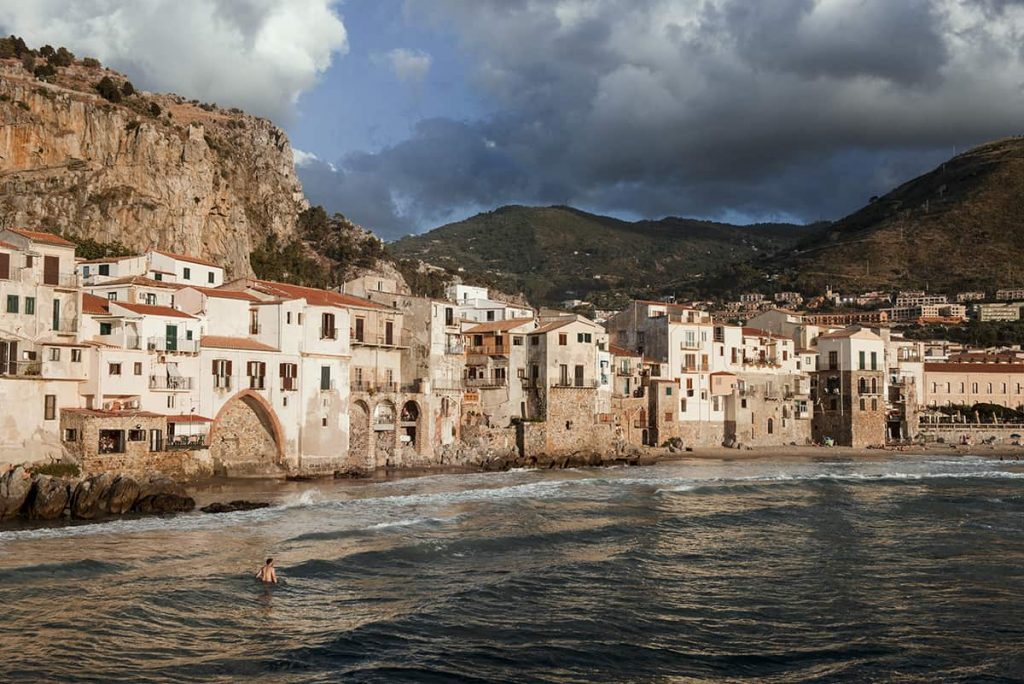
Disclosure : This Sicily Travel Guide contains affiliate links to our trusted partners. It means that we may make a small commission at no extra cost to you if you purchase by clicking a link. It helps us grow the blog and create more of free useful travel advice for you.
30+ essential Sicily travel tips: plan your perfect visit
Sicily travel essentials.
- Rent a car : The best way to explore Sicily is self-driving. Rent a car at the best rates at Discover Cars . I use this website to book my rental cars.
- Stay: find your perfect accommodation in Sicily on Booking.com .
- Best flight deals: Use Skyscanner to find the cheapest and fastest flights to Sicily from your location.
- Peace of mind: always remember to get travel insurance to be on the safe side. Get a quote at SafetyWing .
- eSIM Card: Stay connected as soon as you land. Airalo offers an eSIM card with up to 20 GB (7 to 30 days) data packages for Italy and Europe.
GETTING TO KNOW SICILY
1. there is italy and then there is charismatic sicily.
Kicked by the toe of mainland Italy, the volcanic island of Sicily developed its own identity with a distinct character. Sicily has delightful mischief that you won’t find anywhere else in Italy.
Sicily, although part of Italy, could easily be a country on its own (historically it used to be the Kingdom of Sicily before it became an autonomous region of Italy). Locals proudly call themselves Sicilians and even get offended if you refer to them as Italians.
Indeed, everywhere you go you will see Sicilian flags stretched between the balconies. Meanwhile, colorful Sicilian ceramics are a statement of Sicilian house decor. However, the most obvious way to understand Sicilian identity and witness the pride of being Sicilian is while interacting with locals.
We stayed in different parts of Sicily during our road trip. Every host we met was raving not only about how wonderful Sicily is but also pointing out that the area they are from is the best on the island.
And trust me, the way Sicilians describe their hometown will make you excited to explore it. We got particularly lucky in Palermo with our host Mario whose passion for the town and food made us fall in love with the underrated capital of Sicily.
In short, when the place has a distinct character and identity of its own ready to be explored, it makes traveling way more fulfilling than just scratching the surface of main tourist sights. And Sicily definitely has the charisma!
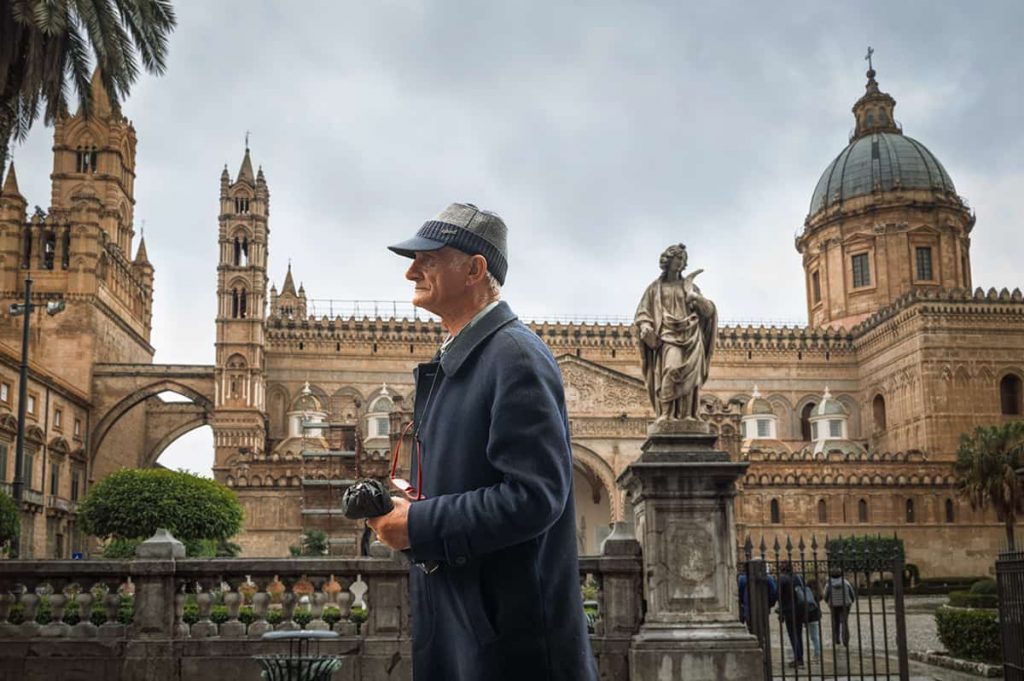
2. Sicily has some of the most diverse histories in Europe
Sicily has been invaded dozens of times by Arabs, Spaniards, Normans, Greeks, and Romans, to name a few major ones. Therefore, if you have an interest in history, discovering Sicily’s layered and diverse past through many remaining historical sites will definitely keep you busy.
Today’s Sicily is like a living museum, a historical artwork celebrating and commemorating some of the most powerful cultures and civilizations.
With a history that stretches over thousands of years, you will find out about the ancient Greek settlements in Agrigento and Syracuse, learn about Baroque architecture in Val di Noto, Roman cultural influence in Villa Romana del Casale mosaics, Arab and Norman impact in Palermo, as well as discover frozen in time medieval villages of Madonie mountains.
To sum up, Sicily is a perfect place to travel back in time and get acquainted with its turbulent history.
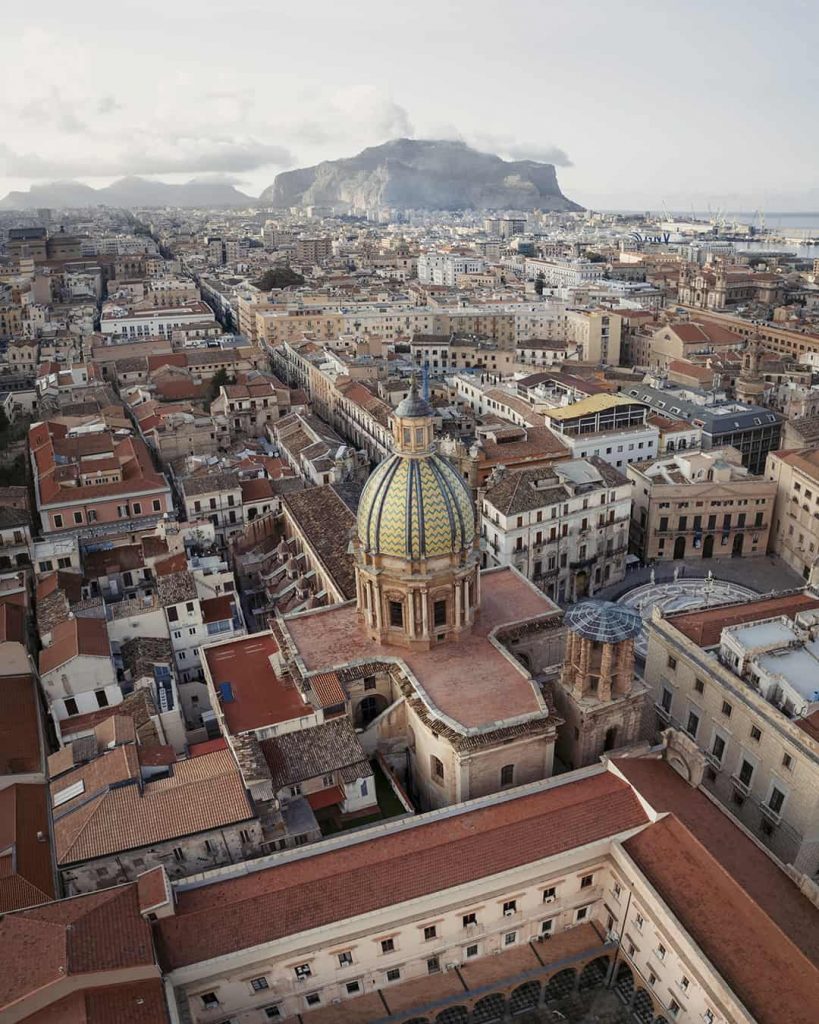
3. Is Sicily worth visiting?
Sicily is a must-visit place in Italy. You can expect to have a very different travel experience even if you have already been to other parts of the country.
You may already know that Italy is very diverse, with different regions having distinct landscapes, architecture, and even cultural nuances. But even if you have been all around Italy, and think that there is just so much more you can expect from yet another region, you will be pleasantly surprised how different from other parts of the country Sicily is.
Sicily can satisfy any kind of traveler as it has everything- fantastic beaches, nature reserves , mountains with hiking trails, some of the most impressive architecture (Syracusa, Val di Noto, Palermo), important historical sights like the valley of temples in Agrigento, frozen in time mountain villages of Madonie , and even wonderful low-key Egadi and high-end Aeolian islands you can easily catch a ferry to.
But above the scenery and cultural sights, Sicily’s highlight is the locals. To me, Sicilians appeared to be some of the friendliest people compared to other parts of Italy. Locals in Sicily are genuinely happy to see you and are very welcoming, curious, and outgoing.
- Make sure to also check my post about 21 must-visit places in Sicily .
- Find The most beautiful small coastal towns and fishing villages in Sicily.
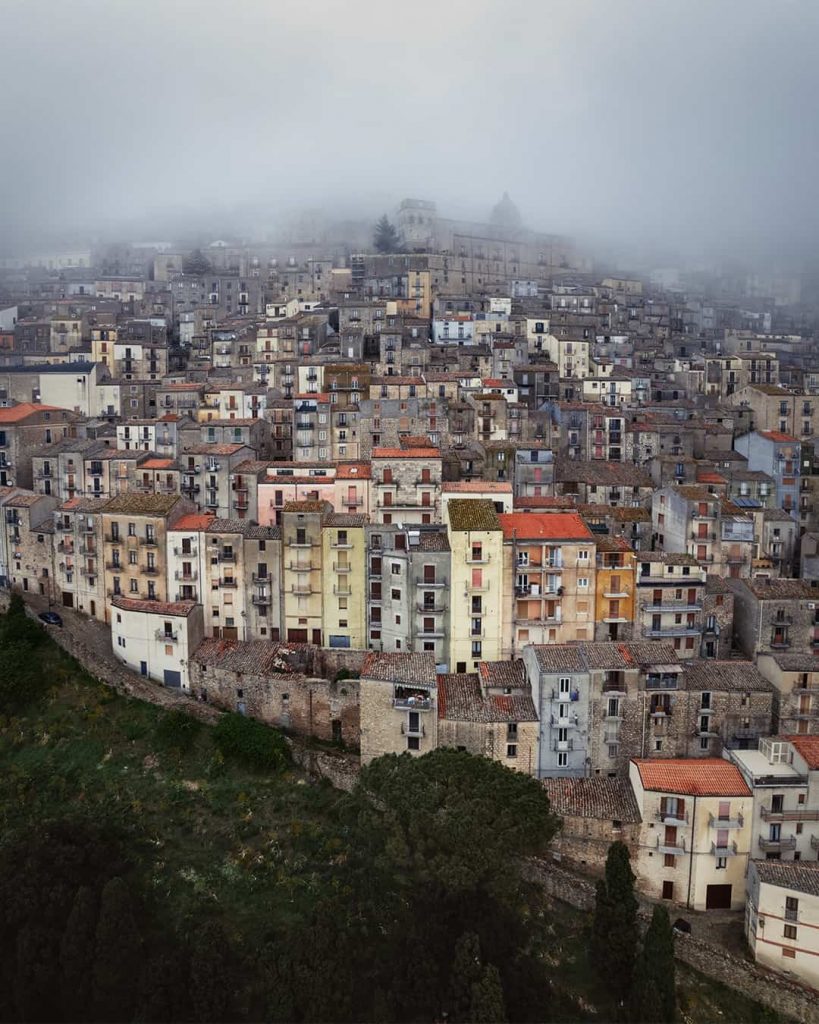
4. Is it safe to travel to Sicily – the birthplace of the Mafia?
Travelling in Sicily is very safe . From my personal experience everywhere we went felt extremely safe in Sicily. People are very welcoming, kind, and genuinely curious about travelers.
Leaving the luggage in the car was probably my biggest safety concern while road tripping in Sicily . Leaving bags in the car was heavily advised against on other travel blogs, but in reality, it wasn’t an issue at all. Of course, there is no need to irresponsibly display your digital camera, laptop, or wallet on the seat which could seduce some robbers. But even if you left some of your belongings in the back seat, it doesn’t mean someone will definitely break into your car.
The only place I was looking over my shoulder was when we walked in the Ballaro neighborhood in Palermo. Later on, however, our local host explained that there was nothing to be worried about. Apparently, Mafia owns many hotels and restaurants in the capital of Sicily. That means tourism is one of their main businesses and travelers are sort of looked after. Thus, small criminals don’t dare to touch a tourist.
Regardless, I would still suggest keeping your guard up in busy areas of Palermo as pickpocketing certainly happens. Just make sure to keep your wallet and phone somewhere safer than the back pocket of your jeans when walking in crowded areas of Palermo, or Catania.
- Related article: Is Sicily safe? Areas to avid and safety tips.
WHEN TO TRAVEL TO SICILY
5. the best time to visit sicily-when should you go.
The best time to visit Sicily is from May to the beginning of June, and from September to the beginning of October. These are shoulder seasons when the weather is great both on the coast, in the towns, and in the mountains. Also, around these months tourists either haven’t arrived yet or already departed.
If you love beaches, September will be better than May as the water in the sea is still warm as opposed to slightly chilly late spring temperatures.
If you don’t care much about the beaches and swimming, and prefer cultural activities, like wandering UNESCO-listed towns and small villages, then any time of the year is a good time as Sicily has a pleasant island climate all year round. You might encounter some fogs and rain if you visit during autumn/winter. On the bright side, it may add to the mysterious atmosphere and interesting photography scenarios.
I would suggest avoiding July and especially August when the majority of Italians are on vacation. Prices of accommodation and car rental shoot up, while beaches and towns are packed with people- not the greatest time to travel to Sicily.
Nonetheless, if you only have summer months, you can still have a great time and pick some less visited places around the Island. Sicily has plenty of hidden gems waiting to be explored.
- READ MORE: Planning on hiring a car in Sicily? Here are my 21 Useful Tips for Driving in Sicily, Italy.
6. Go before it is too late!
Is Sicily very touristy? Yes and no, depending on which place and when you choose to go.
In recent years Sicily has definitely seen a quick increase not only in local but also in foreign tourism. The rough towns like Palermo which used to be considered a bit dangerous, are now completely tourist-friendly and adapted to serve the foreign visitor.
Meanwhile, even remote villages are slowly but steadily opening up cozy B&Bs and getting completely booked out during the peak season.
While many popular beach towns are packed with sun-seekers and local holidaymakers during summer, still there are enough places on the island where you can have an authentic Sicilian experience without crowds. But don’t wait too long, as with social media being so proactive, Sicily is getting on tourist radar pretty fast. Some of the seemingly remote places I have discovered on Instagram!
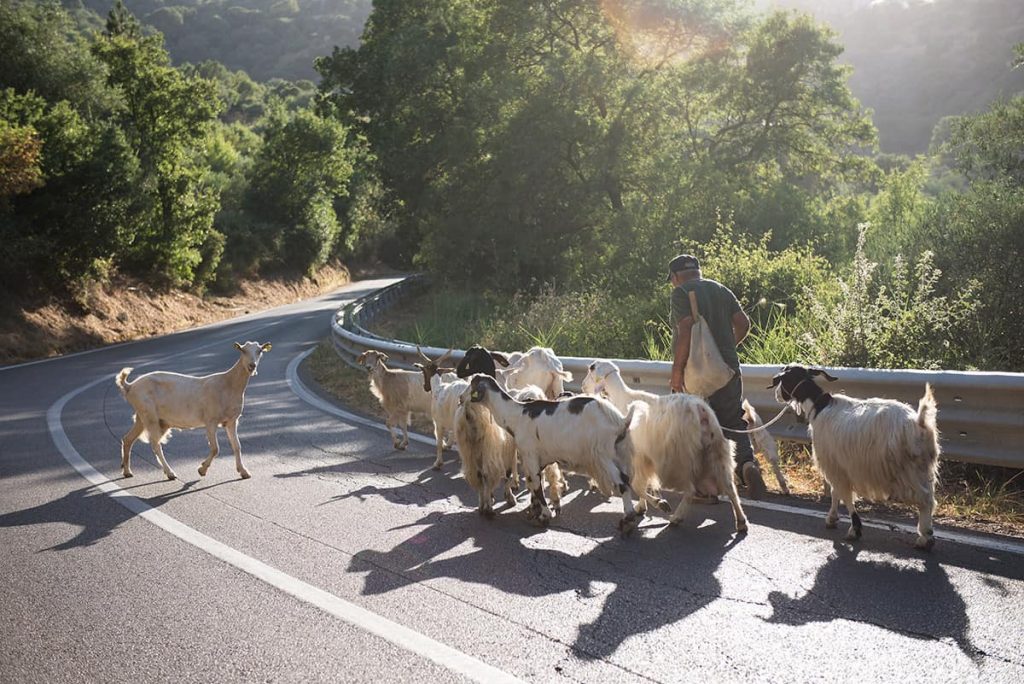
GETTING TO AND AROUND SICILY
Getting to sicily: airplane, ferry, or train.
Sicily is an island separated from the mainland of Italy by the narrow strait of Messina. The good news is that Sicily is very well connected not only to mainland Italy but also to the rest of Europe and even other parts of the world.
Getting to Sicily by air
As expected, most travelers come to Sicily by air. There are 4 airports in Sicily -one in the capital Palermo in the West North, one in Catania in the East, one in Trapani in the West of the island and one near Ragusa Ibla in southeast of Sicily.
If you are flying from Europe, sometimes you can get insanely cheap deals to land in Sicily. Search for the best flight deals using KIWI flight search aggregator .
Getting to Sicily by ferry
Another also quite popular option to reach Sicily is taking a ferry, both nationally and internationally.
Nationally, the main places from where you can reach Sicily are Rome, Naples, Salerno, Genoa, and San Giovani in Calabria (southern Italy-the toe of the boot).
The overnight ferries from Naples, Salerno, Genoa, and Rome arrive in Palermo. Meanwhile, if you are traveling by land from Southern Italy, you can take a 30 min ferry from Villa San Giovani to the port town of Messina, Sicily. This is precisely what we did on our combined Sicily and Calabria road trip.
Internationally, you can reach Sicily from Malta and Tunisia.
Top tip: Ferries to Sicily also accommodate various vehicles. Therefore, if you travel by car, instead of driving long distances, you can “jump” onto the ferry.
- You can easily search for the ferry schedules from your selected departure place using the Directferries website.
Popular ferry routes to Sicily
- Palermo-Naples: 10.5- 11.5 hours; from 50 EUR one way (foot passenger); book tickets here
- Palermo-Rome (Civitavecchia): 14.5 hours; from 60 EUR one way (foot passenger); book tickets here
- Palermo-Genoa: 19.5-20.5 hours; from 45 or 75 EUR one way (foot passenger); book tickets here
- Messina- Salerno: 9-10.5 hours; from 52 EUR one way (foot passenger); book tickets here
- Messina- Reggio Calabria (South Italy) : 30 minutes; from 10 EUR one way (foot passenger); book tickets here
- Catania- Valletta (Malta): 4 hours 45 minutes; from 80 EUR one way (foot passenger); book tickets here
- Palermo-Tunis (Tunisia): 10.5 hours; from 85 EUR one way (foot passenger); book tickets here
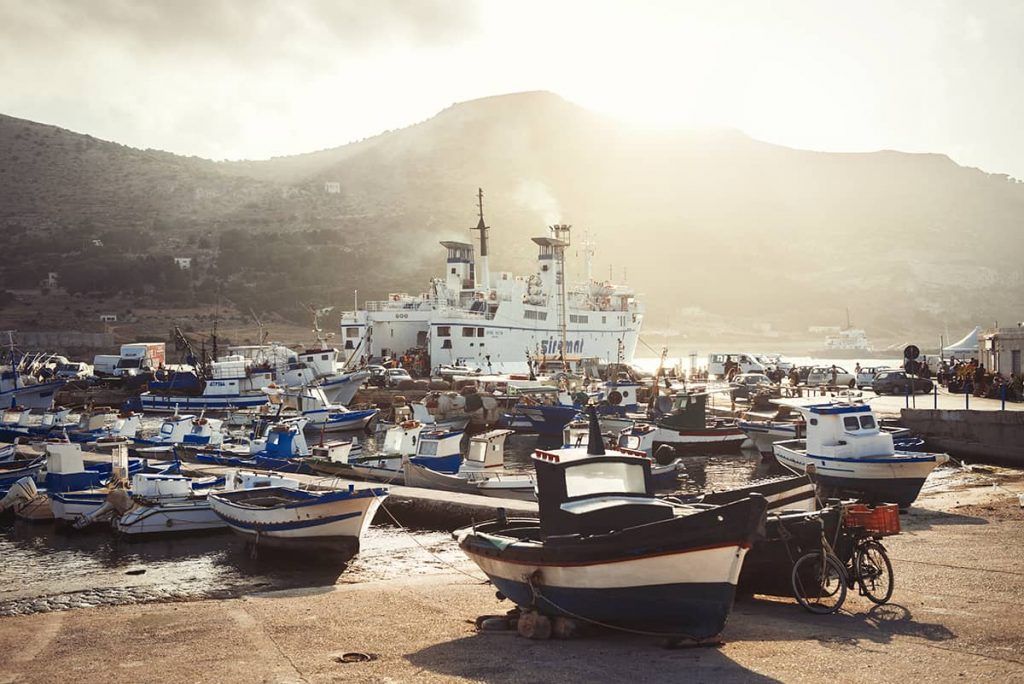
Getting to Sicily by train
The third way is taking a train from the mainland of Sicily. There are train departures from Rome (12 hours) and Naples (9 hours) to Palermo. The train also has routes heading to East Sicily and stops in Taormina, Catania, and Syracuse.
Question- how on Earth does this train get through the water? Apparently, there is a special ferry which transports, yes, the train! This could be an interesting and fun travel experience.
- You can find a train route and book tickets from Italy to Sicily using Omio train search aggregator.
8. Driving is by far the best way to explore Sicily
I am a huge fan of road trips, and Sicily is a perfect place to go on one (check out my 2-week in Sicily Itinerary ).
I am sure you have heard that driving in Sicily might be challenging, which is partially true (if you don’t know what to expect).
However, driving is by far the most convenient way to get around Sicily as you don’t have to rely on irregular and not frequent public transport schedules. Also, hidden gems are only accessible by car (well, in some cases by boat-like Favignana island ). Finally, you will be able to travel at your own pace and get from place to place much faster than with a train or a bus.
Therefore, I strongly recommend renting a car if you are planning to see more than just bigger towns like Catania or Palermo (those places don’t require a car).
Important: book your car well in advance to get the best deal! We booked 3 months ahead to secure a good deal (20 EUR per day). If you leave it to the last minute, chances are, the car rental rates will be much higher.
I found the best car rental prices for my road trip in Sicily with DiscoverCars.
- Car rental tip: if you are looking for an affordable rental car, check Discovercars . This is a car search website that I use for all my trips to Italy. Just by comparing rates between different rental companies, Discovercars can help you save up to 70% on your rental rate . It also gives an option to add a reasonably priced full coverage (insurance).
9. Getting around Sicily with public transport
Public transport in Sicily connects main destinations and more popular tourist towns like Palermo, Catania, Agrigento, Taormina, Messina, and Trapani. If you are not willing to drive you might be able to find your way around using only busses, or trains. Also, you can join organized day trips to places like Taormina, Etna Volcano, and Agrigento.
When it comes to using public transport in Sicily, buses are known to be the most complicated to deal with. I have read stories of buses having completely unreliable schedules, lack of accurate timetables online, needless to say not the most frequent service.
All this makes travelling and planning your time quite tricky. Although, larger companies like Interbus are pretty good. However, regional buses, unless you have unlimited time in Sicily, you can forget about. More often than not, you will have to rely on asking around for accurate information when travelling between smaller towns.
I personally would avoid using buses, except if you are planning to get between main towns and are not going to explore beyond the main tourist destinations. Even some of those places do not always have a guaranteed regular connection.
Trains mainly connect the coastal part of Sicily but are not available for the inland due to its mountainous terrain. Trains as far as I have researched are quite efficient and run according to schedule.
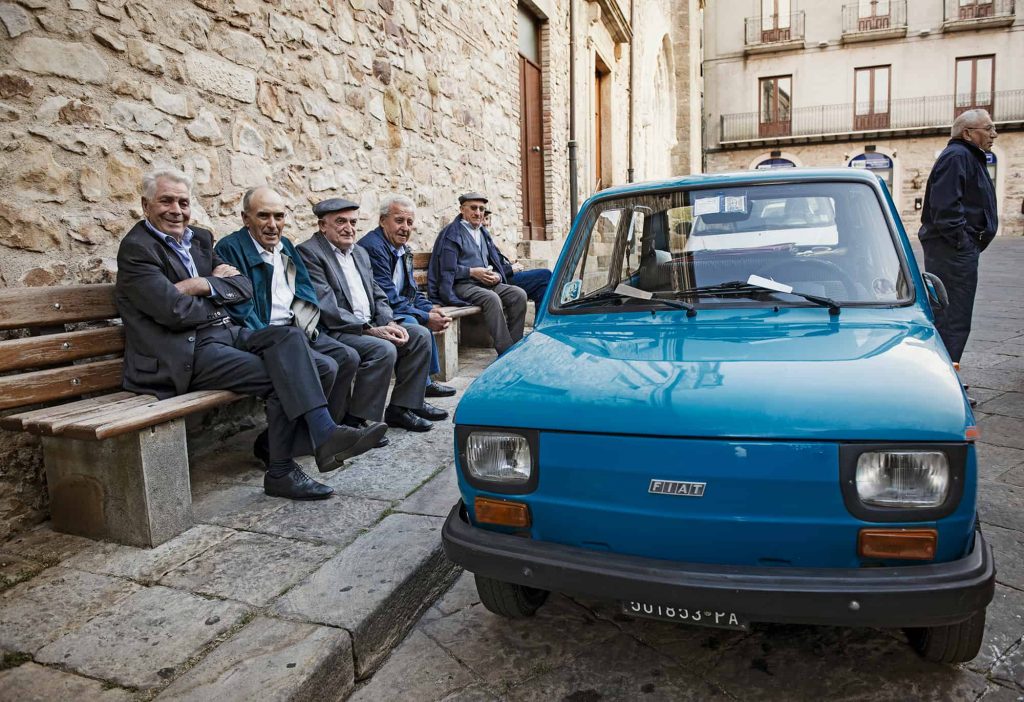
HOW TO PLAN YOUR SICILY ROUTE
10. how many days do you need in sicily .
You need at least 2 weeks and at least 5 different overnight bases to explore the whole perimeter of the island at a medium pace .
To see all the highlights plus some hidden gems of Sicily you will need at least 3 weeks, ideally a month. Having this amount of time, you can slowly drive all around the island discovering different parts of Sicily. Those would include beaches, mountains, archeological sites, baroque towns, fishing villages, Etna volcano and you can even squeeze in a trip to Egadi or Aeolian islands.
Do not try to see the whole island of Sicily in one week. Sicily is bigger than it looks at a first glance. Driving time from West to East of the island is around 4.5 hours.
Understandably, not everyone has a month worth of time to allocate for their vacation. Still, as a bare minimum, I would recommend 10 to 14 days in Sicily . However, you will have to be strategic about how and where you spend your time. You will definitely have to trim down the long list of places of interest in Sicily leaving only what excites you the most.
If you have only around one week in Sicily, the best is to focus on one side of the island. For example, highlights of the west and northwest part, or highlights of the east and southeast part of Sicily, depending on which airport you land at. Definitely don’t try to move all the way from west to east as you will end up spending most of the time in a car.
- Check my two-week road trip itinerary for inspiration and help to you plan your own vacation in Sicily.
11. Visit West Sicily and the hinterlands for a more authentic experience and wild nature
If you are landing in Palermo or Trapani, you are for a treat of wild beaches and nature, the unfiltered lifestyle of Palermo, sleepy Madonie mountain villages, and a slow-paced Favignana island. Western and Norther parts of Sicily are less touristy than the Eastern part. This means you will have a very authentic travel experience wherever you choose to go.

12. Visit East Sicily for Baroque and Greek architecture, Etna volcano, and famous archeological sites
If you are landing in Catania on the Eastern part of Sicily, then you are getting a treat of unparalleled architectural gems-Val di Noto baroque towns like Ragusa, the Greek amphitheater of Taormina, the valley of temples in Agrigento, spectacular Syracuse with Ortigia at its heart, and mighty Etna volcano which you can explore up close by hiking .
Note, that the Eastern part of Sicily is more touristy (due to its cultural wanders and a large number of UNESCO heritage sights which indeed made Sicily famous).
13. The best beaches in Sicily are on the northwestern side of the island.
If you are seeking the sun and going to Sicily mainly for the beaches, then head to the North West. Here, you can find crystal clear waters and some of the most spectacular beaches in Sicily.
The mountainous backdrop characterizes the northwest of the coast. There you will find a perfect natural combination of mountains and the sea offering an array of hiking and swimming activities in one place.
You can find exactly that in Lo Zingaro Nature Reserve . To me, it was the best nature spot with the most incredible beaches in the whole of Sicily.
If you love sandy beaches, then San Vito Lo Capo at the northwestern tip of the island is a place to be. If you are looking for great city vibes with a close-by beach escape then Mondelo beach is just 30min drive from Palermo.
Finally, Favignana islands on the West side of Sicily will surprise you will azure waters and wild beaches to lay your towel at. Read my post about visiting Favignana island for more details.
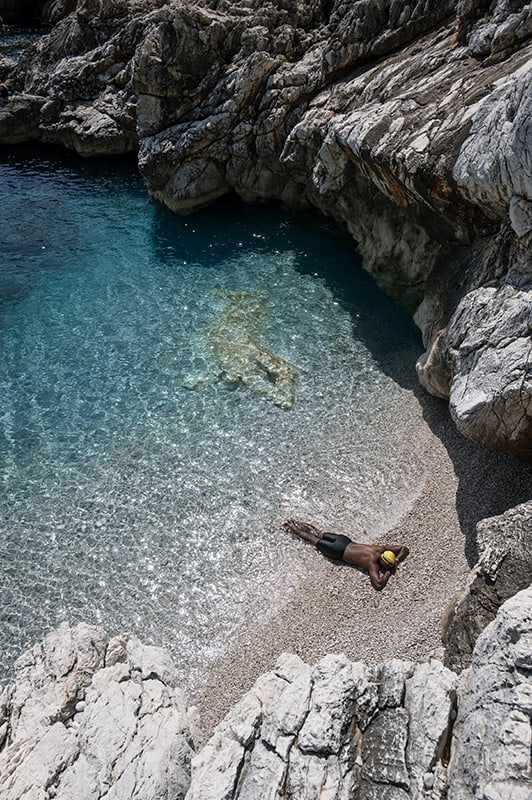
14. Mix up big cities, small towns, and the seaside for a diverse experience in Sicily
To get a real taste of Sicily, plan on visiting a mix of different parts of the island. To understand daily hustle and bustle as well as admire impressive historical buildings, aim for a few days in the biggest towns (Palermo, Catania, Ortigia Island in Syracuse), for the beach scene, go to smaller seaside towns (Cefalu, Castellammare del Golfo), you will find UNESCO listed Baroque architecture in Ragusa, Modica or Noto, for the important archeological treasures head to Agrigento, while for chilled island life- to Egadian islands, for raw nature – to Lo Zingaro Nature Reserve, and to get the sense of the frozen time drive up to medieval villages in Madonie mountains.
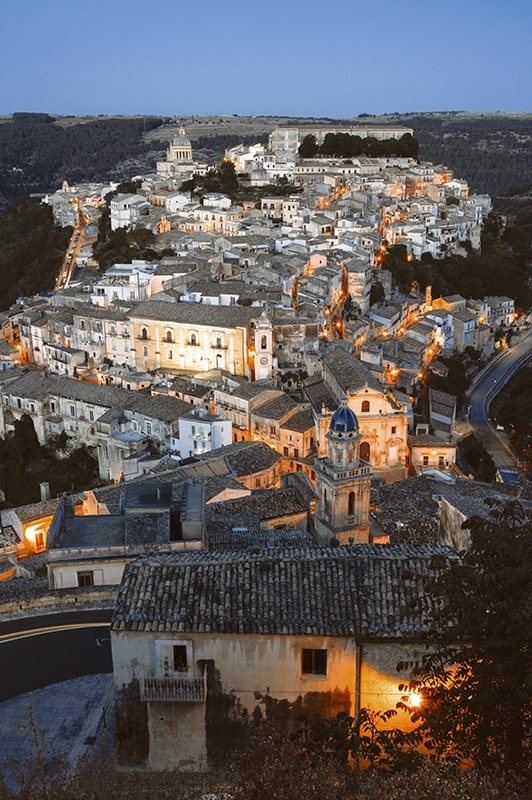
15. Get used to sweating up the hill-mountainous terrain of Sicily
Sicily’s climate and terrain can be very unforgiving in summer. It might become overwhelming if you are not used to almost African heat and hiking. Many Sicilian towns are located in mountainous areas. Getting from landmark to landmark on foot will require broken-in shoes, a hat for shade, lots of sunscreen, and good stamina. Indeed if you are planning to visit some of the small mountain tows, be ready to burn a few calories (which is great considering the carbs intake you will have while in Sicily).
ACCOMMODATION – WHERE TO STAY IN SICILY
There is no shortage of accommodation in Sicily. Depending on your budget, you can pick a room in a boutique hotel, stay in a dorm or in a fancy timeless hotel, rent a cozy apartment, or opt for a homestay. Bigger towns like Palermo and Catania or Trapani will have all these options. Meanwhile, smaller villages may only offer homestays and boutique hotels. In remote locations, you may not always find dorms in Sicily.
The only type of accommodation I have not seen (gladly) was monstrous seaside hotels. Okay maybe a couple of ugly ones in Cefalu were ruining the scenery, but they weren’t nearly as massive as the ones you can find in the UAE or Turkey, for example. And I hope it will stay this way.
16. Stay in homestays for the best local experience in Sicily
I always aim to support local small businesses when travelling, and one of the best ways to do so is to stay in a family-run B&B. Not only do you bring business to a local family but in return, you get more personal and warm treatment as opposed to the very formal approach in regular hotels.
Finally, Sicilians are very knowledgeable about their local area and they are more than happy to share some tips for sightseeing, the best places to eat, and sometimes they even cook for you!
For example, we were very lucky with our host in Palermo who was extremely passionate about his town and Sicily overall. He shared some insider tips, and fantastic stories about Palermo, and gave some great insights about Sicily. It enriched our travel experience and helped us understand the local culture much better.
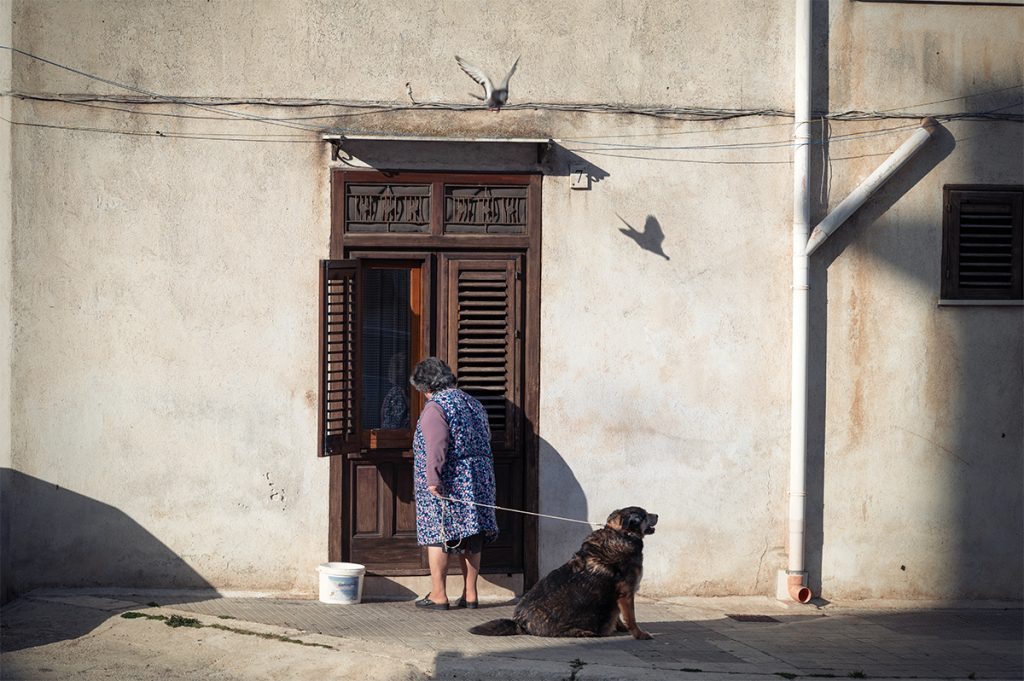
17. Book your stays in popular destinations in Sicily early in advance
Some of the towns in Sicily receive way more visitors than others during the high season (July/August). Therefore, booking early is strongly recommended.
The most popular places that get booked out are Cefalu, Taormina, Syracuse and Ortigia, Favignana (Egadi islands), and Trapani.
For example, even at the beginning of May, accommodation in Cefalu seemed to be 70 percent occupied when I looked it up on the booking site. So I can imagine it can be pretty tough finding a place to stay in summer, let alone getting a reasonable deal.
Alternatively, if you are driving, there are countryside guesthouses called Agriturismo- those are usually fantastic family-run getaways not too far from the main towns.
- Accommodation: I always book my stays through Booking.com . This accommodation search site provides a variety of places to stay for any budget. Also, as a returning customer of Booking.com, you get some great Genius discounts (10-30%), and special mobile-only prices when booking through their app. Tip: always check the booking cancelation policy, and if possible, choose accommodation with the most flexible cancelation terms. I usually book places that I can cancel as close to the trip as possible to be on the safe side in case my plans change.
18. Make sure to check if the parking is available and is not in the ZTL zone
If you are driving, parking is one f the factors you will be making your decision about whether or not you should book a place. Often in towns like Cefalu, there won’t be any parking included in accommodations located in the historic center. Thus, you might have to look for a place to stay outside but close enough to the historic center.
Also, in case you manage to find a place to stay that offers parking in the historic center, double-check with your host if it doesn’t fall under ZTL (Zona Trafico Limitato) , which only permits registered vehicles. You can read more about sneaky ZTL zones in my post about driving in Sicily .
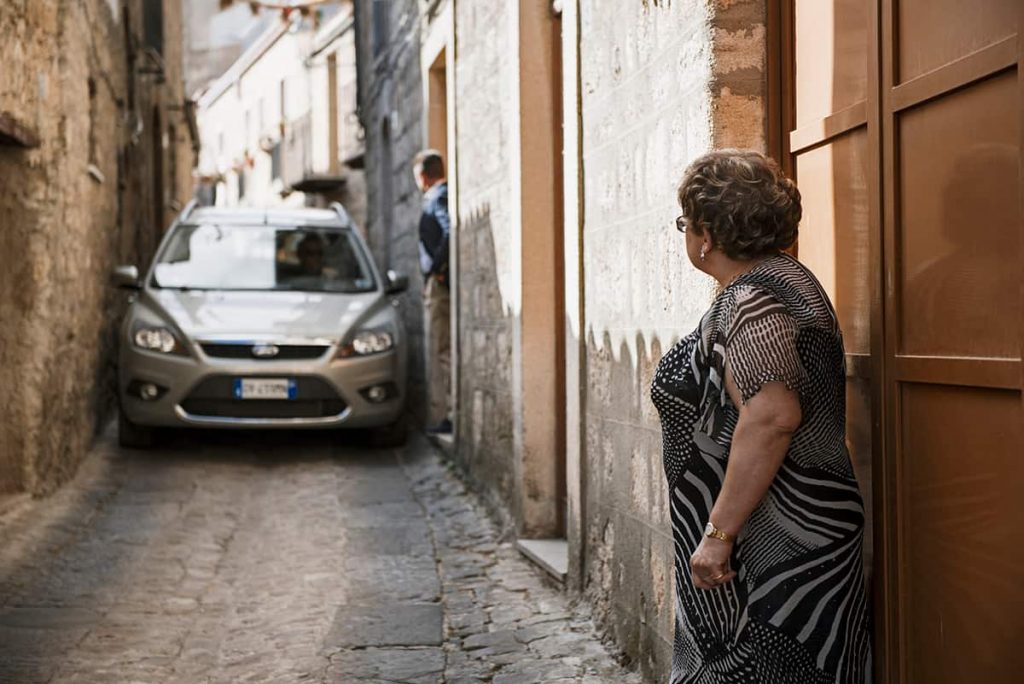
GETTING ACQUAINTED WITH SICILIAN CULTURE
19. travel to sicily just for food.
You could travel to Sicily just for the food. From the famous Pasta alla Norma , tuna burgers, couscous with fish, all sorts of arancini , pizzas to ricotta-filled pastries with cannoli being the king of all, brioche with ice cream, and many more- eating Sicilian specialties can keep you busy all day long. Just looking at the menu in trattoria you can quickly realize that Sicilian cuisine adopted the crossroads of civilizations. There are flavors from Europe and Africa on one plate.
Moreover, Sicily’s capital Palermo is worldwide famous for the best street food. Therefore, forget about fancy restaurants, and go try the fast food- it is fresh and delicious.
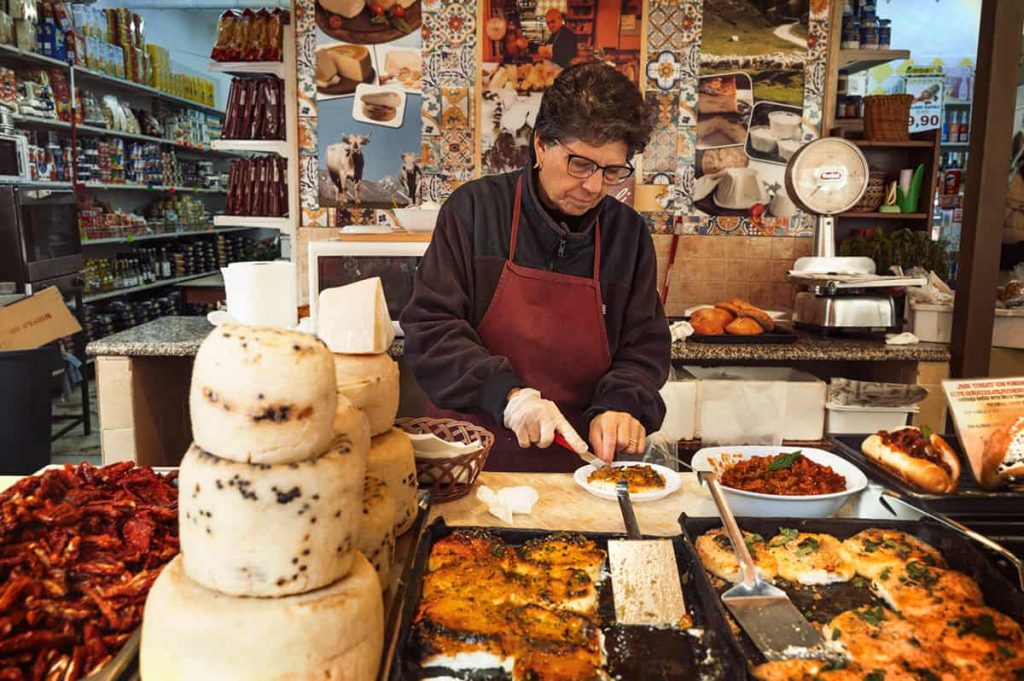
20. Breakfast is not the main meal of the day, but in Sicily, you can fuel up with ice cream in a bun
Sicilian breakfast (as common everywhere in Italy) is always sweet. But having ice cream in brioche is something unheard of and probably only to be found in Sicily.
I know that eating an omelet in the morning sounds bizarre to Italians, but come on, ice cream with bread?! This is whole another level of weird…
Nonetheless, this combination is a guaranteed energy boost and is extremely filling. I have tried brioche with ice cream but decided to stick to the regular pastry and coffee.
Note: when you see breakfast included in your accommodation booking, do not expect English breakfast with sausages and beans. Usually, you will only get coffee and pastries. On a rare occasion, you may find B&Bs offering some panini (sandwiches with ham and cheese). Continental breakfast is only common in bigger hotels.

21. Catch up on your sleep during riposo – understanding Sicilian time (aka siesta)
You probably have heard of siesta in south European countries. Unlike any other timing-related matters, Sicily is taking the midday nap very seriously.
Shops, museums, and restaurants close for so-called riposo or siesta at around 12-1 pm and re-open at around 3-4 pm or even later. Siesta’s starting time is always on the dot while the finishing time is sort of flexible.
Longer siestas are very common in smaller towns. We have struggled to find a place to eat lunch in Madonie mountain villages-everything was closed, and there was no live soul to be seen in the afternoon. Taking into account Sicilian summer heat, having a power nap in the middle of the day is probably the best thing you can do.
Sundays are usually days off and shops and museums, and even some restaurants are also shut for the whole day.
However, in bigger towns like Palermo and Catania, as well as touristy places like Cefalu, Taormina, or Syracuse you can find quite a lot of cafes and gelaterias, and casual eateries which are open during siesta hours and even on Sundays.
22. There is time for aperitivo and then there is time for dinner
Restaurants and trattorias usually open at around 6-7 pm, however actual dinner time is around 8-9 pm in Sicily and Italy. Therefore, it is recommended to reserve a table to avoid the disappointment of having to wait for an even later meal.
However, before heading out for dinner, you should not miss aperitivo which is a time between late afternoon and dinner when people head out for a drink and a small snack before they actually go to have a proper meal.
23. What is coperto – tipping culture and service fee in Sicily, Italy
Coperto (or servizio ) in Italy and also Sicily is a fixed service fee that you pay per person for being served at a restaurant. The amount you must pay varies from place to place but usually it ranges between 1-2 euros. Some more expensive restaurants may charge 2.5-5 euros for coperto per person.
The amount of coperto is usually indicated on the menu. It is a fixed charge and doesn’t depend on how much or little you eat or how long you spend at a table.
If I pay coperto , do I have to leave a tip?
If you love the service and food, the tip will be highly appreciated but it is not a must in Sicily, Italy.
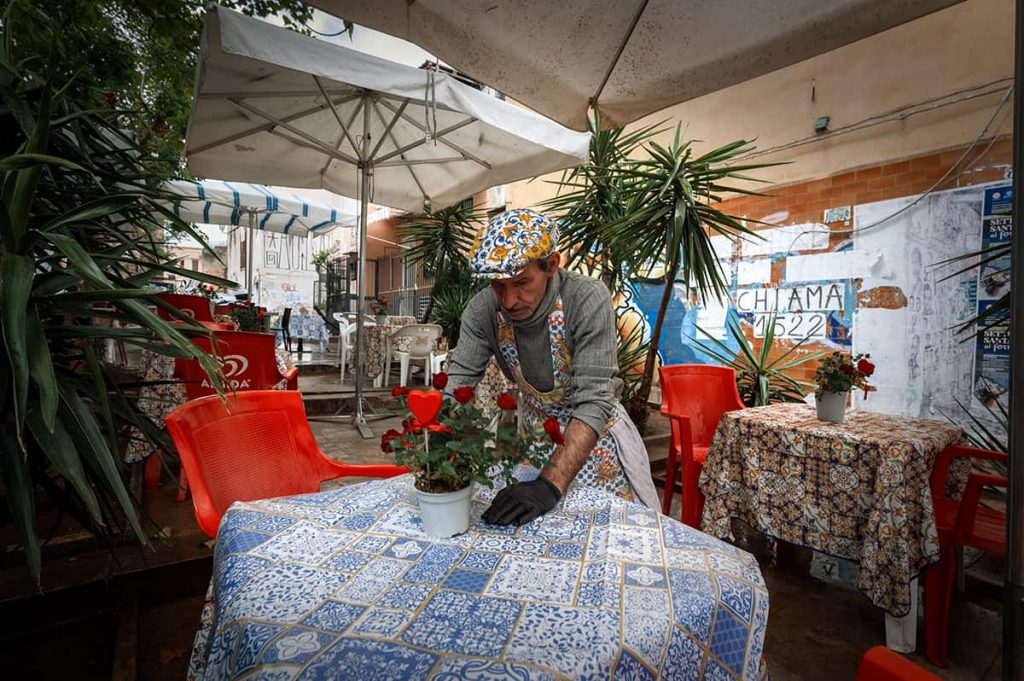
24. Coffee price at a bar vs at a table
Note that you may have to pay coperto in some coffee shops/bars if you choose to have your cappuccino at a table rather than at a bar, as most Sicilians do. Most likely the cost of being served coffee at a table will range from 20 euro cents to one euro.
This doesn’t apply to all coffee shops though. Charging extra for a coffee at a table is more common in touristy and popular areas or famous fancy coffee places. For example, I have been to places in Venice, Rome, Amalfi Coast , and Naples where we had to pay extra for having our cappuccini at a table. Smaller and more casual bars and coffee shops do not collect this fee.

LANGUAGE AND INTERACTION WITH LOCALS
25. a few italian phrases will go a long way but be ready for the sicilian language.
Sicilians barely speak English. Most of the locals don’t speak a word, especially in smaller towns and villages. I can count on my one hand fingers how many fluent English speakers we met on our road trip (when I think of it, probably only 3 or 4 people were very well versed in English and those guys were our hosts at the B&B). Nonetheless, you can still meet younger generation people working at bars and restaurants who can speak some basic English, but not as much as you may expect.
Moreover, even information in museums, churches, and even parking signs are in Italian! Therefore, learning some basic survival phrases in the local language will go a long way.
After many years of thinking about it, I finally signed up for an online Italian course just 3 months before my Sicily road trip. I could not be happier about dedicating some time to learning Italian. It really came in handy in Sicily and South Italy.
It seemed that Sicilians really appreciated my effort to speak in Italian, even if it was a very basic conversation. It also helped me to understand simple daily things related to accommodation questions and directions. And don’t worry if you don’t know how to say something properly, Sicilians will always try to help you out when you are lost in translation.
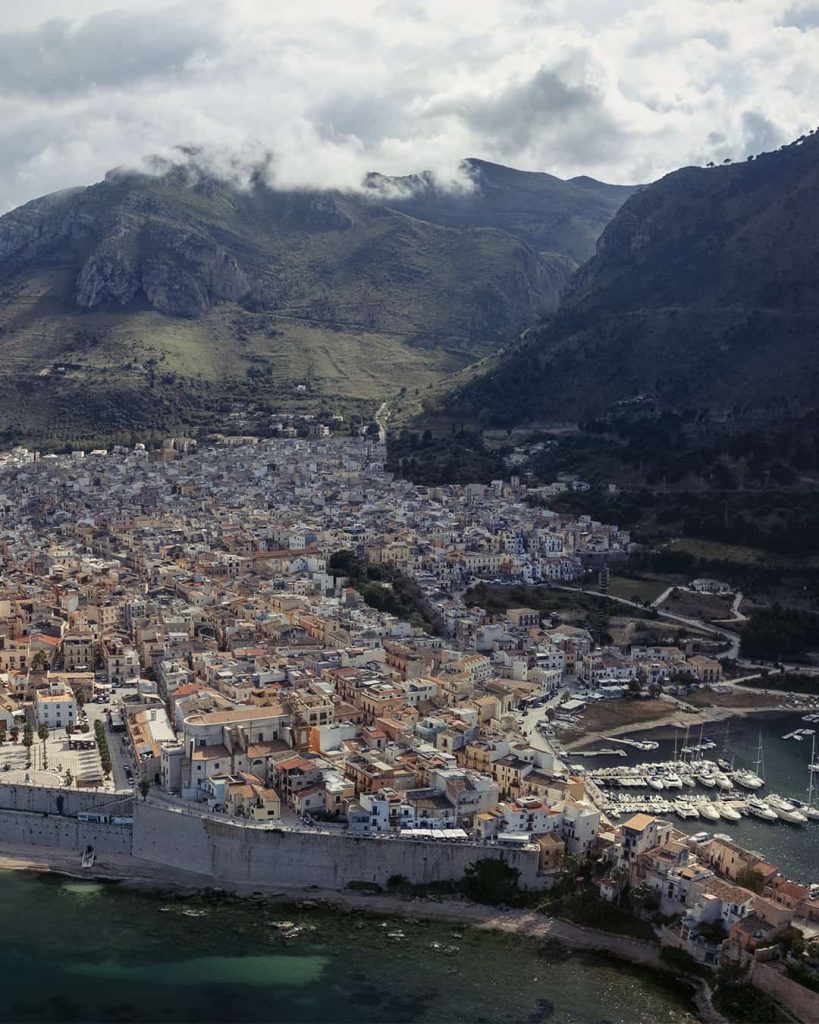
Nonetheless, there was a bit of a catch. Sicilians apparently often speak the Sicilian language (it is a language, not even a dialect). Although they do speak official Italian, there were times when they spoke in Sicilian and it sounded like a totally different language- I couldn’t catch a single familiar word!
However, this didn’t happen often. Most of the time people spoke regular Italian and if you are lucky- even a few English words.
If you are thinking of learning some Italian basics, the best interactive course that I found online is Rocket Languages. Rocket Italian course is a set of audio conversations, grammar, and written and oral practice. You can have it on an app on your phone or your laptop, and learn at your own pace, come back to it whenever you want to repeat something or skip ahead.
Subscribing to the course gives you a 2-week free trial, lifetime access, and also 60-day money-back guarantee if you don’t find it useful (I definitely find it super useful and I still continue to study after my trip).
26. Meet the locals
Interact with locals. Sightseeing is amazing, but the true joy is in those short (or long) conversations and cheerful interactions with the local people. Sicilians are very outgoing and friendly (I think I already mentioned that before).
Even if you don’t speak Italian, don’t shy away from the hand language. I am sure the minimum you can learn is a friendly ‘ciao’ when you meet a person on the street. Trust me, they will happily respond. Sicilians are often curious to know where you are coming from-‘ di dove sei? ‘.
Usually, their guesses revolve around the most well-known destinations such as UK, Germany, France, or America (apparently people from these countries are frequent visitors). Sicilians were extremely delighted to find out that we came all the way from the UAE to their beautiful island. In fact, many of them confessed that Dubai is their dream destination to travel to. To this, I always joyfully replied, that yes indeed it is a beautiful place to see and live, but there is no place as wonderful as Sicily (I do have a very soft spot for Italy- a perfect place to move to one day).
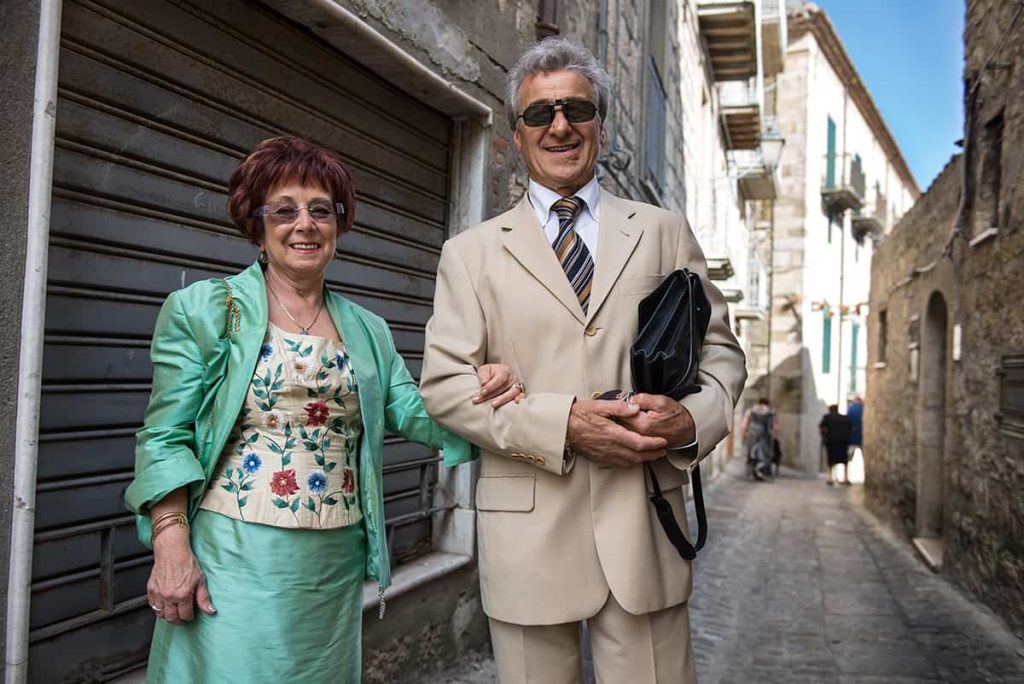
27. Do not joke about Mafia
Sicily is often associated with the birthplace of the Mafia. Thanks to Hollywood films that have glorified organized criminal groups in movies such as Godfather, there are a lot of misconceptions about past events. In reality, Sicilians had to deal with horror created by the local mafia and face consequences until today.
Therefore, this is a sensitive subject to bring up when talking to locals. It is not advisable to joke about it as you never know whose family member has actually been a victim of organized crime in Sicily.
Although the local mafia in Sicily still exists and operates today. In some places, business owners still pay a second tax that goes to organized crime and so-called protection.
However, as a tourist, you are not likely to come across any of these mafia-related aspects. Let alone experience any violence or dealings with the Mafia. Interestingly, in Palermo some hotels are owned by Mafia, while some actually set themselves free and signed anti-extortion charters – there is even a “pizzo-free” map with the list of these accommodations, in case you want to avoid supporting the bloody businesses.

MONEY, INTERNET, SIM CARD, GROCERIES
28. is sicily expensive to travel to .
Sicily is still less expensive to travel around than, for example, northern and central Italy. Especially if you go to smaller and less known towns like Castellammare del Golfo, you can find great accommodation deals. When it comes to food, you can get some bargain deals for street food in Palermo, amazing pizzas, and an unlimited supply of pastries everywhere.
You can check the budget breakdown on my Sicily Road Trip Itinerary post HERE to get an idea of what it costs to travel in Sicily.
29. Debit and credit cards are widely accepted in Sicily but always have some small change
Contrary to what I had read online before traveling to Sicily, debit and credit cards were widely accepted across the island. Even in smaller restaurants and shops. We paid for all our accommodation by card and very rarely needed to use cash (usually the possibility to pay by card is indicated on booking, or it is an automated advance charge prior to arrival).
Nonetheless, I still advise having some emergency cash for small spending. Not all the shops will have card machines, and even if they do, sometimes they may say it is not working so they can collect cash (as we learned from a local).
Some self-service petrol stations might also have card issues- which happened to us- and in this case, you definitely want to have cash.
Also buying small things like souvenirs or paying for toll gates is usually more convenient in cash.
30. Get a local sim card for cheaper data
If you are travelling for a couple of weeks in Sicily, it is well worth getting a local sim card with data and calls. It would usually be much cheaper than roaming. Tourist packs are available to purchase from TIM or Vodafone providers are offering pay-as-you-go tourist packages with the best coverage.
31. Be ready to allocate a couple of hours to sort out the SIM card
Okay, there is a catch when it comes to sorting out the local SIM card in Italy, and also Sicily. It is probably one of the most complicated places when it comes to getting a data plan. The tricky part is that you may not be able to get SIM card at the airport which is the most convenient way when starting your journey in a foreign country.
Instead, you may have to look for a local TIM or Vodafone store in the town. If you are renting a car at the airport, the best way is to look up the nearest store and pre-download its location on Google Maps.
Be aware of your arrival time- if it is during working hours or not. Also, take siesta time into consideration (stores close from around 1-2 PM till 4-5 PM). Luckily, this might not be applicable if the store is located in a bigger shopping center. However, malls are not that common in Italy.
Once you are at the store, expect around 30 minutes to sort out payment, and installation, and then add another hour for activation of the SIM.
I am sharing my personal experience here. When landed at Naples airport, there was no SIM card shop available (2022). Therefore, we pre-downloaded Google maps with the nearest mall that had TIM shop (it was open during siesta time- made sure to check it). It took around 2 hours to sort out the internet but it was totally worth it to get this out of the way for our 3 -week-long journey in South Italy and Sicily. We purchased a generous 70GB plan for around 20 EUR, which was valid for 30 days, local calls included.
32. Big supermarkets are less popular than local specialty shops and markets
When travelling to Sicily, and also Italy, you may notice that big supermarkets are not that common. Thus, whenever you want to do grocery shopping, it might not be as per your usual habit of buying everything in one spot.
In Sicily, people still love using markets and specialty shops where they buy a specific product. There are separate pescaterias (fish shop), paneterias (bakeries), cheese, meat, fresh pasta, and vegetable shops. Those are the best places to get fresh produce.
Certainly, you can find mini-markets in every town where they sell the basics- milk, eggs, canned stuff, a small selection of cheese and sausages as well as some cleaning and shower products, detergents, and whatnot.
Talking about mini markets, we had a fun experience in Castellamare del Golfo. We were looking for a small bottle of olive oil to use for breakfast, but all shops had only 1-liter bottles which we couldn’t carry around and it would have been a waste of buying one. A lady working at one of the mini-markets in town understood our situation, and literally pulled out a bottle of olive oil and poured some of it into a small plastic cup for us to take away (at no extra cost). It was very kind of her and something you are not likely to experience in big shopping centers.
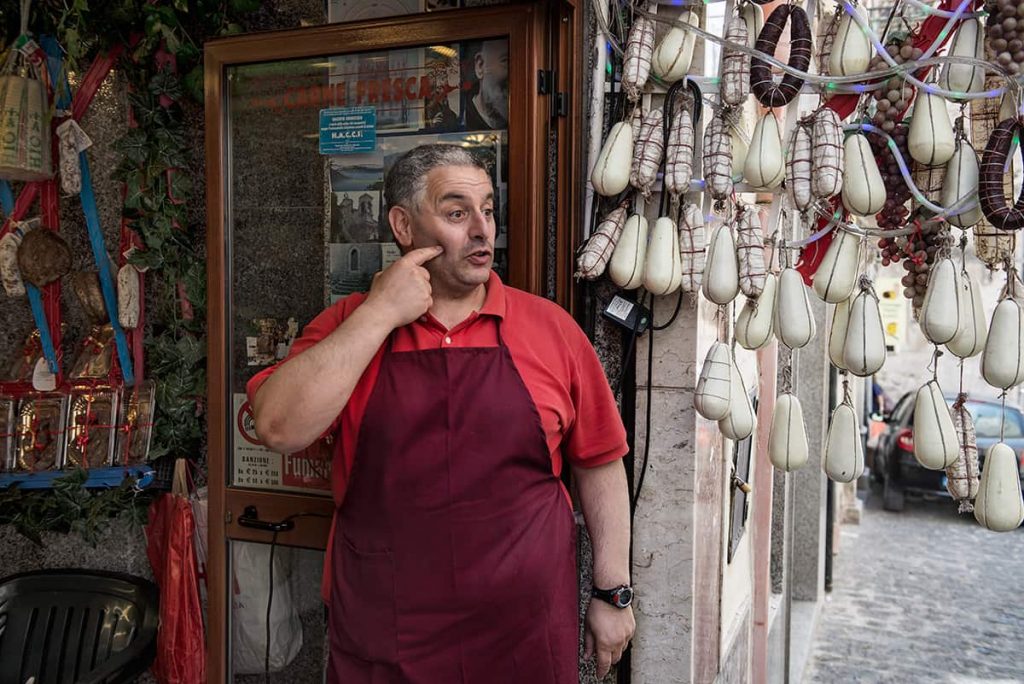
33. Covid – 19 in Sicily requirements
UPDATE: this is not applicable, Corona is gone!
Today you can travel to Sicily and Italy by air for tourism purposes. All Covid-19 regulations have been lifted for travel to Italy. For more information about the requirements related to covid- 19 refer to this page .
Masks are still being worn inside supermarkets, churches, and museums. It was a strict requirement to wear a special medical mask (sold at the coffee shop at the port in case you don’t have one) on the Trapani-Favignana ferry. I have noticed that many elderly people still wore masks outside, and even in small towns. Knowing that Italy was one of the countries hardest hit by pandemics, it comes as no surprise.
Have you ever been to a destination where traveling felt challenging, or on the contrary- a complete breeze? Share your experience in the comments below. Also, if you have more questions about traveling to Sicily, please feel free to get in touch.
More Italy travel guides
Sicily travel guides.
- Useful Tips for Renting a Car in Sicily and Driving Stress-Free
- Renting a car in Catania, Sicily
- Renting a car in Palermo: what you need to know
- Epic Road Trip for 2-weeks in Sicily itinerary
- Essential Sicily Travel Tips .
- 21 spectacular places to visit in Sicily
- How to visit Favignana island, Sicily
- Guide to hiking Lo Zingaro Nature Reserve
- Visit Gangi mountain town in Sicily
- The most beautiful small coastal towns and fishing villages in Sicily.
- The most charming mountain towns in Sicily .
- Which is better: Amalfi Coast or Sicily?
- Is Sicily safe? Areas to avoid and safety tips by a regular visitor.
- Airports in Sicily Italy : which one you should fly to?
Italy Itineraries
- 15 Most Beautiful Road Trips in Italy: great ideas for your Italy itinerary
- 10-Day South Italy Itinerary: Naples to Calabria road trip
- 14-Day Sicily Itinerary: a 2-week Sicily road trip
- 2 Days in Amalfi Coast Itinerary: how to spend 48 hours on Amalfi Coast, Italy
- 2 weeks Puglia itinerary – Italy’s heel in 14 days
General Italy travel guides
- Browse all my blog posts about Italy HERE .
- Looking for romantic road trip ideas in Italy? Check my list of 15 Best Road Trips in Italy.
- The ultimate guide to renting a car in Italy
- Tips for driving in Italy for the first time
- Thinking of renting a car in Rome? Read my guide to How to rent a car in Rome .
- Best coastal towns in southern Italy.
- Explore Calabria- the least visited region in Italy.
- Visit Sicily- the biggest island in Italy.
Italy travel resources
Here are links to essential travel resources and services I always use when organizing my trips.
- HIRE A CAR : Rent a car at the best rates at Discover Cars .
- CHEAP FLIGHTS: find the cheapest and the best flight combinations with Skyscanner .
- ACCOMMODATION: find your perfect stay on Booking.com .
- VISA: apply for a Schengen visa easily at iVisa . Use OneWayFly to reserve dummy flight tickets/hotels if required for your visa application.
- TRAVEL INSURANCE: get 5% off your insurance by using my link on Heymondo , a travel insurance provider. For the cheapest travel insurance on the market check SafetyWing .
- eSIM CARD: Stay connected before you land. Airlo offers an eSIM card with up to 20 GB (7 to 30 days) data packages for Italy and Europe for reasonable rates.
- GUIDED TOURS: Find the best day tours in Italy on GetYourGuide , outdoor tours and activities with Manawa .
- PRIVATE TRANSFER: Book a private transfer to any location in Italy with GetTransfer .
- FLIGHT GOT CANCELLED OR DELAYED? You may receive compensation of up to 600 EUR. Consult and get support from AirHelp or Skycop .
Hi! I am a freelance photographer & videographer as well the creator of www.theroadreel.com. Born in Lithuania, and currently residing in the UAE, I have been traveling around the globe independently for over a decade. I created The Road Reel to share my passion for travel and photography through detailed road trips and city itineraries, and hiking guides, along with regular and drone photogragraphy tips.
Leave a Reply Cancel reply
Your email address will not be published. Required fields are marked *
Save my name, email, and website in this browser for the next time I comment.

Last verified: Tuesday, 4. June 2024 at 08:22 AM
Italy Travel Advisory
- Southern Europe
- Italy Travel Advice
We advise caution when travelling to Italy
Local situation: 3.0 / 5.
We advise caution when travelling to Italy. We detected travel advisories from 8 sources for this specific country.
Regional Situation: 3.7 / 5
Italy shares a land border with 6 neighbouring states. For this region of countries (including Italy), the Advisory Index is 3.7 (average value over all countries). All countries have some reported advisories: San Marino (5), Vatican (5), Switzerland (4), Austria (3), France with 3 and Slovenia with 3 (of 5).
Current informationen on Covid-19 in Italy
There are currently no officially reported cases of infections with SARS-CoV-2 (or Coronavirus) in Italy. As reported by the European Centre for Disease Prevention and Control this morning (~8:30am CET).
There are currently no officially reported deaths related to this disease in Italy.
Source: www.ecdc.europa.eu
Advice scoring history for Italy
Chart of the risk level over that last 200 days. This is the daily calculated travel risk for Italy.
Chart of the number of sources over that last 200 days. This is the daily number of advisory sources (of any rating) that have been active on that day.
Note: Changes happening on the 28th/29th of July 2019 are related to a change in the software and number of sources processed.
Rating Details (single travel warnings)
These are the individual advisories published by other countries about the destination Italy from a travellers perspective. The scoring of all messages combined is the foundation for the current rating 3.0 out of 5.0 .
This is the general advisory usually covering the country as a whole.
Advisory issued by: New Zealand

Exercise increased caution in Italy (level 2 of 4).
Source: https://www.safetravel.govt.nz/italy
Advisory issued by: United States

Reissued with obsolete COVID-19 page links removed. Exercise increased caution due to terrorism. Country Summary: Terrorist groups continue plotting possible attacks in Italy. Terrorists may attack with little or no warning, targeting tourist locations, transportation hubs, markets/shopping malls, local government facilities, hotels, clubs, restaurants, places ...
Source: http://travel.state.gov/content/travel/en/traveladvisories/traveladvisories/italy-travel-advisory.html
Advisory issued by: Finland

Iaktta normal försiktighet - Tryggt resmål. Se upp för ficktjuvar. Demonstrationer förekommer. Undvik folksamlingar.
Source: https://um.fi/resemeddelande/-/c/IT
Advisory issued by: Canada

The Canadian goverment suggests: Exercise a high degree of caution.
Source: https://travel.gc.ca/destinations/italy
Individual rating changes for Italy
This is the recent history of individual changes of travel advices that affected the total asessment of Italy. Most recent events first.
Changes from September 18th 2020
The total rating for Italy changed from 3.2 to 3.6 . Here are the influencing details:

The Irish government increased their existing warning for Italy to 4.0 (of 5.0) from the previous rating of 1.0 (by +3.0).
Changes from July 22nd 2020
The total rating for Italy changed from 3.6 to 3.2 . Here are the influencing details:
The Irish government decreased their existing warning for Italy to 1.0 (of 5.0) from the previous rating of 4.0 (by -3.0).
Changes from June 27th 2020
The total rating for Italy changed from 3.7 to 3.6 . Here are the influencing details:

The Danish government decreased their existing warning for Italy to 3.0 (of 5.0) from the previous rating of 4.0 (by -1.0).
Changes from June 11th 2020
The total rating for Italy changed from 3.9 to 3.7 . Here are the influencing details:

The Austrian government decreased their existing warning for Italy to 3.0 (of 5.0) from the previous rating of 5.0 (by -2.0).
Changes from June 9th 2020
The total rating for Italy changed from 4.1 to 3.9 . Here are the influencing details:

The Finnish government decreased their existing warning for Italy to 2.0 (of 5.0) from the previous rating of 4.0 (by -2.0).
Changes from May 15th 2020
The total rating for Italy changed from 4.2 to 4.1 . Here are the influencing details:
The Irish government decreased their existing warning for Italy to 4.0 (of 5.0) from the previous rating of 5.0 (by -1.0).
Changes from March 28th 2020
The total rating for Italy changed from 4.3 to 4.2 . Here are the influencing details:
The Finnish government issued a new warning for Italy with a rating of 4.0.
Changes from March 27th 2020
The total rating for Italy changed from 4.2 to 4.3 . Here are the influencing details:
The Finnish government removed their warning for Italy with a previous rating of 0.0.
Changes from March 18th 2020
The total rating for Italy changed from 4.1 to 4.2 . Here are the influencing details:

The Australian government increased their existing warning for Italy to 5.0 (of 5.0) from the previous rating of 4.0 (by +1.0).
Changes from March 11th 2020
The total rating for Italy changed from 3.7 to 4.1 . Here are the influencing details:
The Irish government increased their existing warning for Italy to 5.0 (of 5.0) from the previous rating of 3.0 (by +2.0).
The Austrian government increased their existing warning for Italy to 5.0 (of 5.0) from the previous rating of 3.0 (by +2.0).
Changes from March 10th 2020
The total rating for Italy changed from 3.1 to 3.7 . Here are the influencing details:

The Canadian government issued a new warning for Italy with a rating of 4.0.
The Danish government increased their existing warning for Italy to 4.0 (of 5.0) from the previous rating of 3.0 (by +1.0).

The New Zealand government increased their existing warning for Italy to 4.0 (of 5.0) from the previous rating of 2.0 (by +2.0).
The Australian government issued a new warning for Italy with a rating of 4.0.
Changes from March 9th 2020
The total rating for Italy changed from 3.0 to 3.1 . Here are the influencing details:
The Finnish government increased their existing warning for Italy to 4.0 (of 5.0) from the previous rating of 3.0 (by +1.0).
Changes from March 4th 2020
The total rating for Italy changed from 2.7 to 3.0 . Here are the influencing details:
The Irish government increased their existing warning for Italy to 3.0 (of 5.0) from the previous rating of 1.0 (by +2.0).
Changes from February 29th 2020
The total rating for Italy changed from 2.4 to 2.7 . Here are the influencing details:

The United States government increased their existing warning for Italy to 4.0 (of 5.0) from the previous rating of 2.0 (by +2.0).
Changes from February 27th 2020
The total rating for Italy changed from 2.3 to 2.4 . Here are the influencing details:

The Cypriot government issued a new warning for Italy with a rating of 3.0.
Changes from February 26th 2020
The total rating for Italy changed from 2.2 to 2.3 . Here are the influencing details:
The Danish government increased their existing warning for Italy to 3.0 (of 5.0) from the previous rating of 2.0 (by +1.0).
Changes from February 25th 2020
The total rating for Italy changed from 1.8 to 2.2 . Here are the influencing details:
The Finnish government increased their existing warning for Italy to 3.0 (of 5.0) from the previous rating of 2.0 (by +1.0).
The Austrian government issued a new warning for Italy with a rating of 3.0.
Changes from September 25th 2019
The total rating for Italy changed from 0.0 to 0.0 . Here are the influencing details:
The United States government issued a new warning for Italy with a rating of 2.0.
The Danish government issued a new warning for Italy with a rating of 2.0.
The Finnish government issued a new warning for Italy with a rating of 2.0.
The Irish government issued a new warning for Italy with a rating of 1.0.
The New Zealand government issued a new warning for Italy with a rating of 2.0.
About Italy
Italy with its capital Rome is a country in Europe (Southern Europe), slightly larger than Arizona (301,230 km²). The country is located Southern Europe, a peninsula extending into the central Mediterranean Sea, northeast of Tunisia. The climate can be described as predominantly Mediterranean; Alpine in far north; hot, dry in south. The landscape is mostly rugged and mountainous; some plains, coastal lowlands. With a population of about 58.15 million citizens.
Italian flag

Introduction Video
Basic Statistics and Facts
Environmental problems and natural hazzards.
These are problems Italy is facing. Environmental issues refer to damages of the nature due to industry and society. Natural hazzards refer to potential dangers originating in nature.
Environmental problems
- acid rain damaging lakes
- air pollution from industrial emissions such as sulfur dioxide
- coastal and inland rivers polluted from industrial and agricultural effluents
- inadequate industrial waste treatment and disposal facilities
Natural hazzards
- land subsidence in Venice
- regional risks include landslides, mudflows, avalanches, earthquakes, volcanic eruptions, flooding
- significant volcanic activity; Etna (3,330 m), which is in eruption as of 2010, is Europe's most active volcano; flank eruptions pose a threat to nearby Sicilian villages; Etna, along with the famous Vesuvius, which remains a threat to the millions of nea
Top Industries and Agricultural Products
These are the main product industries and agricultural products of Italy. This list indicates what this country is good at producing.
- food processing
- motor vehicles
Agriculture products
- dairy products
- sugar beets
Italian Imports and Exports
These are the main product categories of imports and exports to and from Italy.
Export products
- engineering products
- nonferrous metals
- production machinery
Import products
- energy products
Frequently Asked Questions
What is the current travel advisory for italy.
Italy is currently rated at 3,0 out of a possible 5.0. Collected from 8 official sources. We advise caution when travelling to Italy.
Is it safe to travel Italy in 2024?
Visiting the country Italy is usually fine. The score is at 3,0 Just keep an eye open, obey local rules and you'll most likely be fine.
How many travel advisories do you know for Italy?
We currently evaluate 11 official sources each morning. Today, we know of active advisories from 8 individual sources for Italy.
What is the current Corona virus situation in Italy?
There are currently no officially reported cases of infections with SARS-CoV-2 (or Coronavirus) in Italy. As reported by the European Centre for Disease Prevention and Control this morning (~8:30am CET). There are currently no officially reported deaths related to this disease in Italy.
What is the size of Italy?
Italy has a size of 301,230 km² or 116,306 mi² which is slightly larger than Arizona.
Common Frequently Asked Questions
For non-country specific questions, please check our global F.A.Q.
Travel safety map for Italy and bordering countries.
If you want to embed Italy travel warning information into your website or application, check out these tools.
- Is Italy safe to travel?
- What's the safety situation in Italy?
- Are there security warnings for Italy?

2020-03-10: Integrated data from European Centre for Disease Prevention and Control (COVID-19/ SARS-CoV-2/ Coronavirus).
2019-09-01: Added timeline charts for risk level and number of advisories.
2019-07-29: Added two more sources (Finland and Denmark). Affects country ratings.
2019-07-15: South-Sudan was missing and was added today.
2019-05-18: Performance improvements for API users.
2019-03-23: Introduced professional API with more data.
2019-02-13: Added three more sources (Cyprus, Ireland and Malta). Affects country ratings.
- Share full article

So Close to Sicily, So Far From the Crowds
Pantelleria is a seductive idyll of mud baths, romantic ruins and secluded swimming coves. It’s also rocky and wind-whipped, making it quieter than its big-sister island next door.
Visitors can get close to the rock formation known as Arco dell’Elefante, a lava arch that resembles an elephant drinking water, when touring Pantelleria by boat. Credit...
Supported by
By Amy Tara Koch
Photographs by Paolo Pellegrin
- Published May 29, 2024 Updated May 30, 2024
For years I had been hearing about the island of Pantelleria, the craggy, hard-to-get-to Eden with middle-of-nowhere tranquillity that sits 89 miles southwest of the island of Sicily and about 50 miles east of Tunisia. Luca Guadagnino’s 2015 film “ A Bigger Splash ” painted a seductive idyll of mud baths, romantic ruins and secluded swimming coves. Celebrities like Madonna, Sting and Julia Roberts visited, drawn to the striking, Africa-meets-Italy ambience, along with Giorgio Armani, a part-time resident since 1980. The fact that nobody was impressed by them added to the allure.
“We always tell newbies that you will either love it or hate it,” said the fashion stylist Sciascia Gambaccini, who has owned a vacation home on the island for 33 years. “This is not Capri. We don’t have Chanel. There aren’t fancy resort hotels. There is constant wind. The beauty is in the slow pace and the wild landscape.”

The absence of white-sand beaches is worn like a badge of honor. Locals schlep their own gear to the jagged lava rock perches that line the coast and cannonball into the turquoise sea. The old-fashioned pasticceria and dingy olive stalls in Pantelleria Town, bestow it with “Godfather”-like charm.
And the wind, well, it’s part of the package. As locals will tell you, nature is in charge here, and when a sirocco hits, you have to go with the flow.
A fragrant, otherworldly landscape
Thousands of years ago, farmers on rocky, wind-whipped, fresh-water-free Pantelleria figured out how to cultivate crops.
They built terraced walls from porous lava rock that blocked the wind and irrigated the fruits and vegetables with dew. These steep terraces undulate throughout the island, lending a primordial texture to the bluffs of lava rock. Ubiquitous lava stone dwellings called dammusi also lend to the otherworldly landscape.
Pantelleria’s topography completely shifts as you move from one part of the 32-square-mile island to another. As I zipped along the narrow main road and unpaved side routes, the scenery moved from lush caldera-formed valleys to barren plateaus tufted in Mediterranean scrub to hilltop villages festooned in pink bougainvillea, and up to woodsy mountains. Flowering cactuses and caper bushes with purple stamens grow with abandon, as do herbs. When the wind blows, it smells of wild oregano.
Reminders of Pantelleria’s ancient roots are everywhere.
In Mursia, the bar Sesiventi overlooks Bronze Age burial monuments. In Nikà, I thought of the Romans as I plopped into the burbling thermal baths that they carved into the stone. Pantelleria Town is dominated by a castle begun in the Byzantine era, Norman additions and a bell tower built later by the Spanish.
That Pantescan vibe
The island is not easy to reach. The Danish airline DAT , the Spanish carrier Volotea and the Italian ITA Airways fly there from within Italy, but only on certain days. After the high season, which runs from the end of May through the end of September, it becomes more challenging with one-off flights or an overnight ferry option from Trapani on the main island of Sicily. (Pantelleria is part of the region of Sicily.)
I flew from Palermo last June, and after the jolt of landing on a volcanic speck in the sea, I felt the siren song of slackerdom. It was hot. And the wind/cicadas combo was like an island lullaby. My late-afternoon arrival coincided with aperitivo hour, which has its own format in Pantelleria. People climb to the roofs and sit on pillows to watch the sun slip into the sea. I experienced this tranquil rooftop scene, or anti-scene, at different restaurants, hotels and homes throughout my week on the island.
Of note, there was no blaring music. Nature was the main event, and it was treated with reverence. Tesla? Mercedes? Land Rover? Not a chance. Everyone drives beat-up cars, the Fiat Panda being the most popular. When a friend picked me up in this toylike contraption, I learned why. Their tiny size and light weight make it simple to wedge into tight parking spots and navigate oncoming traffic on single-lane roads, a maneuver that often involves pulling over into bushes or onto a narrow precipice.
While there may not be beach days, there are certainly swim days that unfold upon lava outcroppings. Balata dei Turchi was my favorite, partly because it was such an adventure to get to this bay beneath approximately 800-foot lava cliffs. It involved negotiating steep, unpaved terrain in my friend’s decrepit Panda, bouncing over boulders as plumes of dust clouded the windshield. After parking, it was a 10-minute descent down the rocks on foot. We placed towels on the black rocks and plunged into the sea. A thick rope affixed to the rocks helped swimmers pull themselves back up.
Some days, the swim was spontaneous. After a wine-soused lunch at La Vela in the Scauri port, I ditched my clothes (I learned to tuck a swimsuit into my tote) and waded past sea urchins into the crystal clear sea. Around me, sunbathers were reading (real books) and children snorkeled and played (real) games. It felt like 1985.
A boat tour offers the best perspective of the island. But with the wind, one had been tricky to schedule. Finally, the gusts receded, and I set out with a lithe, Speedo-clad skipper to explore the lava-formed grottoes accessible only by sea. We motored into the Grotta delle Sirene and then Sataria , the sponge-encrusted grotto where legend has it that Odysseus was bewitched by the sea nymph Calypso. We got up close to Arco dell’Elefante , a lava arch that resembles an elephant drinking water. Then we anchored in front of the caves of Punta Spadillo for a panini lunch before diving into the green-blue, parrotfish-rich sea. We saw one only other boat, which departed as we arrived.
Vino e capperi
If people know Pantelleria, chances are they will mention its two most famous exports: passito, a sweet wine made with the zibibbo grape, and capers. It is no easy feat to produce wine on an arid, fresh-water-free island. Vines were trained to grow horizontally to avoid the wind. To self-irrigate, they were planted in hollows so dew could drip into the roots at night. This centuries-old practice is recognized by UNESCO as an “intangible cultural heritage.”
All of the island’s 22 winemakers produce their own version of amber-hued passito, and each winemaker speaks poetically of how harsh conditions yield this “vino da meditazione,” or meditation wine, to be sipped slowly after dinner. “When you drink it, you can feel the people and land behind the flavor,” said Antonio Rallo, the fifth-generation co-owner of Donnafugata vineyards and president of the Sicilia DOC wine consortium. “It could never be made anywhere else besides this island.”
Sun, wind and mineral-rich volcanic soil are also the secret to Pantelleria’s capers, whose exceptional sweetness makes them prized throughout the gastronomic world. As most vineyards grow grapes and capers, wine tastings include foods that showcase both flavors.
Emanuela Bonomo , a rare female winemaker here, explained how the wind created a concentrated flavor of lava minerality and salt in both her produce and small-batch wines. At the vineyard she served fried zucchini with mint and oregano; caponata; and cheese topped with dried zibibbo grapes alongside fig jam, and huge lemons, sliced and drizzled with oil. Everything was layered with aromatic capers. Ms. Bonomo also wanted to make sure that I understood that everything was “fatto a mano”: She and every other farmer still harvest by hand.
At Mr. Rallo’s vineyard, guests can walk past centuries-old olive trees and gardens and through a natural amphitheater of stone walls to examine the gnarled, low-to-the-ground vines and caper bushes. There are multiple tasting options, the most exciting being an under-the-stars dinner that pairs wines with classic Pantescan dishes.
Wellness, volcanic-style
On top of inspiring the rugged terrain, geothermal activity has fashioned the island into a spa playground with hot springs and natural saunas. Near Mr. Armani’s compound in the fishing village of Gadír is a small marina with tubs hewed into the stone. I followed the locals’ lead and submerged myself in a slightly slimy tub (the water is between 104 and 131 degrees Fahrenheit) for about six minutes, then cooled off in the adjacent harbor. Never mind the egg smell. The sulfur and mineral content is why the waters are effective at alleviating aches and pains.
On my boat day, I swam to the Sataria cave, which has three algae-laced hot spring holes with water temperatures progressing from tepid to medium hot. The island’s largest hot spring, Specchio di Venere (Mirror of Venus), is an aquamarine-colored lake that sits in a volcanic crater bordered by mountains and vineyards. On top of gurgling 104 degree water , the draw is a therapeutic (and stinky) mud that bathers slather all over their bodies. Does it work? Well, the heat rash on my arms and chest stopped itching, and my travel-tight back relaxed.
The springs were lovely, but I was most excited to detox in a natural stone sauna tucked into a mountain grotto. I trekked up the western slope of Montagna Grande for about 10 minutes and knew that I had arrived at Benikulá Cave , or Bagno Asciutto, when I saw puffs of steam filter out of a slit in the rocks, and then an older man emerge in a very slinky Speedo. Inside, nine people sat on piping hot stones and the ground (bring a towel!), shvitzing in vapors that can reach 104 degrees. Afterward, everyone relaxed on shaded benches with sweeping views of the Piana di Monastero valley.
Thanks to volcanic cliffs and verdant valleys, there is excellent hiking to counteract the effects of pasta and wine: 80 percent of the island is a national park, Parco Nazionale dell’Isola di Pantelleria, with 63 miles of paths across the Mediterranean scrubland, and up to the forests on Monte Gibele and Montagna Grande.
At every turn, I kept expecting the tourist scrum I had seen in Rome earlier in the month. But it never happened. Not at Dispensa Pantesca , an aperitivo hot spot; not at La Nicchia or Il Principe e il Pirata , the “it” restaurants; and not at Allevolte , a fashion boutique stocked with the kinds of silk caftans and crisply tailored linen trousers that travelers dream about nabbing on an Italian holiday.
If Sikelia , my chic, 20-room hotel, had been in Amalfi, dressed-to-the-nines guests would have been jockeying for selfies amid the fireball sunsets. Not here. “This island is bewitching. But it’s not for everyone,” said the hotel’s owner, Giulia Pazienza Gelmetti. “Getting here is challenging. Getting to the sea is challenging. It attracts a specific type of person. For those who get it, the payoff is huge.”
Follow New York Times Travel on Instagram and sign up for our weekly Travel Dispatch newsletter to get expert tips on traveling smarter and inspiration for your next vacation. Dreaming up a future getaway or just armchair traveling? Check out our 52 Places to Go in 2024 .
An earlier version of this article misstated the town on Pantelleria with old-fashioned pasticceria and dingy olive stalls. It is Pantelleria Town, not Scauri. It also referred incorrectly to Sicily, it is a region, not a province.
How we handle corrections
Exploring the Outdoors, One Step at a Time
Hiking is a great way to immerse yourself in nature and tune out the chaos of city life. the tips below will help you get ready before you hit the trail..
Hiking offers a host of mental and physical benefits. If you’re new to it, here’s how to get started .
Fourteen years and one Apple App of the Year award in, AllTrails has become something rare: a tool that works for both experts and newbies .
Make sure you have the right gear . Wirecutter has recommendations for anything you might need — from hydration packs to trekking poles . And remember to try on hiking boots at the right time of the day .
These clever apps and devices will help you to find your way, triage an injury and generally stay out of trouble on the trail.
Planning to venture out for a nighttime hike ? Opt for wide, easy-to-navigate paths.
Experts say failing to alert family or friends of your plans is one of the biggest mistakes hikers make. Here are some more safety tips .
Advertisement
- Search Please fill out this field.
- Manage Your Subscription
- Give a Gift Subscription
- Newsletters
- Sweepstakes
8 Best Places to Retire in Italy, According to Local Experts
From gorgeous islands to the idyllic countryside, here are some of the best places to retire in Italy.
:max_bytes(150000):strip_icc():format(webp)/patricia-doherty-2dd85666682c4f4fa708d02b4e4ac40e.jpg)
Santiago Urquijo/Getty Images
Retiring in Italy is a dream for many and a reality for quite a few, too. From major cities to small towns, the sea to the mountains, and the Mediterranean to the Adriatic, Italy offers a variety of lifestyle and cost of living options. In preparing this list, Travel + Leisure spoke to residents of Italy as well as travelers who visit multiple times a year. We also joined a Faceboook group called Retired Expats in Italy, in which members from around the world share experiences, answer questions, and discuss taxes, housing, driving, and more.
According to Expatica , approximately five million foreigners were living in Italy in 2023, about 8.8 percent of the population. European Union citizens don't need a visa to retire in Italy, and they're able to access the country's public health care system. Others, however, need an Italian residence visa and a stable minimum income in order to stay longer than 90 days. High-quality health care is available for retirees who establish residency, and in the meantime, a private policy is recommended. Pension income is taxable, and in some regions, residents may qualify for a flat seven percent tax.
When it comes to choosing where to retire, other factors like climate, housing costs, lifestyle, health care, and activities might come into play. Then, there's the decision of whether to rent, buy, or invest in a building to renovate. While every retiree has different needs and preferences, we're here to help you get started. Here are some of the best places to retire in Italy, according to experts.
Laura La Monaca/Travel + Leisure
An island off mainland Italy’s toe, Sicily offers a low cost of living and a variety of landscapes, from beaches and mountains to deserts and historic cities. On Sicily’s eastern coast, the popular tourist area of Taormina has restaurants, resorts, beach clubs, and an ancient amphitheater where concerts and events are held. Catania, home to the international airport, is located at the base of Mount Etna, and Siracusa is known for its Baroque architecture and archaeological sites.
The capital of Sicily, Palermo, is a dynamic city on the northern coast with an international airport, and nearby Cefalù is a beautiful seaside town. The island is also home to well-preserved archaeological sites in Agrigento, Segesta, Selinunte, and Siracusa. Sicily's interior consists of wheat fields, olive groves, farms, and villages, including many of the places where houses are selling for one euro to those who are willing to refurbish and live there.
During my many trips to Sicily, I experienced several of its mountain towns where my grandparents emigrated from, as well as the more popular coastal tourist destinations. The Sicilian people are welcoming, the food is delicious, the wines are superb, and the scenery is stunning. English is commonly spoken in the cities most visited by tourists, and in the small towns, most residents speak Italian or the Sicilian dialect. Retirees in Sicily enjoy a laid-back lifestyle, fresh produce, affordable rent and home prices, and a strong sense of community.
Michela Sieman/Travel + Leisure
Located along the heel of Italy’s boot, Puglia features coastlines on both the Adriatic and Ionian seas. Warm weather, small towns, olive groves, beaches, and a relaxed atmosphere make the towns here lovely places to visit and live. The main airport is in Bari, the region’s capital and a major seaport. One of the lower cost areas for retirement in Italy, Puglia is also home to historic cities, beautiful architecture, and UNESCO World Heritage sites, like the hilltop Castel del Monte. Using Bari for comparison, the overall cost of living is about 47 percent lower than New York, and rents are about 84 percent lower.
Last September, I traveled to Puglia , landing in Bari and driving south to Lecce , where there’s a well-preserved Roman amphitheater, the Baroque Basilica di Santa Croce, and the beautiful Old Town. In Otranto, we toured the 15th-century Aragonese Castle and shopped at the many boutiques in town selling everything from handmade ceramics to clothing. In Alberobello, we walked among the trulli, the white buildings set on curved hilly lanes, recognizable by their conical stone roofs. Many are occupied by full-time residents, and several are available through Airbnb or rental agencies.
Retirees living in Puglia can choose to live near the coast or inland in an agricultural area. According to Italy Property Guides, “In Puglia, you can have a quiet rural location and be near a town with all the facilities you might need. Road links are good, some towns are on bus and train routes, and fares are cheap. Big towns such as Bari, Brindisi, Lecce, Ostuni, and others have hospitals and industrial zones with large supermarkets.”
Alexander Spatari/Getty Images
Located in central Italy on the west coast bordering the Tyrrhenian Sea, this region includes mountains, valleys, and coastal plains. The main city is Rome , home to one of Europe’s busiest international airports and the port of Civitavecchia. Retirees can choose Rome, with its museums, restaurants, ancient sites, and sophisticated atmosphere, or a nearby small town .
Laura Itzkowitz , a resident of Rome for several years, says, “The Castelli Romani would be a good place to retire since they offer small-town life, beautiful rural surroundings, and easy access to Rome ." Historically, many noble Roman families built villas in the area to escape the hectic pace of the city. Frascati, for example, is surrounded by vineyards and has a charming town center with plenty of restaurants, bars, and shops. There are also other idyllic towns like Grottaferrata, Castel Gandolfo, Ariccia, and Nemi.
The cost of living varies among the cities in Lazio, with Rome being the priciest, but even at that, the overall cost of living is about 44 percent lower than New York, while rent is about 73 percent lower. In the pedestrian-friendly city, residents don’t need a car, and access to the international airport provides another advantage of living in the area.
Francesco Riccardo Iacomino/Getty Images
This area in central Italy lives up to its romantic reputation with rolling hills, vineyards, rivers, forests, castles, and charming towns. The region also offers 250 miles of Mediterranean coast and beachfront towns like Viareggio, Livorno, Massa, and Carrara. The culturally rich destination includes Florence, Siena, Pisa, Lucca, Arezzo, San Gimignano, and more. According to International Living , the area is one of the most popular with expats, and there’s an English-speaking presence in most towns.
On a visit to Tuscany, I spent a few days in Lucca, a walled city and one of my favorite places in Italy. “The people in Lucca stick to their traditions, so it’s the perfect location to immerse yourself in the culture and get lost in the food, drink, and people,” chef Luca Moriconi , who grew up there, told T+L.
I've also visited popular tourist destinations like Pisa, Siena, and San Gimignano, as well as quieter small towns that are still conveniently located near these destinations and ideal for retirement. In Viareggio, on the coast, my husband and I enjoyed lunch and browsed the shops where we saw many versions of Pinocchio and a beach club named for the story’s puppet. For retirees who love Tuscany and wish to live near the sea, the Viareggio area is the perfect location.
LucaLorenzelli/Getty Images
Located in the center of Italy, about 30 miles east of Rome, the Abruzzo region is bordered by the Adriatic Sea on the east, offering coastline, lakes, hills, mountains, vineyards, and three national parks. According to a 2023 article in International Living , “Abruzzo is a region for bargain hunters because it has managed to stay off the expat and trendy radar, despite its allures. You’ll find everything from rock-bottom priced village homes to country villas, at prices that will appeal to all budgets. Of course, the lowest prices are in small villages, but even many of those have castles and monuments, everyday services, and access to larger towns.
Livingcost.org compared the cost of living in Abruzzo with the other regions in Italy, and only Umbria showed a slightly lower figure. The website also detailed other expenses, and estimated rent for a three-bedroom apartment in a city center to be $753 a month and a cappuccino to be $1.48. International Living pointed out that the area’s rural farms provide excellent seasonal produce and local fishermen bring fresh catches to the region’s markets. Their estimate for a typical Italian breakfast, including a cappuccino and a cornetto, costs just $2.50.
Places to consider for retirement include coastal Pescara, historic and culturally rich L’Aquila, Teramo on the Adriatic (home to Roman ruins and medieval churches), and tranquil Schiavi di Abruzzo. With three national parks, there’s hiking, skiing, and mountain biking, as well as water sports and golf. Universities in Teramo, Chieti, Pescara, and L’Aquila offer cultural opportunities, too.
Yasonya/Getty Images
This area in northern Italy includes Venice — known for its canals, history, hotels, and restaurants — but it also serves up Roman ruins, medieval castles, beaches, mountains, beautiful small towns, and cities like Verona, Padua, and Vicenza. The hilltop town of Asolo has cobblestone streets and a medieval castle. Conegliano, a medieval walled town, is located in the heart of Italy’s Prosecco region. And Bardolino, on the shores of Lago di Garda, hosts several festivals each year.
While most retirees in Veneto have the opportunity to conveniently visit Venice, they will likely choose to live in one of the towns or cities nearby. For those who want to be near the canals, there’s the island of Burano in the Venetian Lagoon, beloved for its colorful houses. Nearby, seaside Caorle features similar pastel dwellings as well as sandy beaches. In the medieval walled town of Cittadella, there's an annual historic event featuring a torch-lit parade, music, fireworks, and archery competitions.
I spent a few nights in the beautiful city of Verona where I saw (like every tourist) Juliet’s balcony and statue, attended an opera at the Arena di Verona, and strolled across the bridge over the Adige river. I loved the city, and would agree with Expatra that Verona is an excellent retirement destination. According to Numbeo , Verona is about 44 percent less expensive than New York, and rent is about 80 percent lower.
This region in northern Italy is known for fashionable Milan , glamorous Lake Como, and many of the towns around Lake Como, including Bellagio, Menaggio, and Como. The health care system is excellent, and retirees who enjoy city life or smaller towns will find both in Lombardy. According to Livingcost.org , the cost of living in Lombardy is 1.35 times more expensive than other regions of Italy. For Milan, Numbeo indicates that the cost of living is about 31 percent lower than New York, and rents are about 61 percent lower.
Giammario Villa , Italian wine and food historian, spends much of the year in Italy and describes the Franciacorta area of Lombardy as "offers a rare natural beauty and gorgeous landscape, made of pre-Alpine mountains, glacier lake views, gently rolling hills, and, of course, plenty of vineyards." He adds, “This charming northern Italian scenario is completed by perfectly preserved castles, historical villas, and millenarian monasteries, perfect for idyllic walks, glorious biking, and horseback riding. Besides that, Franciacorta offers advanced, high-quality services for senior citizens in both public and private facilities.”
Villa points out that the area’s proximity to Lake Iseo guarantees mild winters and a moderate climate. Franciacorta is one hour from Milan, a plus for retirees who enjoy the city’s shopping and cultural opportunities, as well as convenience to medieval destinations like Brescia and Bergamo. Orio al Serio Airport, the third-largest in Italy, is nearby. Wine lovers will appreciate living among the vineyards, and as Villa notes, “Franciacorta is known to be the very best area in Italy for elegant, classic sparkling wines, with sustainable agriculture at the core of winemaking.” He mentions the excellent local cuisine, too, with examples like saffron risotto, lake fish polenta, and ossobuco.
Maremagnum/Getty Images
Located in northwestern Italy along the Ligurian Sea , this region is often called the Italian Riviera. Known for the five towns of Cinque Terre , the port of Genoa, olive oil, and cuisine that includes seafood, focaccia, pesto, and vermentino wine, Liguria offers mild weather and a beautiful coastline. The charming seaside town of Camogli features colorful homes, and Sanremo’s medieval old town features historic villas.
According to Expat Exchange , “There are several retirement communities in Liguria, offering a variety of amenities such as swimming pools, fitness centers, and social activities.” The 2023 article adds, “The cost of a nice two-bedroom home in Liguria can range from $150,000 to $400,000 USD, while a nice three-bedroom home can range from $200,000 to $500,000 USD.” Retirees in the active expat community have cultural attractions to explore, including Cinque Terre, Genoa’s Palazzo Ducale, and the area’s cathedrals and churches.
Livingcost.org indicates the cost of living in Liguria is 1.08 times more expensive than other regions in Italy. According to Numbeo , the cost of living in Genoa, Liguria’s capital, is about 39 percent lower than New York, and rents are about 81 percent lower.
Related Articles
U.S. reissues ‘do not travel’ warning to this popular South American destination for terrorism and kidnapping risk
- Updated: May. 22, 2024, 6:05 p.m. |
- Published: May. 22, 2024, 9:30 a.m.

The U.S. Department of State reissued a “Level 4: Do Not Travel” advisory, the highest classification of travel warnings, due to crime, civil unrest, kidnapping, terrorism and the arbitrary enforcement of local laws in Venezuela. Canva
- Katherine Rodriguez | NJ Advance Media for NJ.com
The U.S. Department of State is telling Americans to steer clear of this popular South American destination as the summer travel season kicks off.
The State Department reissued a “Level 4: Do Not Travel” advisory , the highest classification of travel warnings, due to “crime, civil unrest, kidnapping, and the arbitrary enforcement of local laws” in Venezuela.
“Reconsider travel due to wrongful detentions, terrorism and poor health infrastructure,” the advisory continues.
Violent crimes such as kidnappings, armed robbery, carjacking and homicide are common in Venezuela. There is also a “high risk” that Americans could be wrongfully detained.
Political rallies, often against Venezuelan President Nicolás Maduro, are common in the region and occur without notice. Maduro is seeking a third term in office in the country’s July elections.
Under Maduro’s tenure as president, millions of people have fallen into poverty and more than 7.7 million others have tried to flee the country, according to The Associated Press.
Here are a few of the precautions the State Department urges Americans to follow, if they decide to travel to Venezuela:
- Avoid all land border crossings into Venezuela on the Colombian border.
- Ensure you have a valid Venezuelan visa because visas are not available upon arrival.
- Be prepared for the high risk of indefinite detention without consular access.
- Draft a will and designate appropriate insurance beneficiaries and/or power of attorney.
- Develop a communication plan with family and/or your employer or host organization and a “proof of life” protocol with your loved ones in case you are taken hostage.
- Have a contingency plan in place that does not rely on U.S. government assistance.
- Consider purchasing medical evacuation insurance.
- Enroll in the Smart Traveler Enrollment Program (STEP) to receive alerts and make it easier to locate you in an emergency.
You can find more guidance from the State Department while traveling in Venezuela and other high-risk areas here .
Our journalism needs your support. Please subscribe today to NJ.com .
Katherine Rodriguez can be reached at [email protected] . Have a tip? Tell us at nj.com/tips .
If you purchase a product or register for an account through a link on our site, we may receive compensation. By using this site, you consent to our User Agreement and agree that your clicks, interactions, and personal information may be collected, recorded, and/or stored by us and social media and other third-party partners in accordance with our Privacy Policy.
- Anniston/Gadsden
New Caribbean travel alert: Cruise line cancels more visits to popular tropical resort
- Updated: May. 30, 2024, 12:54 p.m. |
- Published: May. 30, 2024, 7:06 a.m.

A bus set on fire by gang members at the Portail neighborhood of Port-au-Prince, Haiti. (AP Photo/Odelyn Joseph) AP
- Leada Gore | [email protected]
A cruise line has canceled more visits to its private resort due to violence in the country and a new U.S. travel alert.
Royal Caribbean first suspended stops at its private resort in Labadee, Haiti in March. The suspension will now last through at least fall, the cruise line confirmed to USA Today.
“The safety and security of our guests, crew, and communities we visit are our top priority,” a spokesperson for the cruise line told USA Today. “Our Global Security and Intel Team is closely monitoring the evolving situation in Haiti, and in an abundance of caution we have suspended all visits to Labadee fleetwide through September 2024.”
Royal Caribbean will continue to “monitor and reassess calls as needed,” the spokesperson said.
READ MORE: State Department issues worldwide travel alert
Haiti is currently under a Level 4 “Do Not Visit” advisory, the highest warning from the U.S. State Department, due to gang violence and riots. According to the United Nations, more than 2,500 people were killed or injured as a result of gang violence in Haiti in the first quarter of the year. Earlier this month, Dave and Natalie Lloyd, missionaries from Missouri who were working with youth in the country, were attacked and fatally shot by gang members as they were leaving a church service.
In its latest alert, the State Department said the security situation is Haiti is “unpredictable and dangerous” and any travel there should be “conducted at your own risk.”
“The U.S. government cannot guarantee your safety traveling to airports, borders or during any onward travel” the alert said. “You should consider your personal security situation before traveling anywhere in Haiti. Only attempt to depart Haiti or travel within Haiti if you believe it is safe for you to do so.”
Among the risks cited were violent crimes, including kidnapping for ransom.
If you purchase a product or register for an account through a link on our site, we may receive compensation. By using this site, you consent to our User Agreement and agree that your clicks, interactions, and personal information may be collected, recorded, and/or stored by us and social media and other third-party partners in accordance with our Privacy Policy.
Americans willing to go into debt for travel and entertainment, study finds
Credit card balances have ballooned 32% in the last two years.
(InvestigateTV) — A recent Bankrate survey revealed that 27% of Americans would be willing to go into debt to travel, eat out, or see live entertainment.
Ted Rossman with Bankrate said this was concerning considering the current high interest rates.
“I don’t want to tell anyone they can’t have fun, but I do worry about this in light of credit card rates being at record highs,” Rossman noted. “The average is 20.75%. So, I think a better option for people would be to set a good budget ahead of time.”
Rossman said there’s going to be a lot of temptation to spend this summer and that’s not a bad thing, just make sure to plan for it.
He suggested setting money aside from every paycheck and have it transferred into a savings account.
“We know young adults are very driven by experiences and social things, and again that’s not a bad thing, as long as you’ve accounted for it,” Rossman explained. “I think sometimes also people fall into this trap, ‘Oh, I didn’t know the concert invite was coming’ or ‘the wedding invite was coming.’ You may not know exactly what the invite is, but you do want to put together a good entertainment budget.”
Rossman said a lot of people make the mistake of either not budgeting or if they do, they only account for the necessities. It’s important to put together a fun budget as well.
He said if a trip is budgeted, try to offset the cost with rewards points and miles.
Travelers could also pool resources with friends and share an Airbnb.
Copyright 2024 Gray Media Group, Inc. All rights reserved.

Biloxi man pleads guilty in brutal murder of Micah Harrington, sentenced to life in prison

Mississippi Department of Public Safety announces new driver’s license design

Picayune Police: One armed robbery suspect caught in Little Rock, Arkansas; one still on the loose

15-year-old arrested for double homicide in Jackson

DUCK, DUCK, JEEP: What are the Jeep ducks all about?
Latest news.

MDOT set to improve railroad crossings in Long Beach

MLB bans Tucupita Marcano for life for betting on baseball, four others get one-year suspensions

Fast food meal deals are making a comeback

Hunter Biden’s federal firearms case opens after jury is chosen, with first lady again sitting in


IMAGES
COMMENTS
Travel Advisory. July 26, 2023. Italy - Level 2: Exercise Increased Caution. T. Reissued with obsolete COVID-19 page links removed. Exercise increased caution due to terrorism. Country Summary: Terrorist groups continue plotting possible attacks in Italy. Terrorists may attack with little or no warning, targeting tourist locations ...
Safe travel in Sicily. Here are the new rules for travelling safely! The rules have been updated and simplified for all travelers from foreign countries who want to enter / re-enter Italy. For information on the documentation to be shown at the entrance, consult the website of the Ministry of Health. You can also obtain the necessary information by filling out, anonymously, the Questionnaire ...
Call us in Washington, D.C. at 1-888-407-4747 (toll-free in the United States and Canada) or 1-202-501-4444 (from all other countries) from 8:00 a.m. to 8:00 p.m., Eastern Standard Time, Monday through Friday (except U.S. federal holidays). See the State Department's travel website for the Worldwide Caution and Travel Advisories.
U.S. Citizens with emergencies, please call 06-46741. Outside of Office Hours, contact: 06-46741. Outside of Italy: 011-39-06-46741. Emergency Contacts - All Locations. International Parental Child Abduction. Arrest of a U.S. Citizen. Death of a U.S. Citizen. Victims of Crime. Emergency Financial Assistance.
Families and Children. Sicily is the perfect place to spend a carefree and fun holiday with your family and children. Here you can travel and walk with children in total comfort and safety, discovering beautiful and unexpected natural settings. You can travel on foot, by bicycle or on the back of friendly donkeys.
It is essential to stay updated with the latest travel advisories and guidelines issued by the local authorities and the World Health Organization (WHO). Travel Insurance: ... International travel to Sicily is subject to the regulations set by the Italian government. As of now, travelers entering Italy from certain countries may be required to ...
In Sicily, the mercury hit 46.7 C in Catania, just short of the European record of 48.8 that was registered in Syracuse in 2021. On Tuesday, 16 cities in Italy were put on red alert because of the ...
If you do, you can be fined up to 500 euros. Illegal traders operate on the streets of all major Italian cities. It is illegal to buy items from unlicensed street traders. If you do, you could be ...
Terrorists have targeted European cities, including transport hubs and places visited by travellers. Take official warnings seriously. Italy experiences earthquakes and volcanic activity. Large earthquakes cause landslides and avalanches. Forest fires are common from June to September. Monitor the media and follow the advice of local ...
Warnings and insurance. Information about active volcanoes in southern Italy ('Safety and security' page). This travel advice page also covers the Vatican City. The Foreign, Commonwealth ...
As of June 2022, all travelers, including US citizens are no longer required to show a vaccination, recovery, or test certificate upon arrival to Italy. All travelers can enter Italy without quarantine. Most Italy travel restrictions have been lifted as of May 1 for activities inside the country.
If your travel plans in Italy include outdoor activities, take these steps to stay safe and healthy during your trip: Stay alert to changing weather conditions and adjust your plans if conditions become unsafe. Prepare for activities by wearing the right clothes and packing protective items, such as bug spray, sunscreen, and a basic first aid kit.
Avoid visiting beaches or coastal areas during periods of severe weather warnings. Look out for signs warning of cliff erosion and falling rocks. Don't dive into unknown water, as hidden rocks or shallow depths can cause serious injury or death. Exercise caution and follow the advice of local authorities.
Entry requirements to Italy in 2024. To enter Italy, visitors must: Have a minimum of 3 months validity on your passport. Have a current and valid visa if required (no visa or visa waiver is currently required for citizens of the United States, United Kingdom, Australia, or European Union)
1. Fly in and out of two different airports. The most efficient way to plan a tour through Sicily is to fly into Palermo and leave from Catania, or vice versa. Palermo and Catania are the island's two largest cities and are located at opposite ends of the island. Each has its own airport with direct flights to the mainland and other European ...
Italy - safety as a country. Catania is a city located on the eastern coast of Sicily at the foot of Mount Etna, the biggest volcano in Europe. It is the second-largest city in Sicily with the metropolitan area reaching one million inhabitants, a major transport hub, an economic center and a university city where you will enjoy a busy downtown ...
This two-week itinerary covers the country's top sights. Day 1: Fly into Palermo, begin sightseeing there (sleep in Palermo) Day 2: Sightsee Palermo; side-trip to Monreale (sleep in Palermo) Day 3: Pick up car, visit Segesta en route to Trapani (sleep in Trapani) Day 4: Day-trip to Mozia and the salt flats, and up to Erice (sleep in Trapani)
TRAVEL ADVISORIES AND ALERTS: THE DETAILS Enroll in STEP. Subscribe to get up-to-date safety and security information and help us reach you in an emergency abroad. Recommended Web Browsers: Microsoft Edge or Google Chrome. Learn about your destination.
Sicilia Warnings and Dangers. The beautiful Mediterranean isle of Sicily, or Sicilia, may seem like paradise on Earth to visitors. However, there are a number of dangers that can potentially ruin ...
Summer temperatures can be searing, especially in July and August. If planning anything active be sure to carry plenty of water, and take a break between 12-4pm to avoid the risk of sunstroke and dehydration. If you need emergency treatment - medical or dental - head to casualty ( pronto soccorso) at the nearest hospital.
Sicily, the enchanting island in the heart of the Mediterranean, is a treasure trove of rich history, stunning landscapes, and mouthwatering cuisine. While it can... Get the latest travel advice, guides and news about Sicily. Find out what to do and where to go. Book your trip now - travel, dream and explore with us!
19. Travel to Sicily just for food. 20. Breakfast is not the main meal of the day, but in Sicily, you can fuel up with ice cream in a bun. 21. Catch up on your sleep during riposo - understanding Sicilian time (aka siesta) 22. There is time for aperitivo and then there is time for dinner. 23.
Italy shares a land border with 6 neighbouring states. For this region of countries (including Italy), the Advisory Index is 3.7 (average value over all countries). All countries have some reported advisories: San Marino (5), Vatican (5), Switzerland (4), Austria (3), France with 3 and Slovenia with 3 (of 5).
May 29, 2024. For years I had been hearing about the island of Pantelleria, the craggy, hard-to-get-to Eden with middle-of-nowhere tranquillity that sits 89 miles southwest of the island of Sicily ...
One of the lower cost areas for retirement in Italy, Puglia is also home to historic cities, beautiful architecture, and UNESCO World Heritage sites, like the hilltop Castel del Monte. Using Bari ...
A curb alert is an announcement that someone has placed free items on the street, like furniture or old toys, and you're welcome to come grab them—an activity sometimes called " stooping ...
The U.S. Department of State reissued a "Level 4: Do Not Travel" advisory, the highest classification of travel warnings, due to crime, civil unrest, kidnapping, terrorism and the arbitrary ...
A cruise line has canceled more visits to its private resort due to violence in the country and a new U.S. travel alert. Royal Caribbean first suspended stops at its private resort in Labadee ...
Credit card balances have ballooned 32% in the last two years. (InvestigateTV) — A recent Bankrate survey revealed that 27% of Americans would be willing to go into debt to travel, eat out, or ...
3. Add a driver for free on eligible car rental bookings. Another way Costco members can save on travel is by adding a driver to their car rental reservation for free. This membership perk applies ...